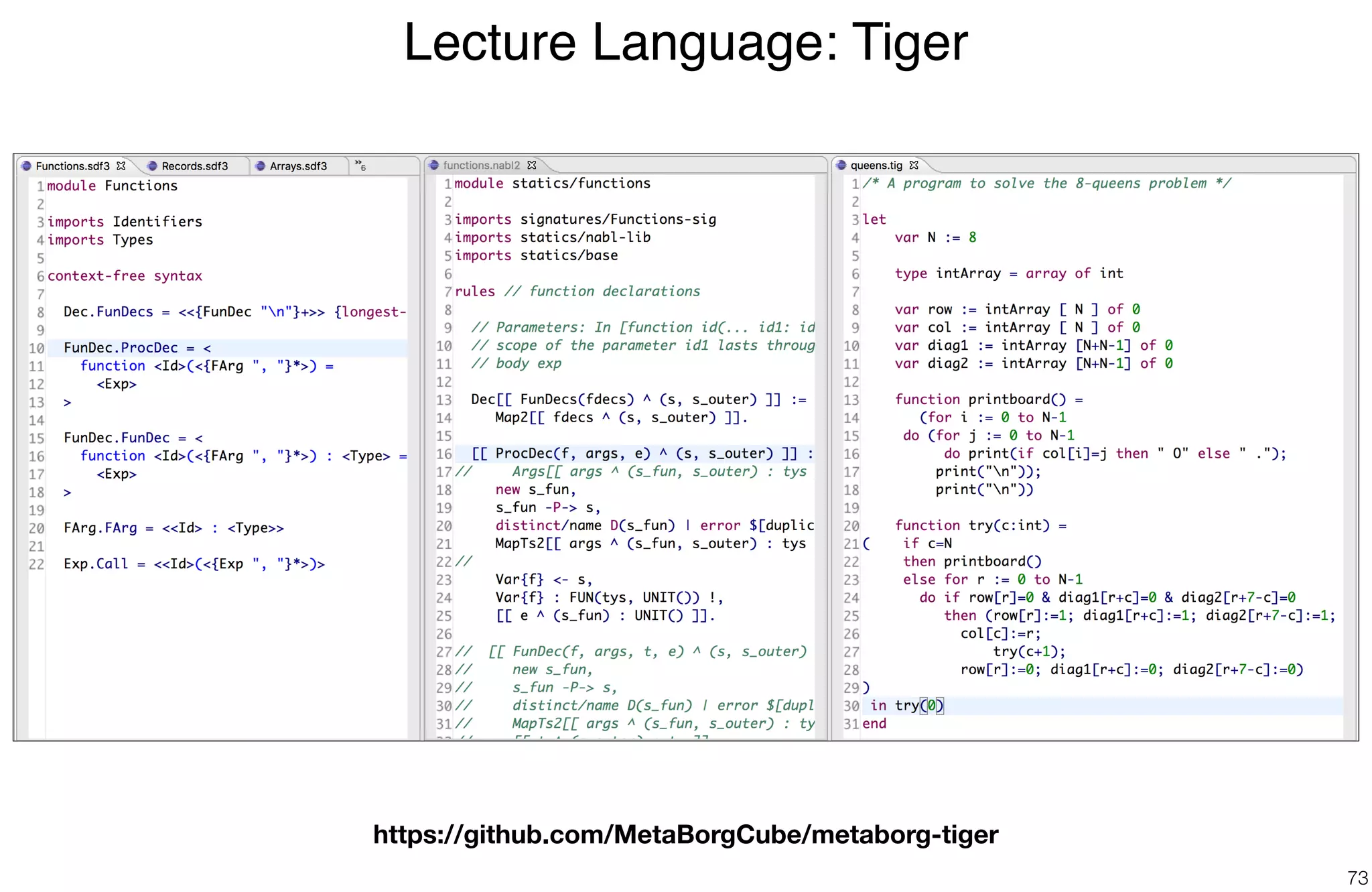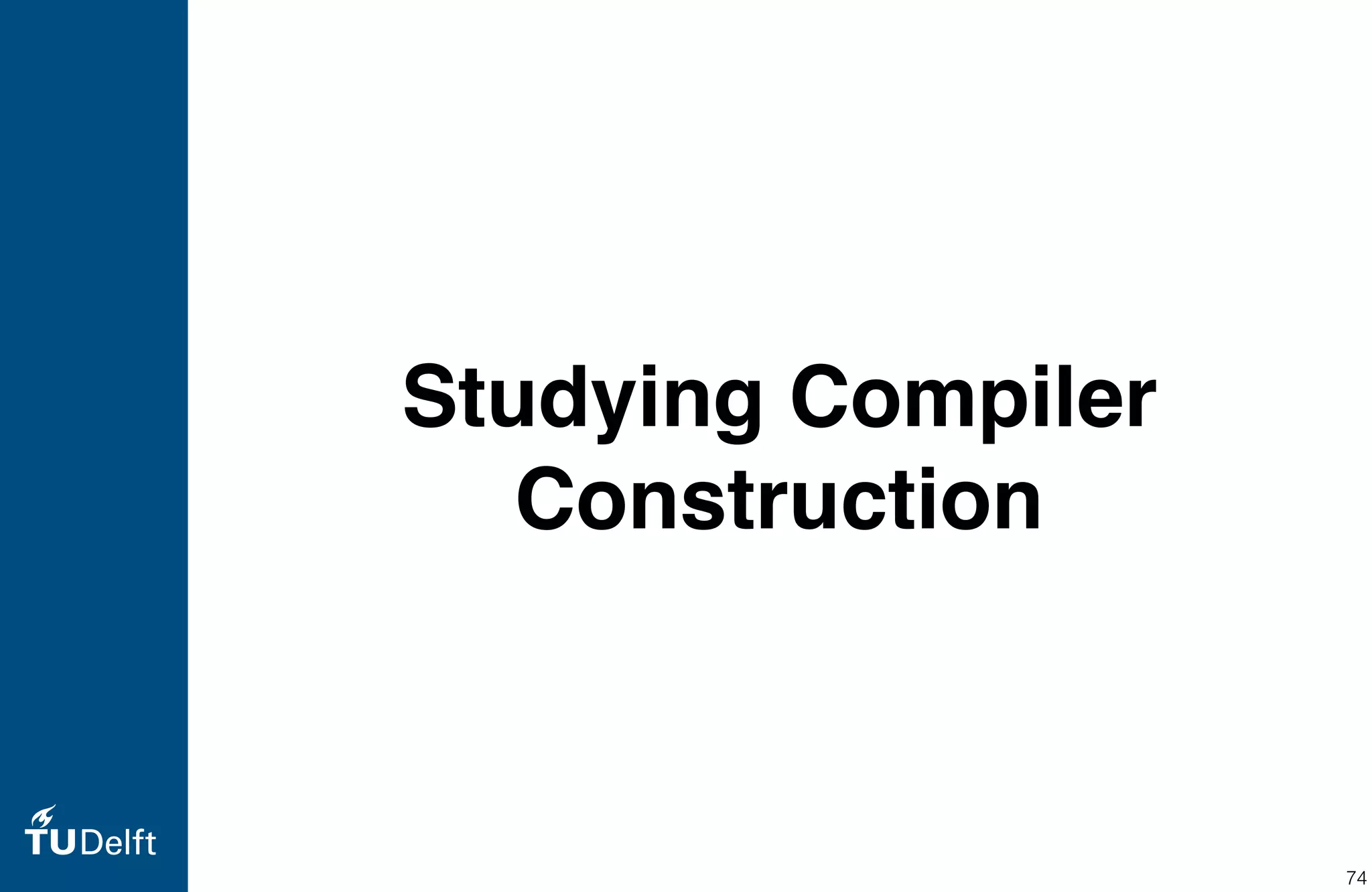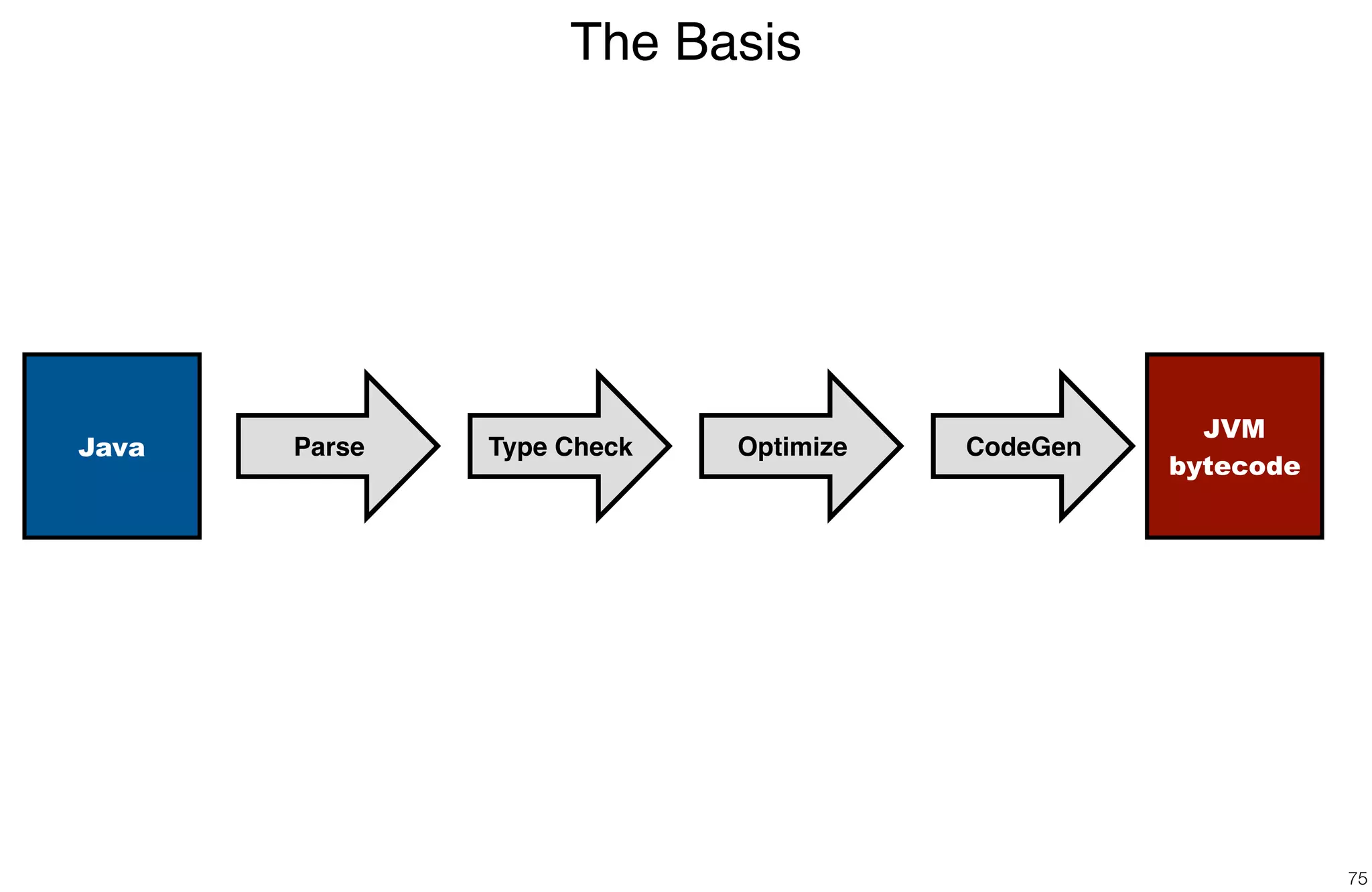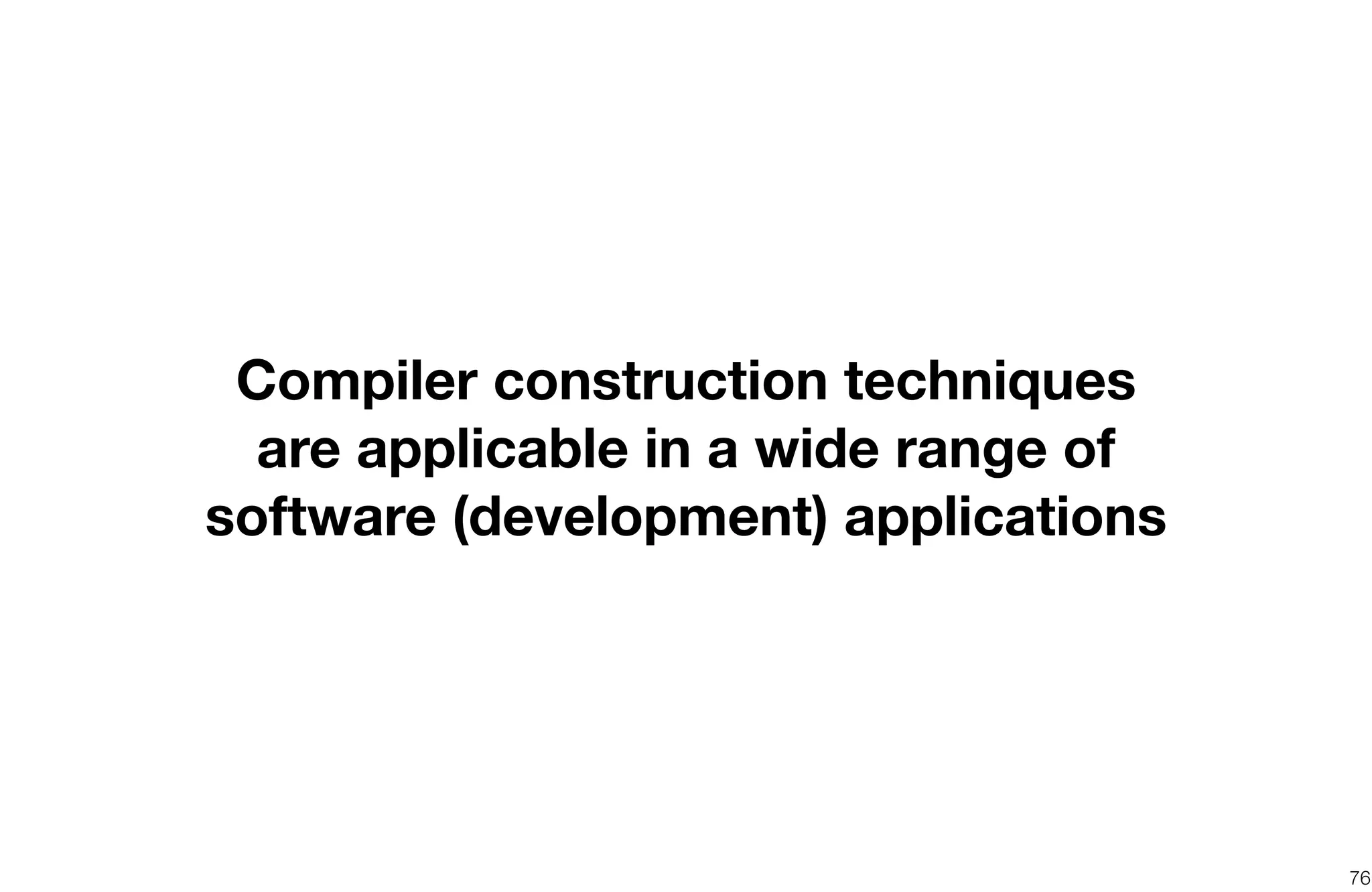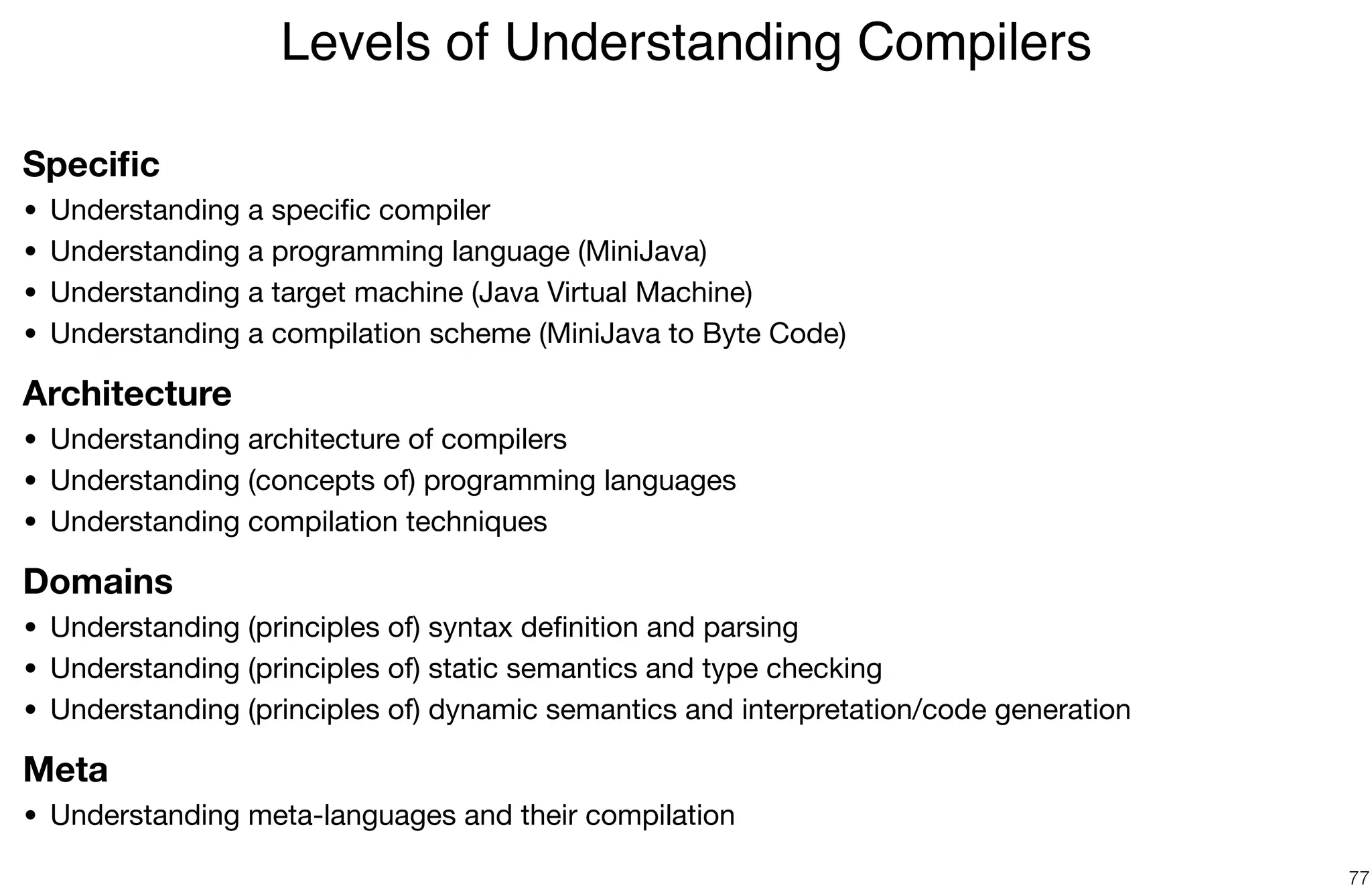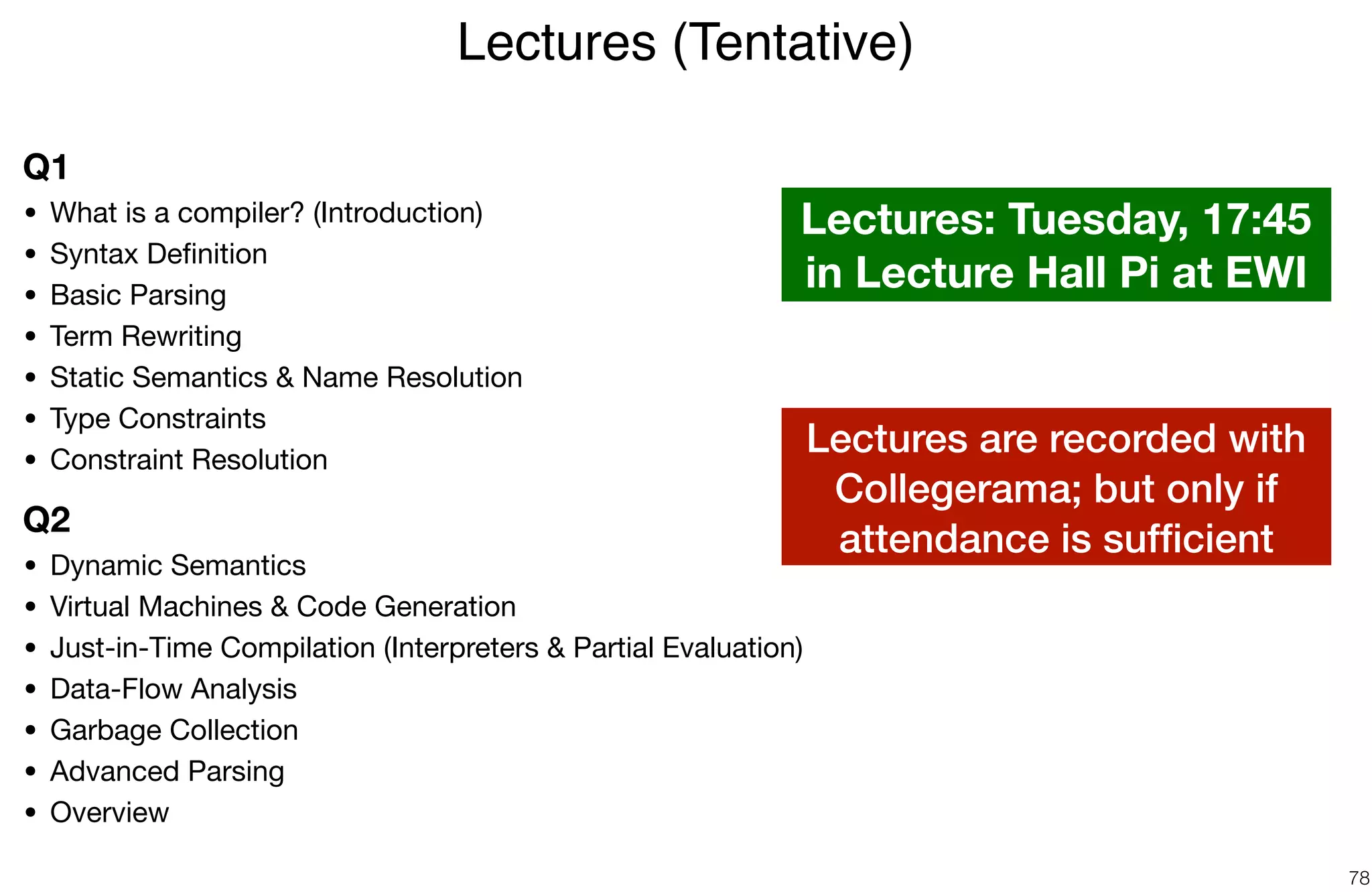The document provides an overview of the course on compiler construction, including information on the course organization, website, assignments, and deadlines, as well as introducing the concept of what a compiler is and the different types of compilers. It also discusses how linguistic abstractions can be used to build domain-specific languages and language workbenches that support the design and implementation of programming languages through the use of declarative meta-languages.
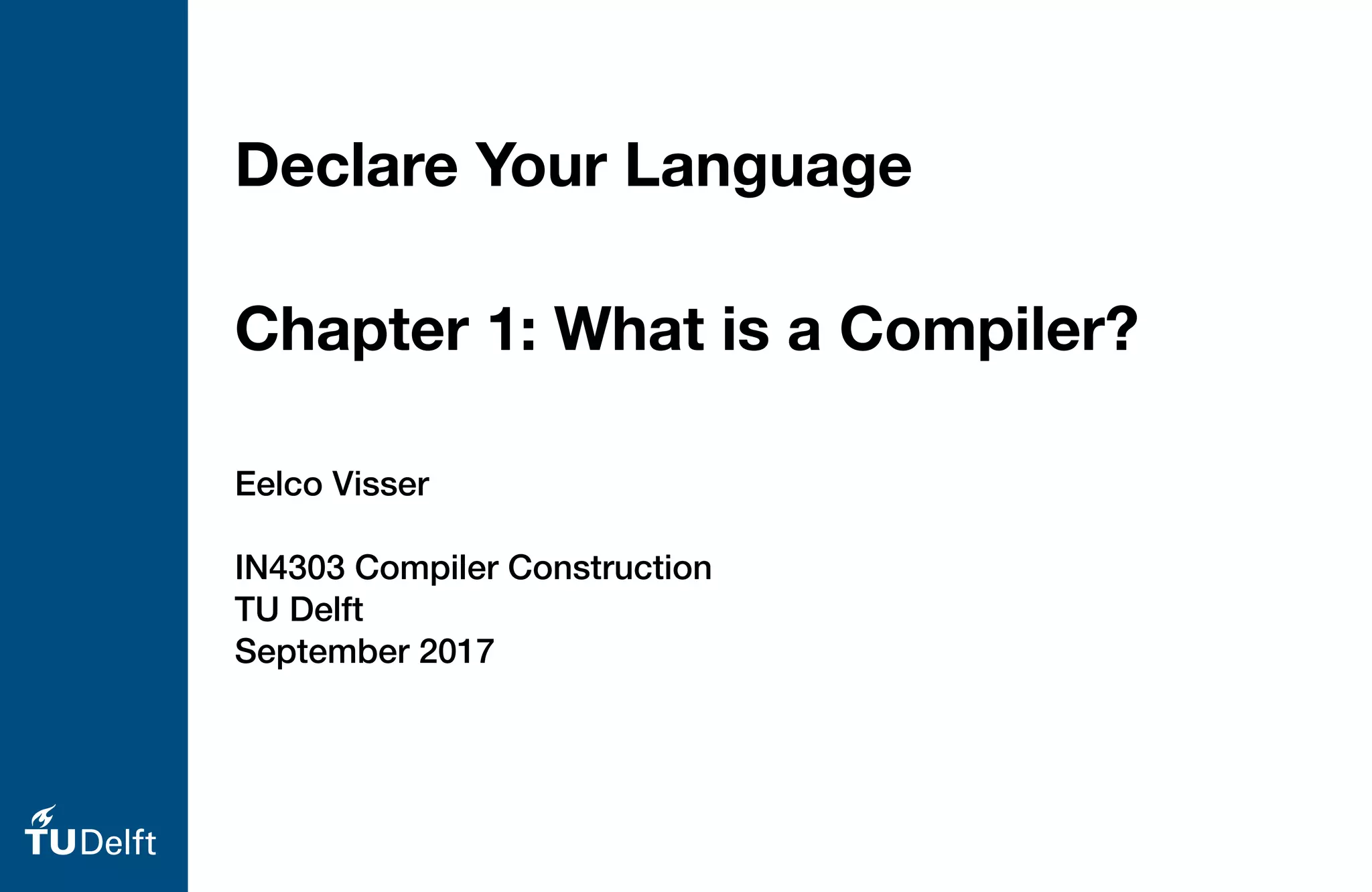

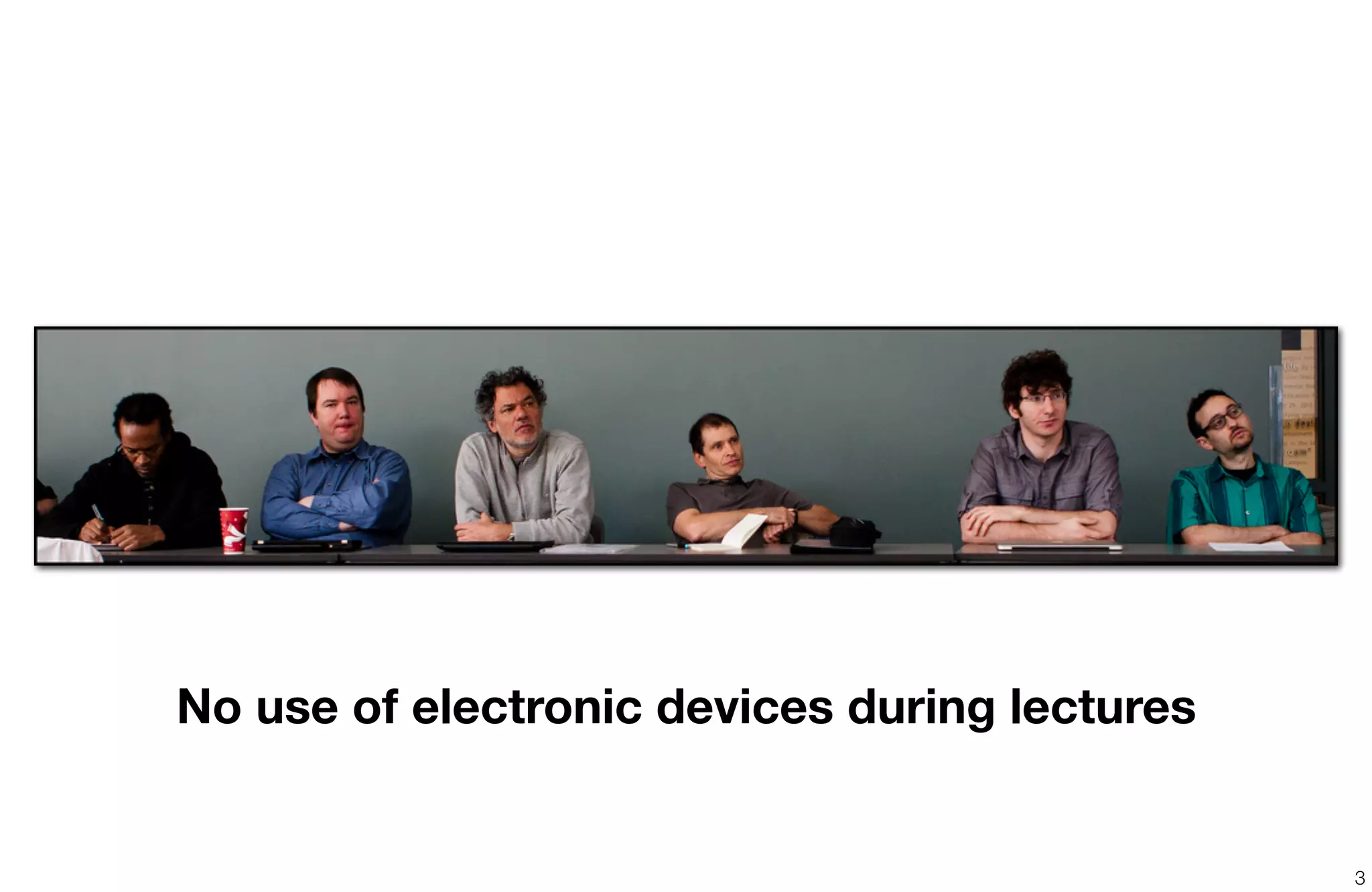
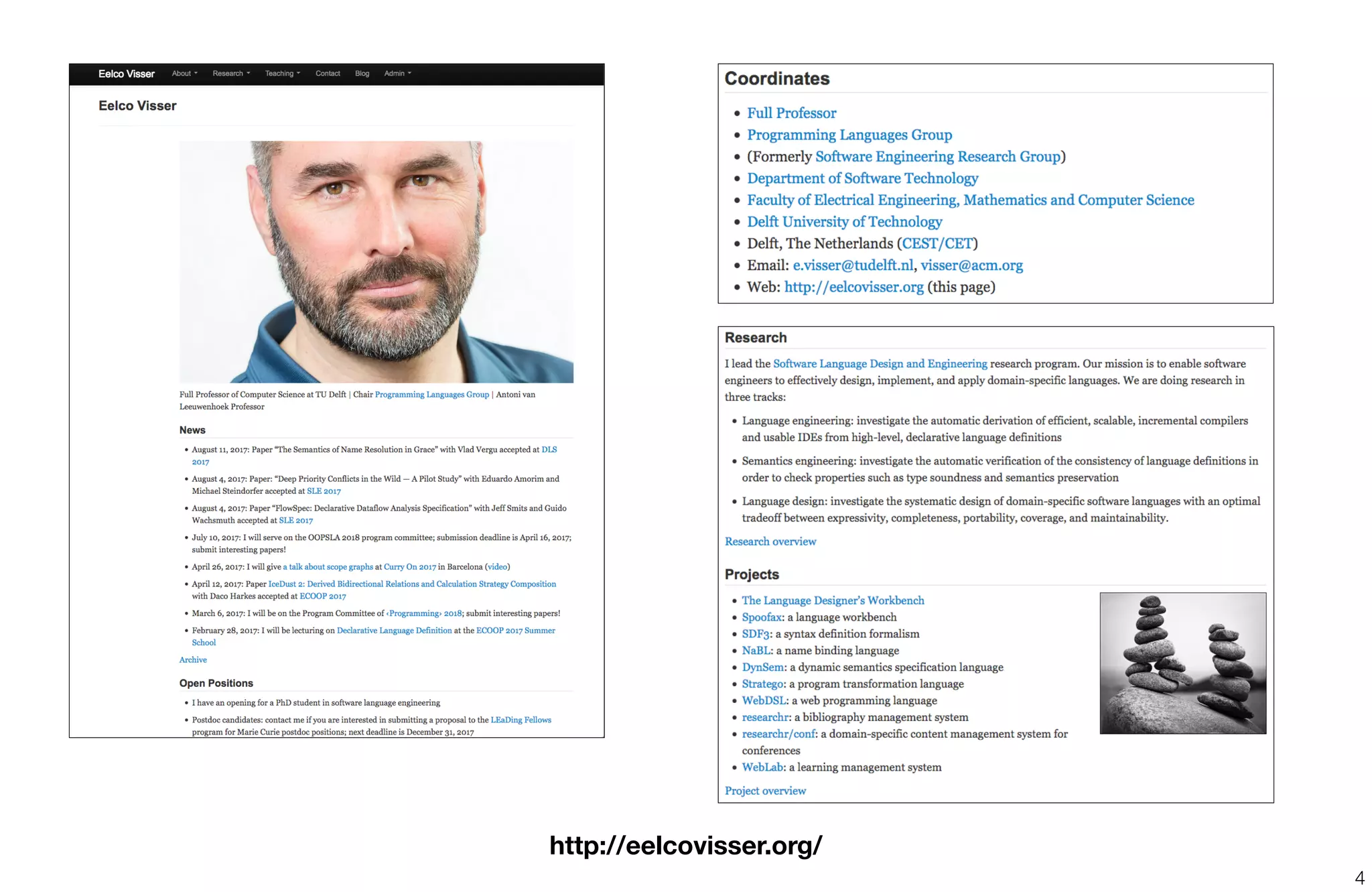
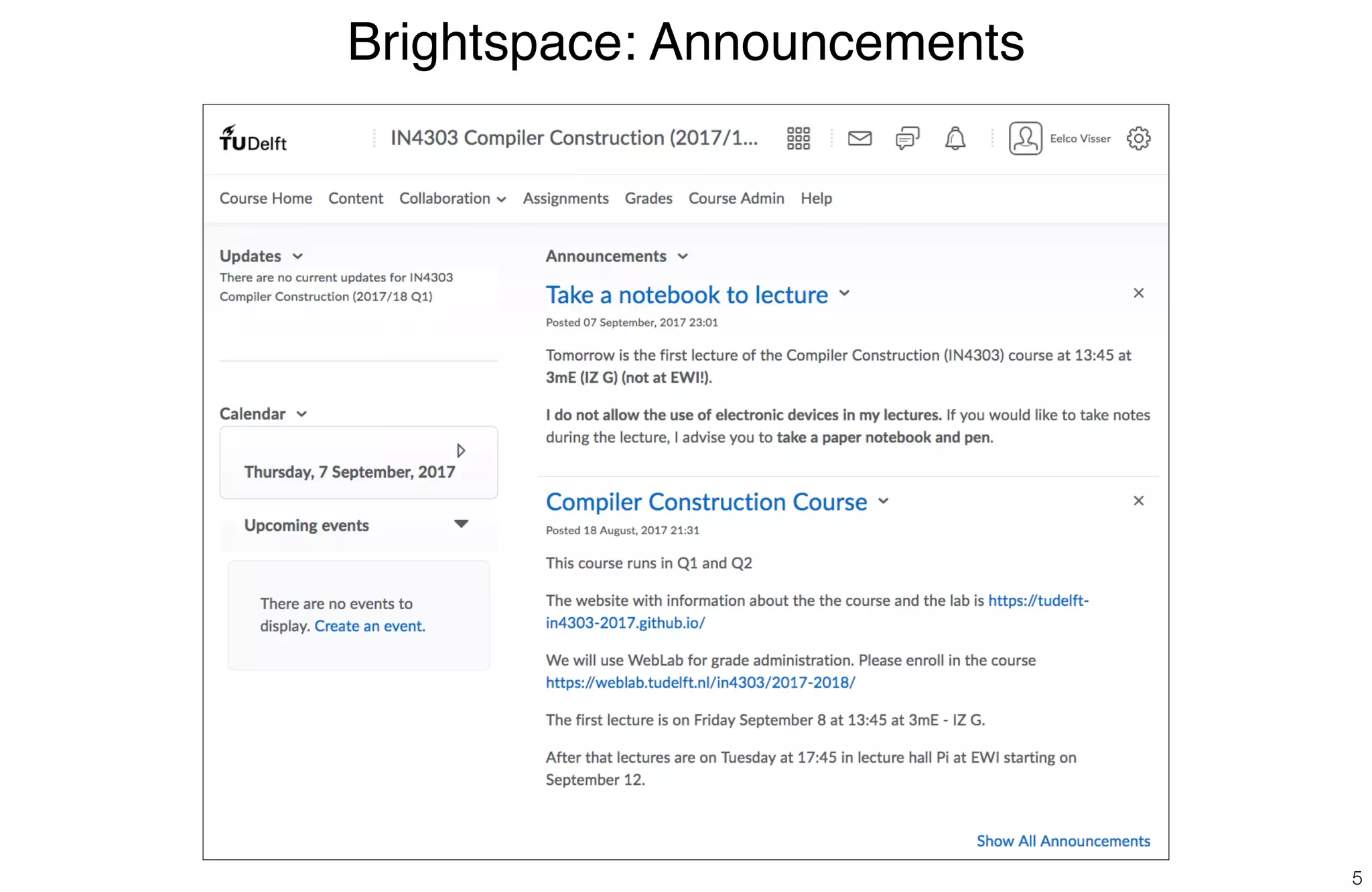
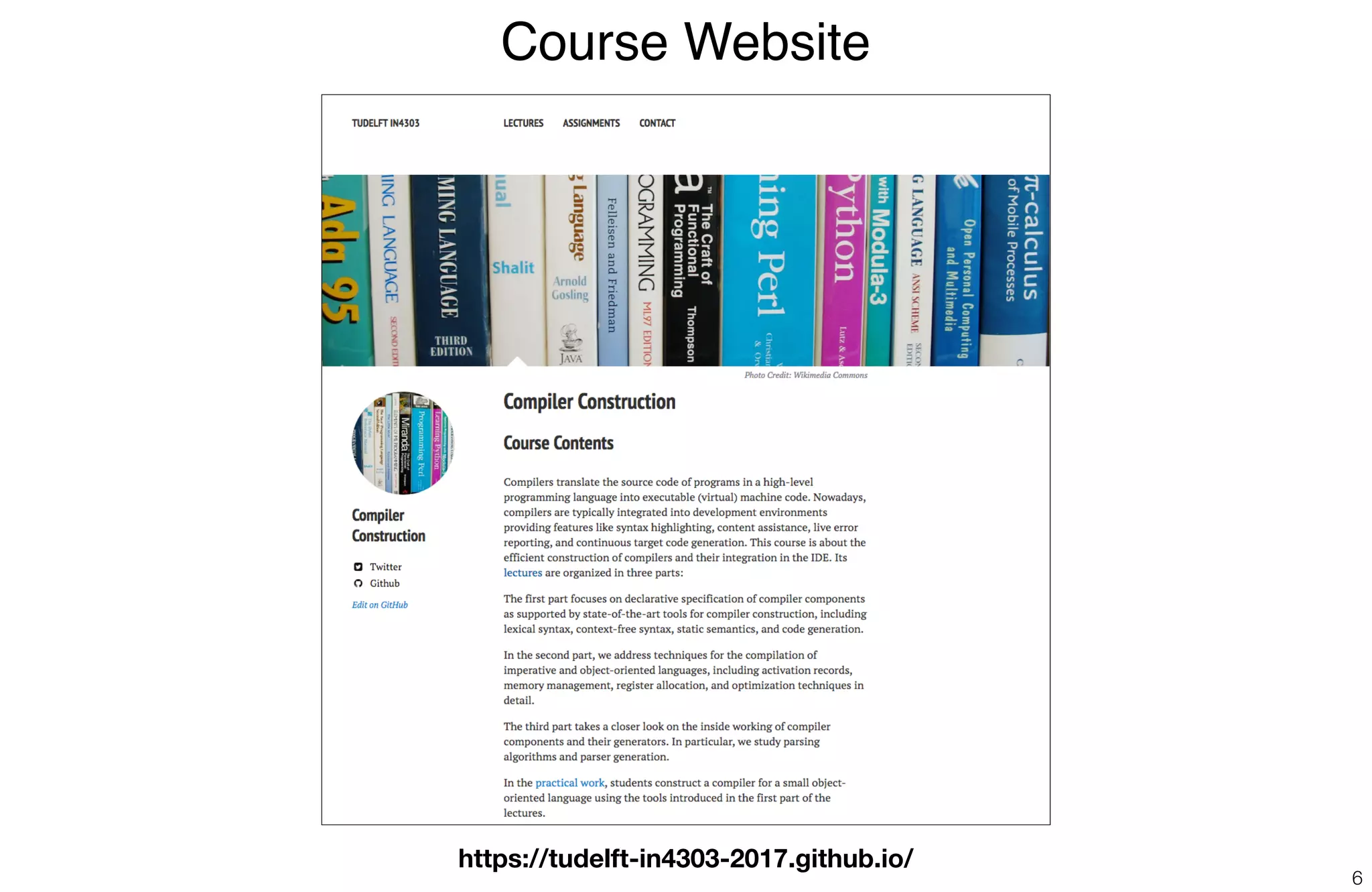

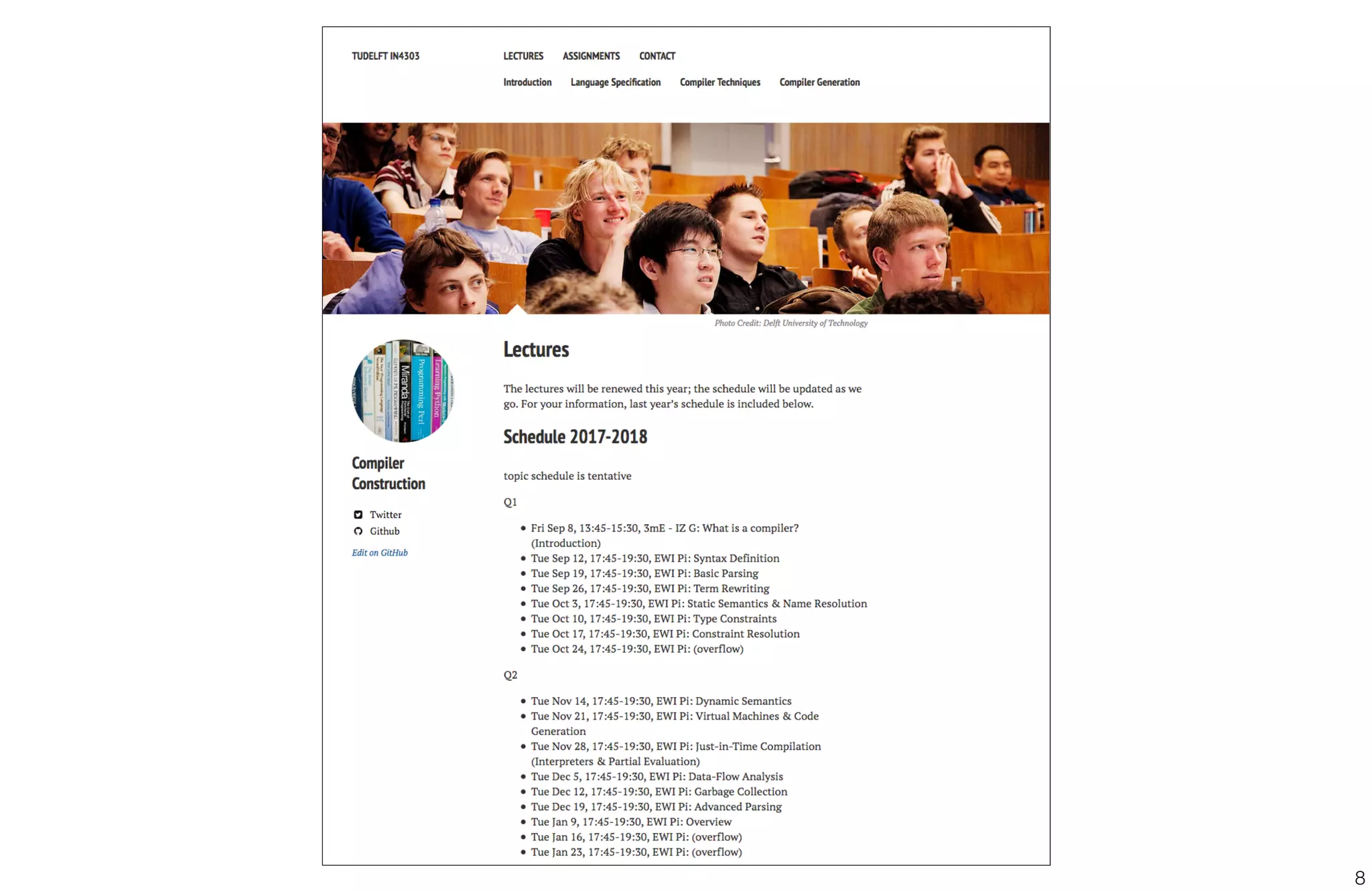

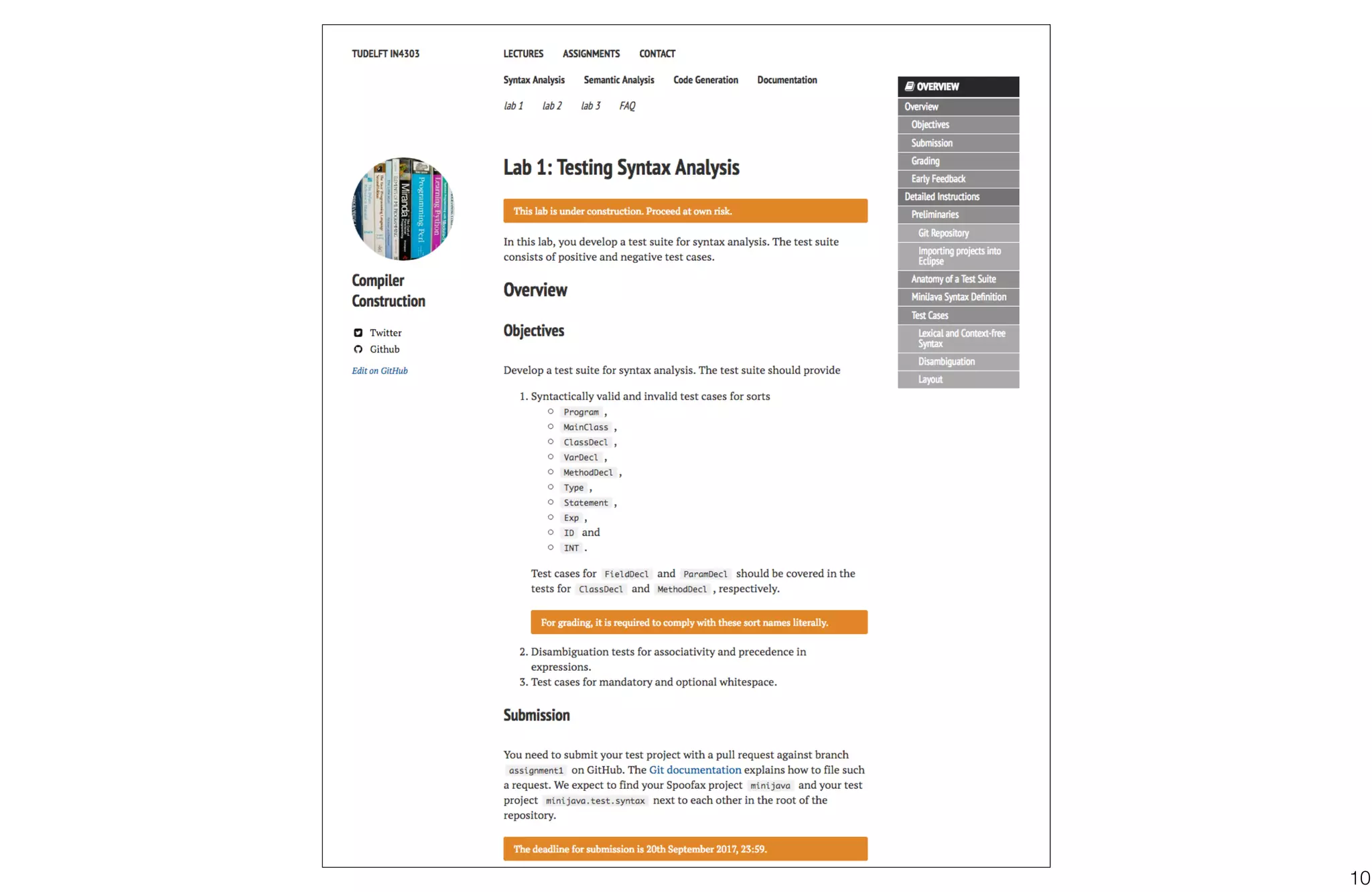
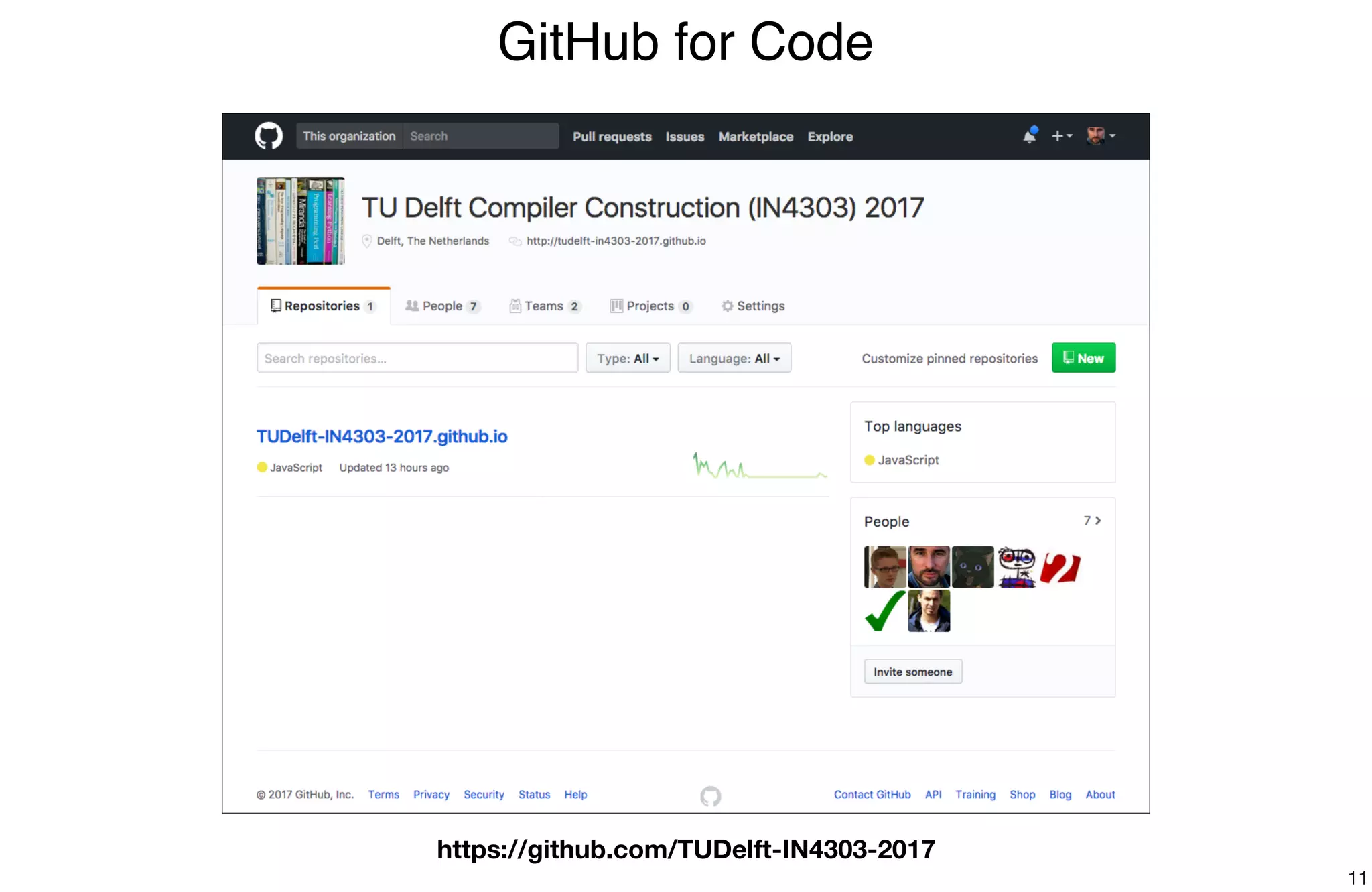
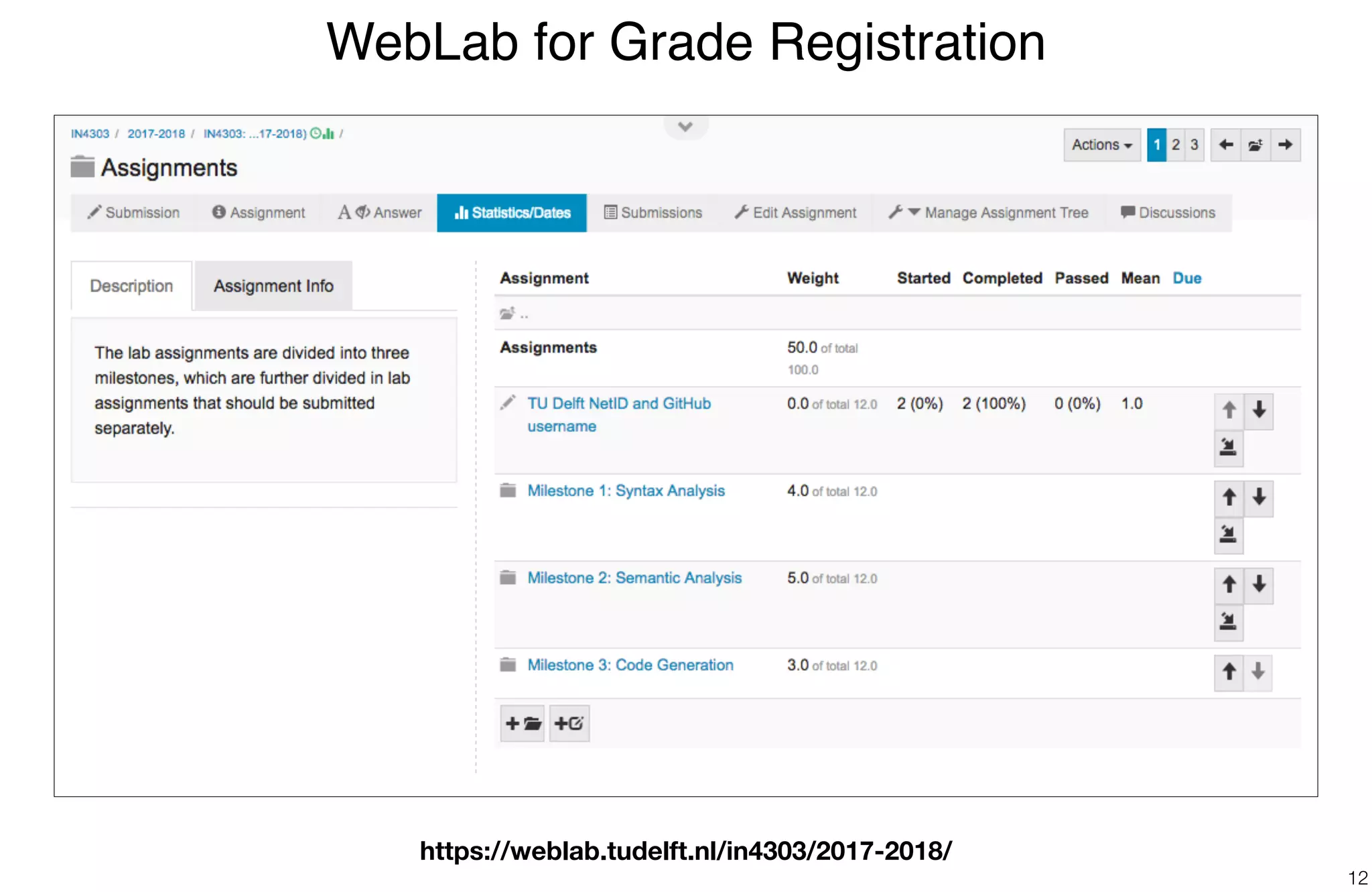

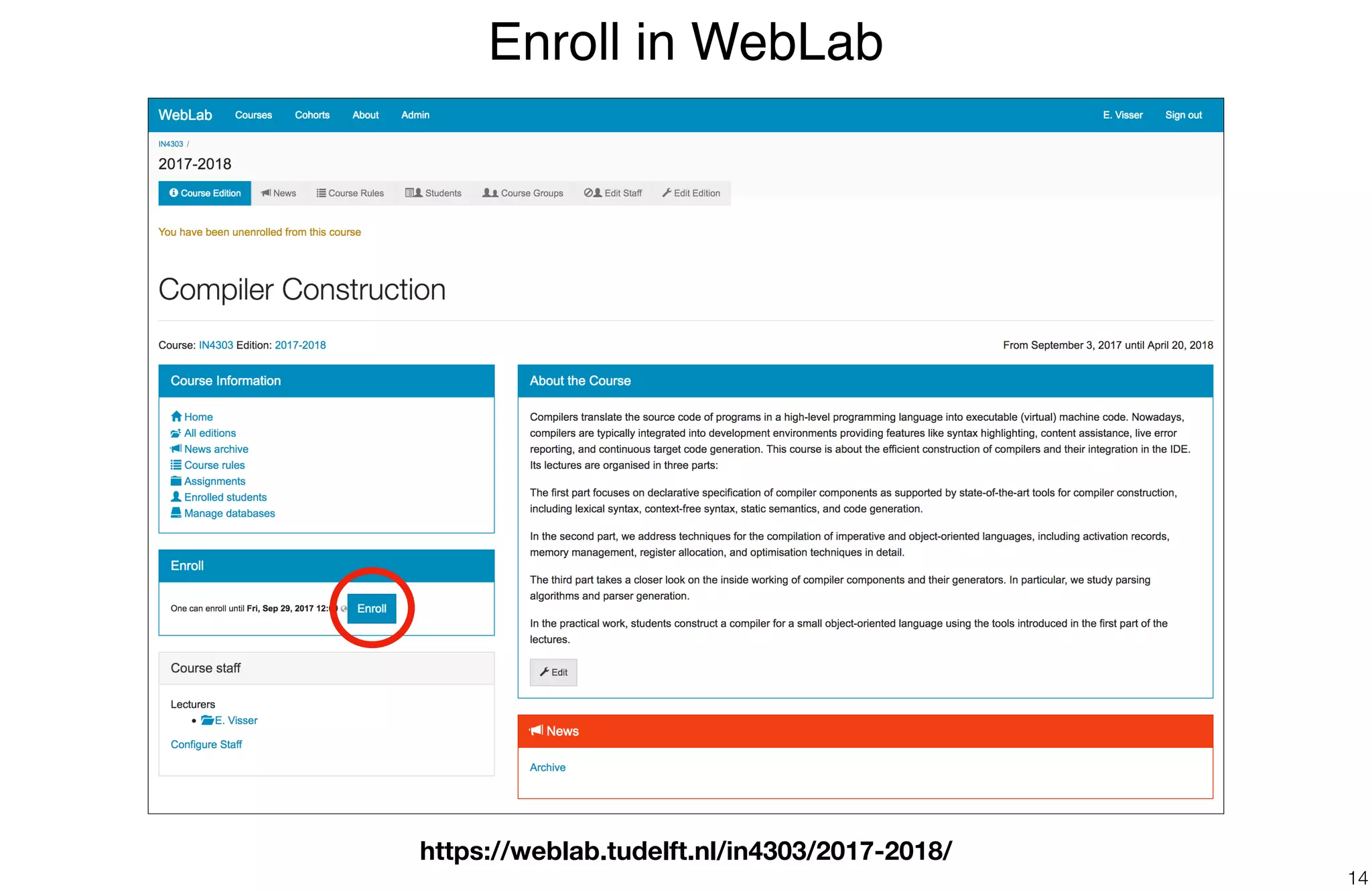
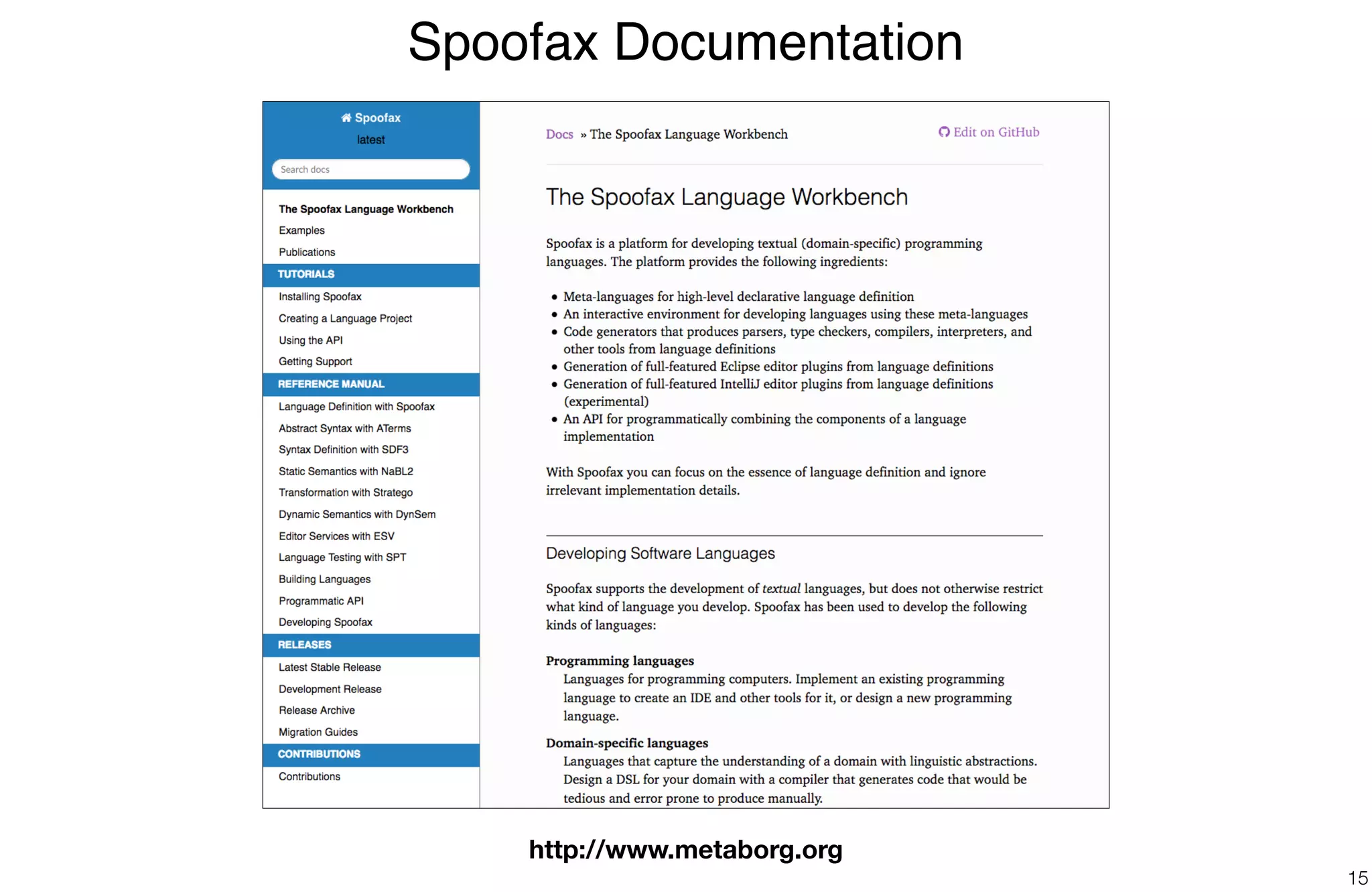
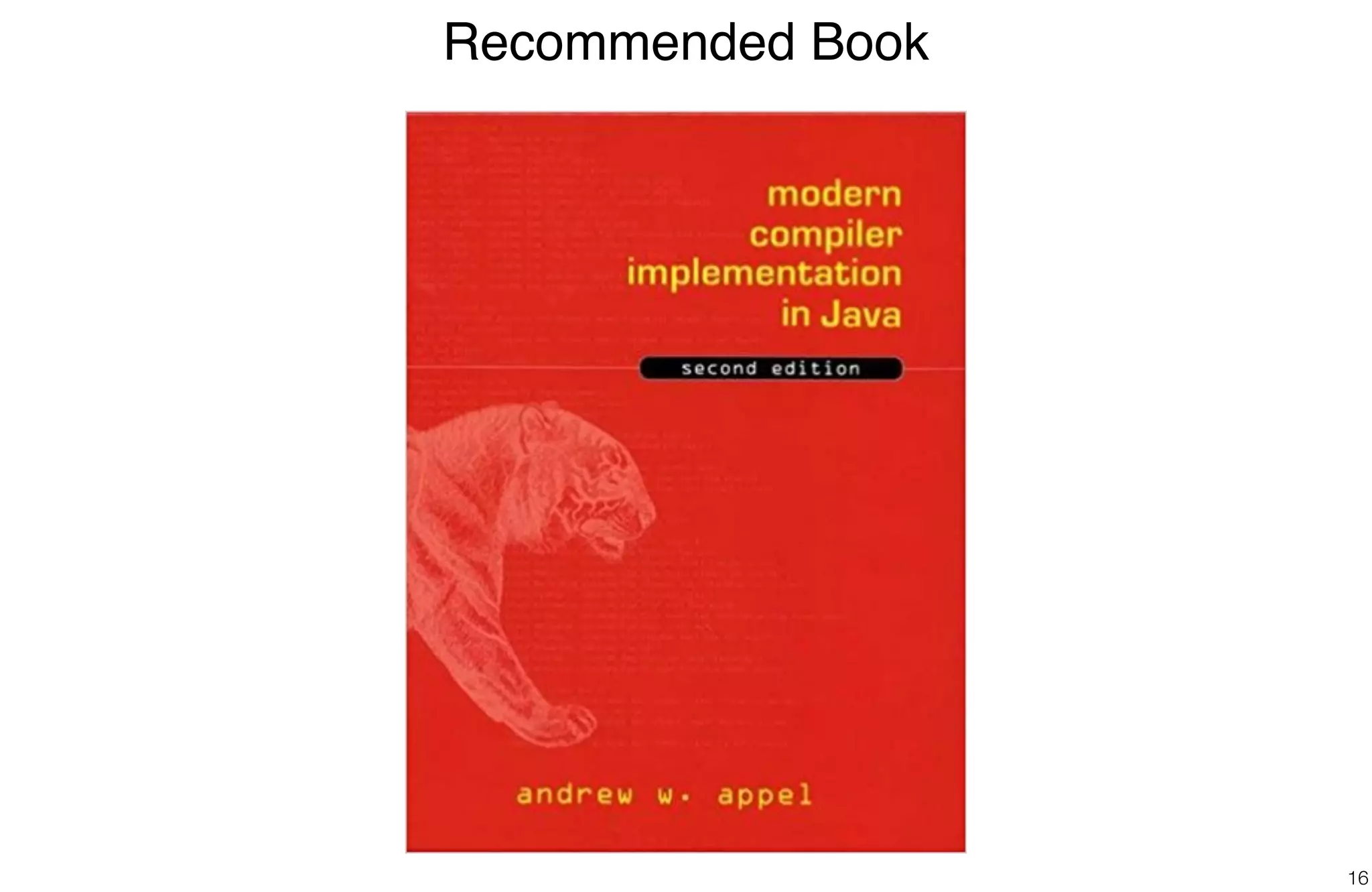
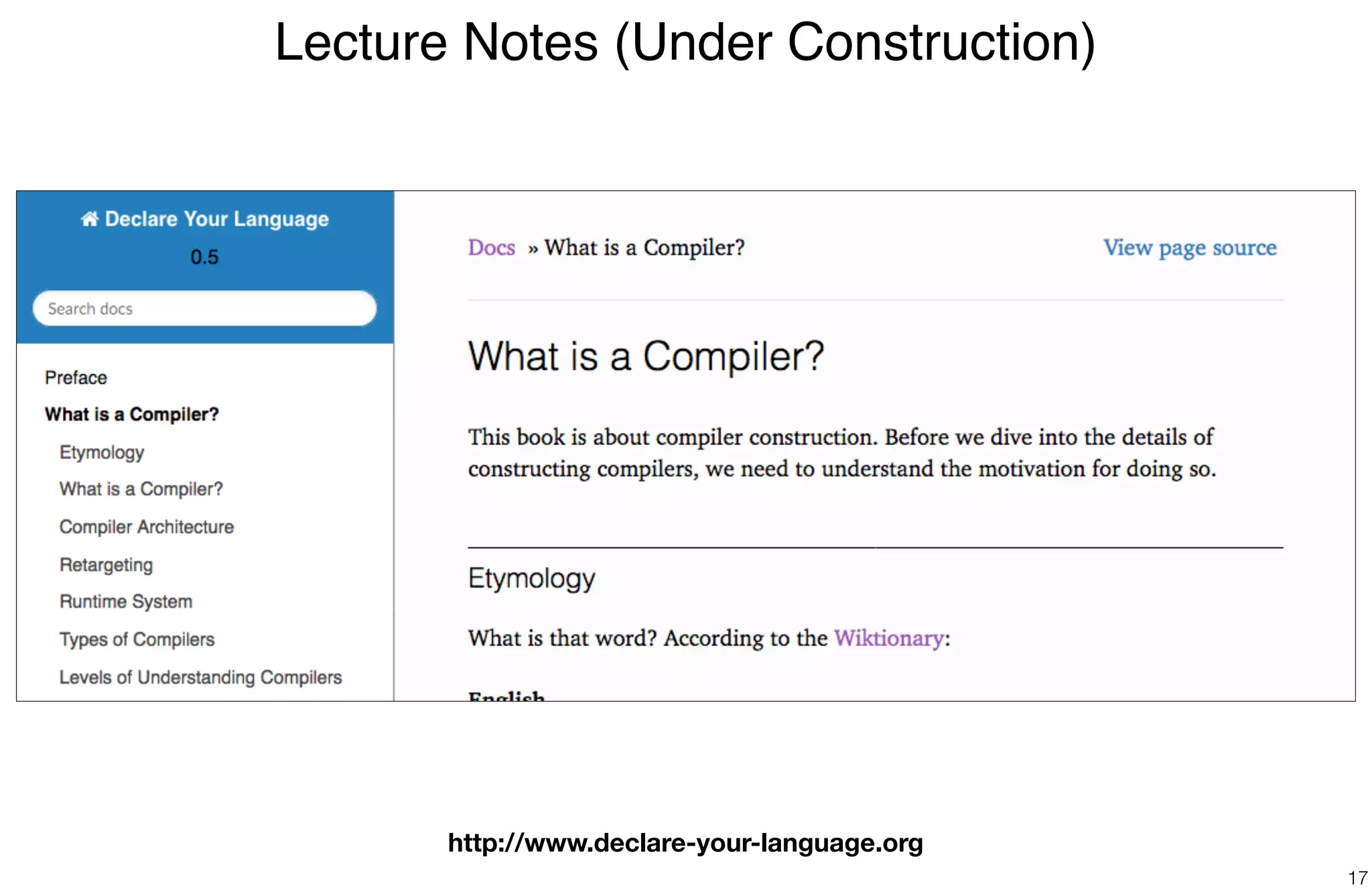
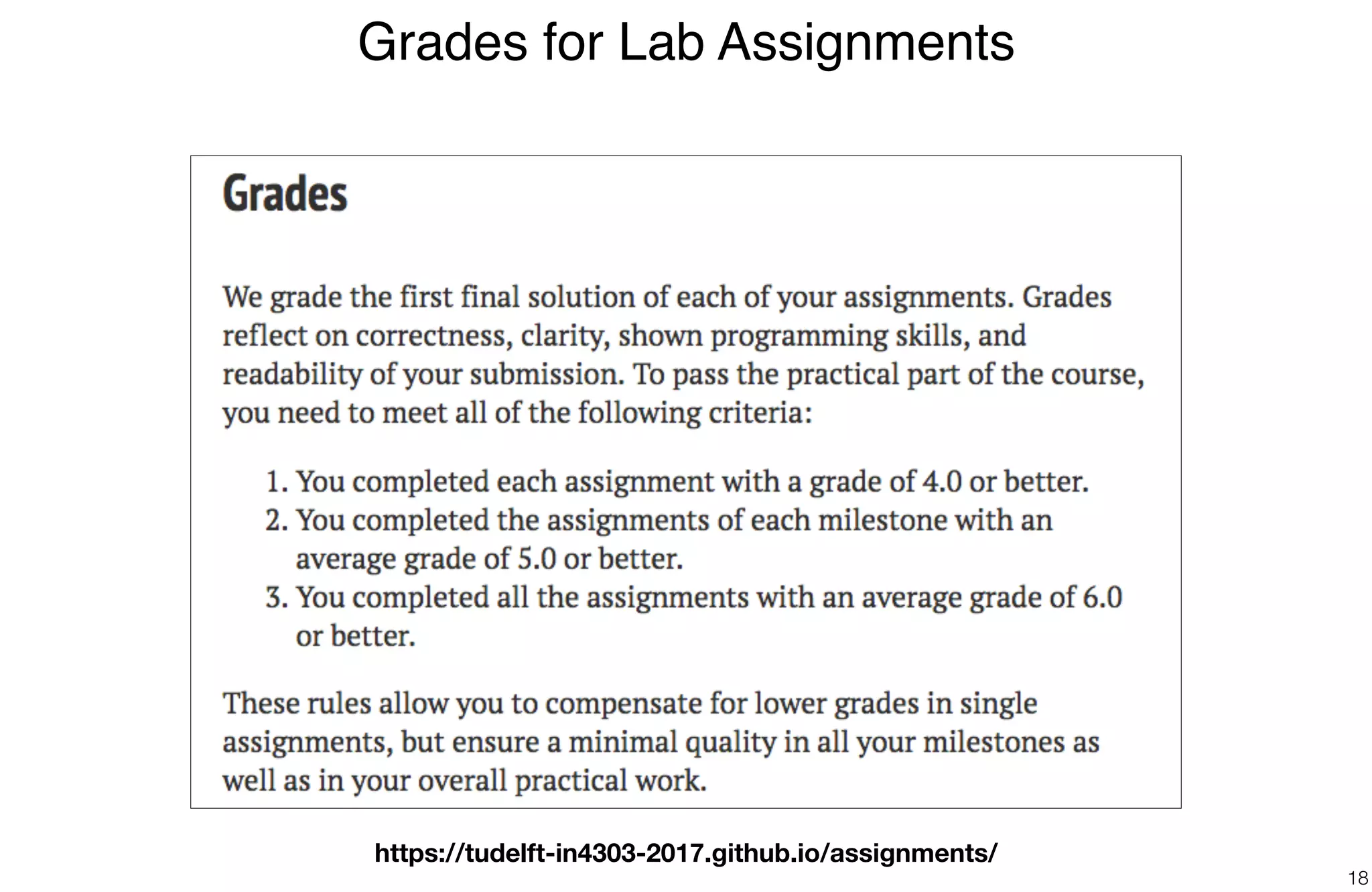
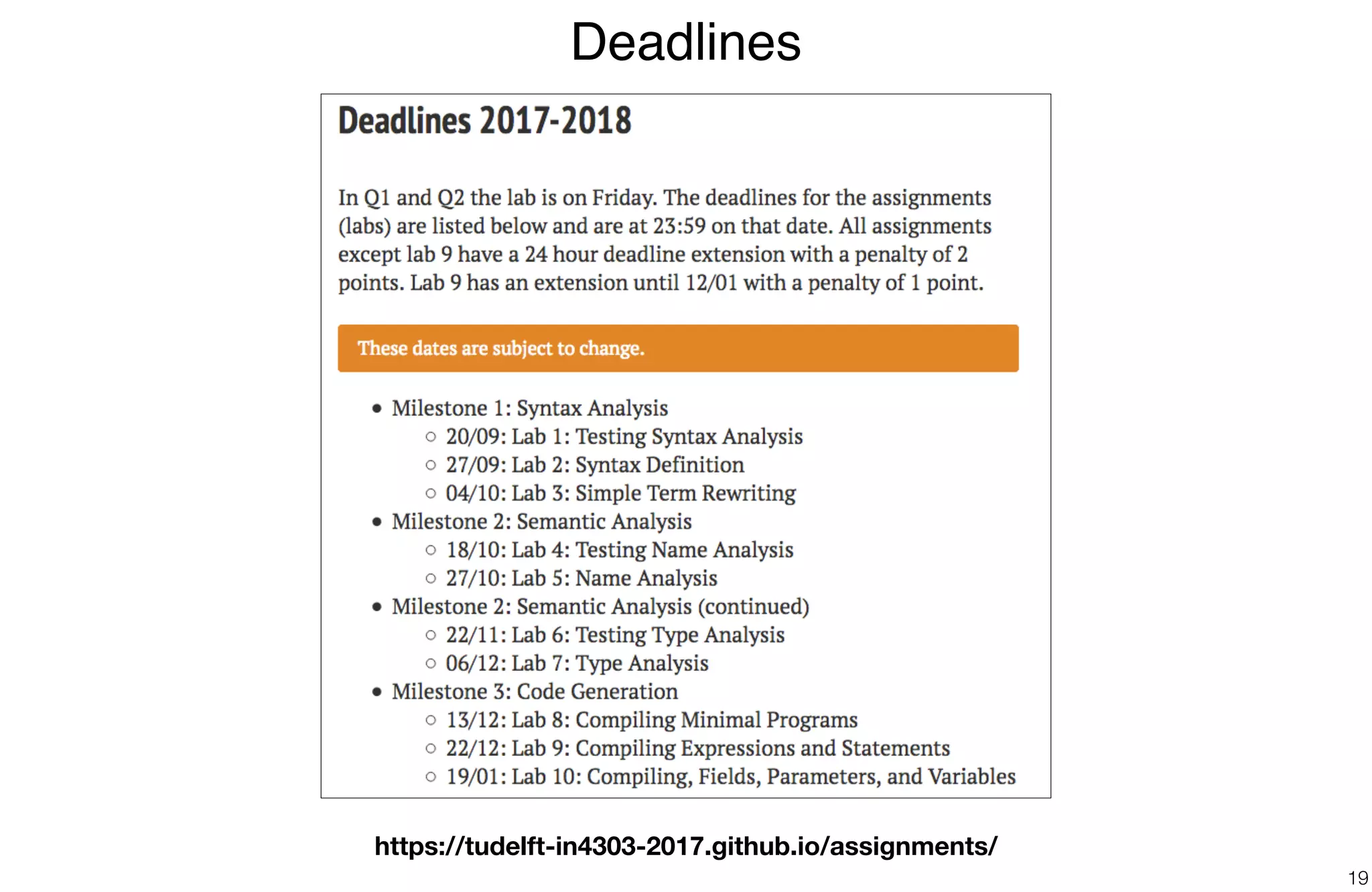
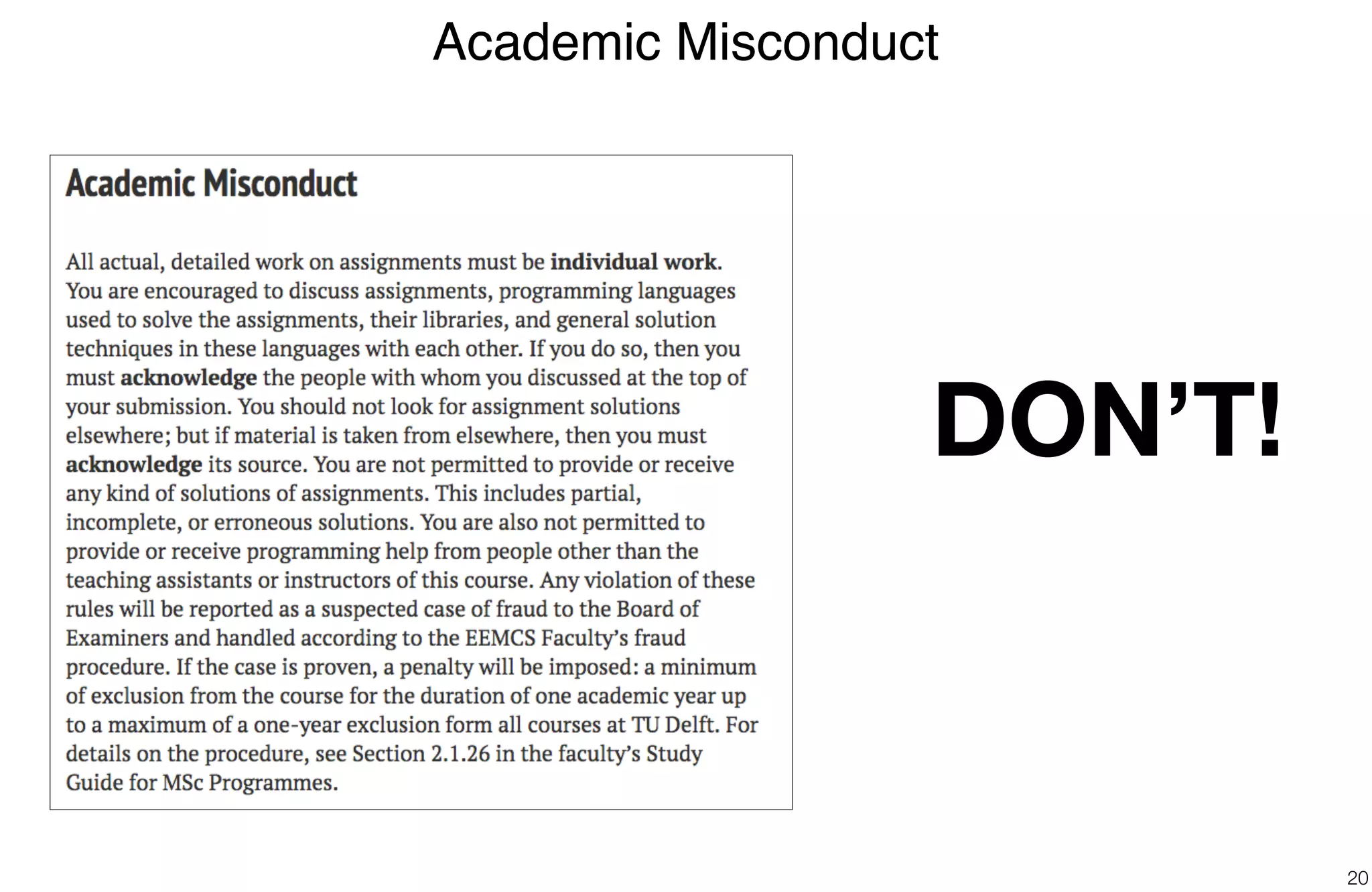
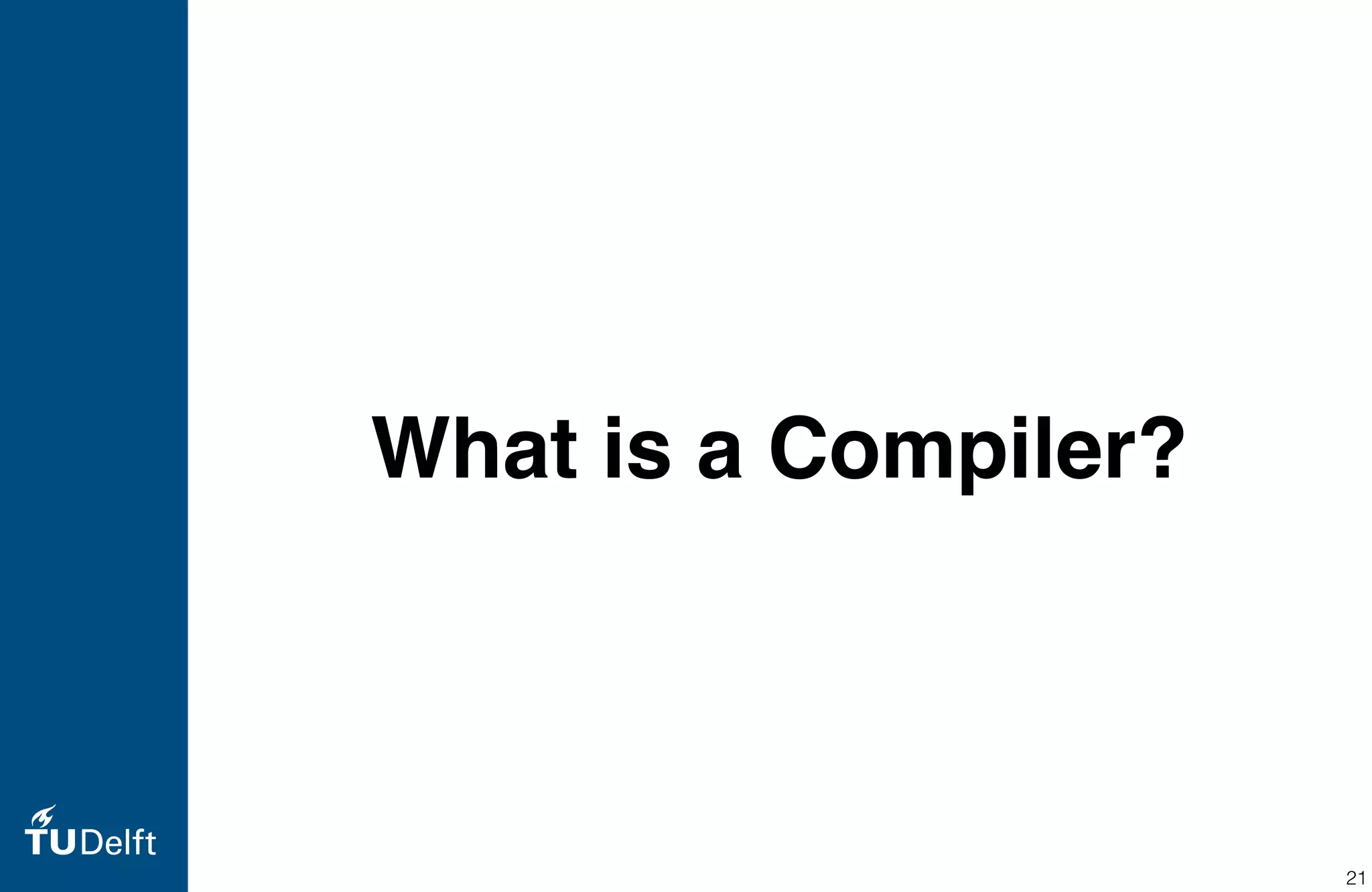
![Etymology
22
Latin
Etymology
From con- (“with, together”) + pīlō (“ram down”).
Pronunciation
• (Classical) IPA(key): /komˈpiː.loː/, [kɔmˈpiː.ɫoː]
Verb
compīlō (present infinitive compīlāre, perfect active compīlāvī, supine
compīlātum); first conjugation
1. I snatch together and carry off; plunder, pillage, rob, steal.
https://en.wiktionary.org/wiki/compilo#Latin](https://image.slidesharecdn.com/dyl-introduction-170911124609/75/Declare-Your-Language-What-is-a-Compiler-22-2048.jpg)
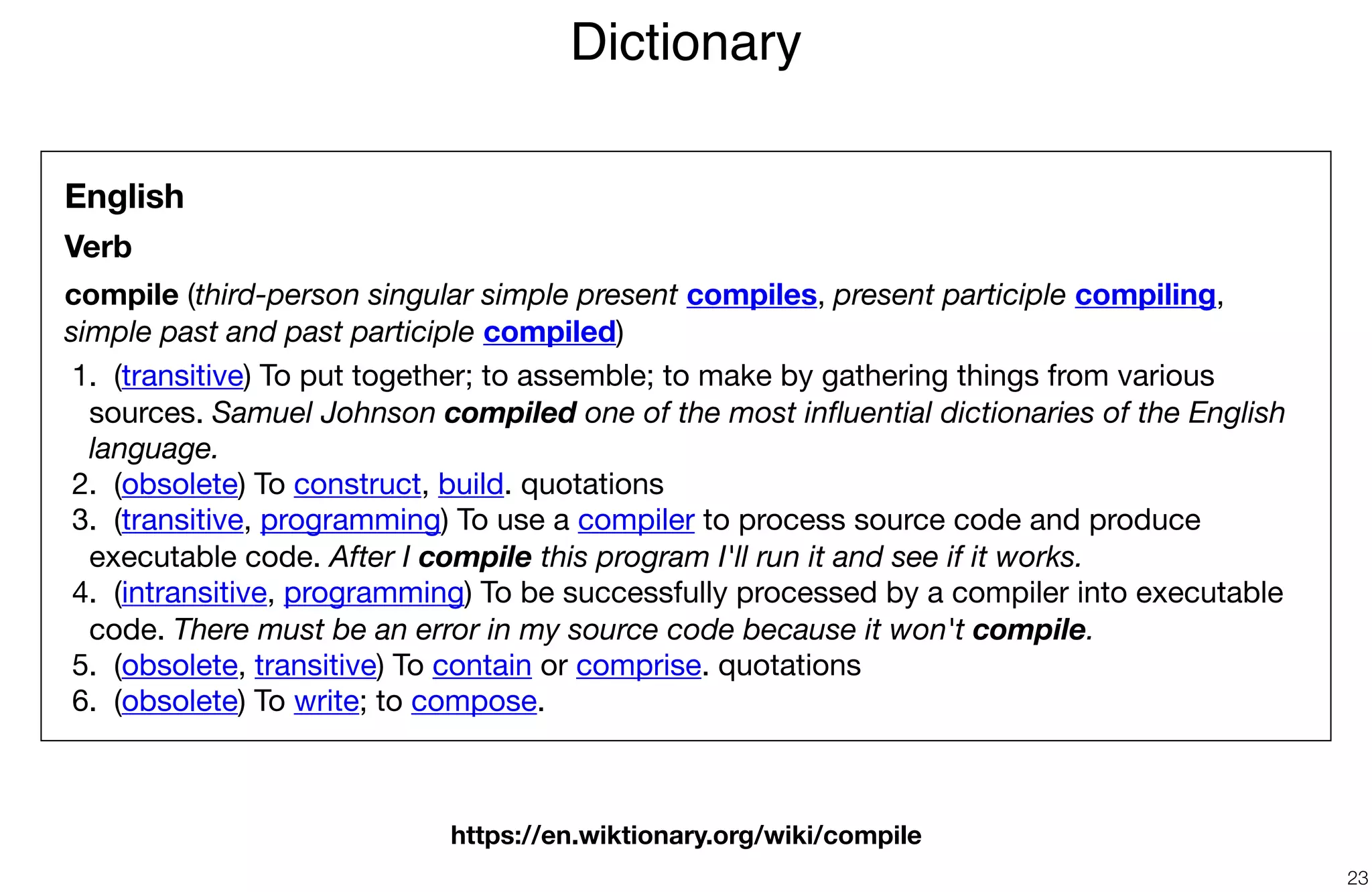
![Etymology
24
The first compiler was written by Grace Hopper, in 1952, for the A-0 System
language. The term compiler was coined by Hopper.[1][2] The A-0 functioned more
as a loader or linker than the modern notion of a compiler.
https://en.wikipedia.org/wiki/History_of_compiler_construction](https://image.slidesharecdn.com/dyl-introduction-170911124609/75/Declare-Your-Language-What-is-a-Compiler-24-2048.jpg)
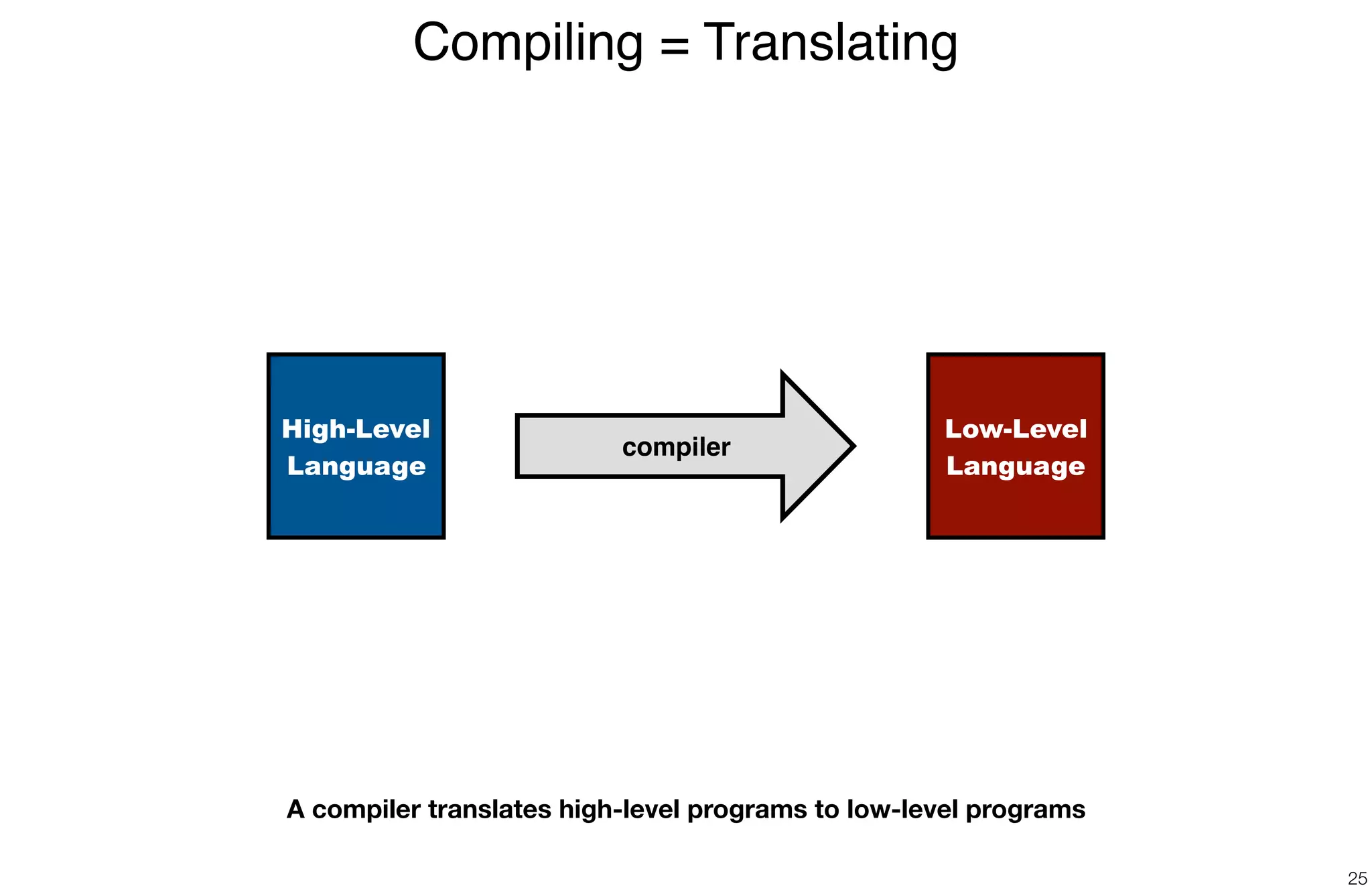
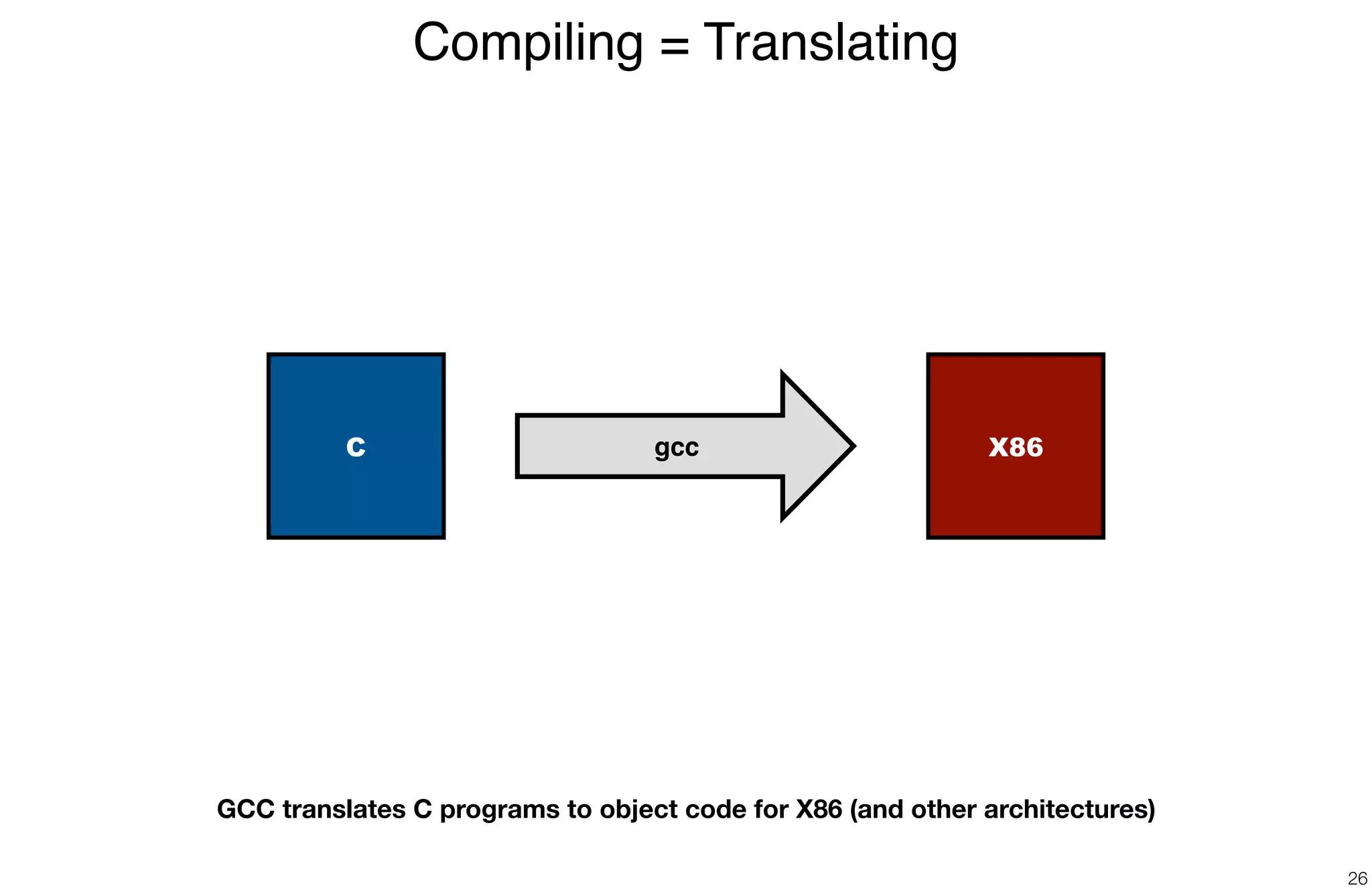
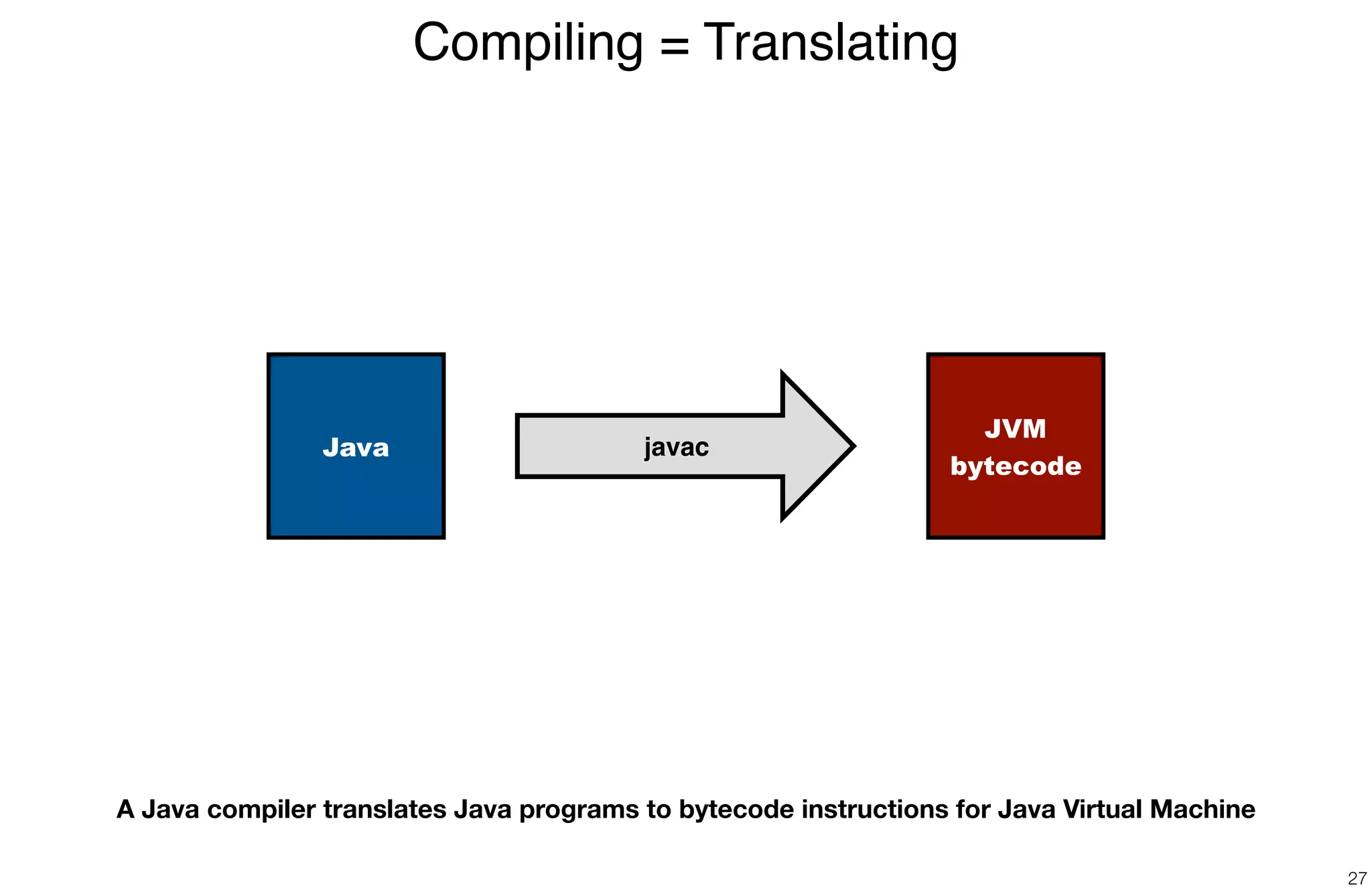
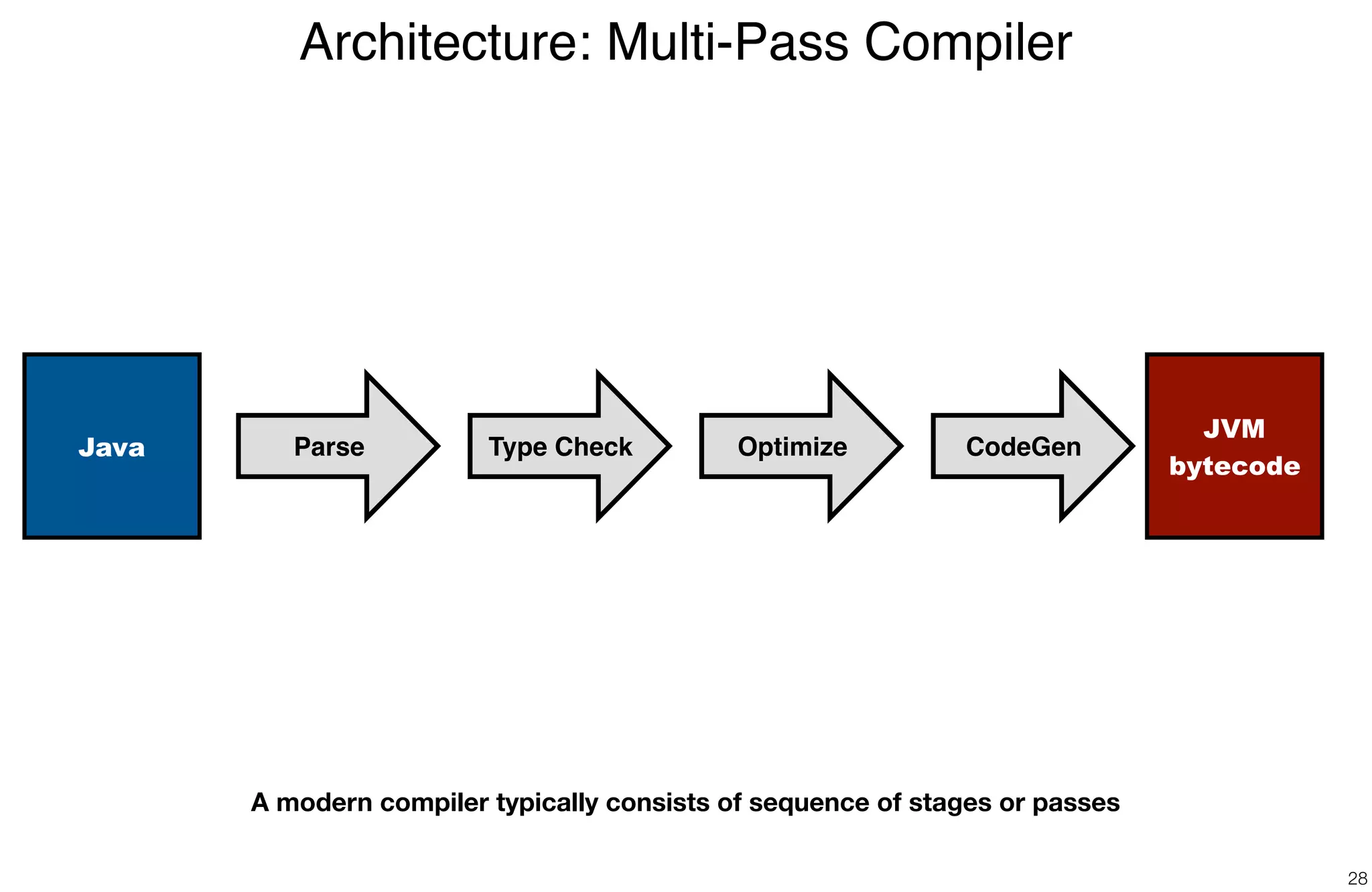
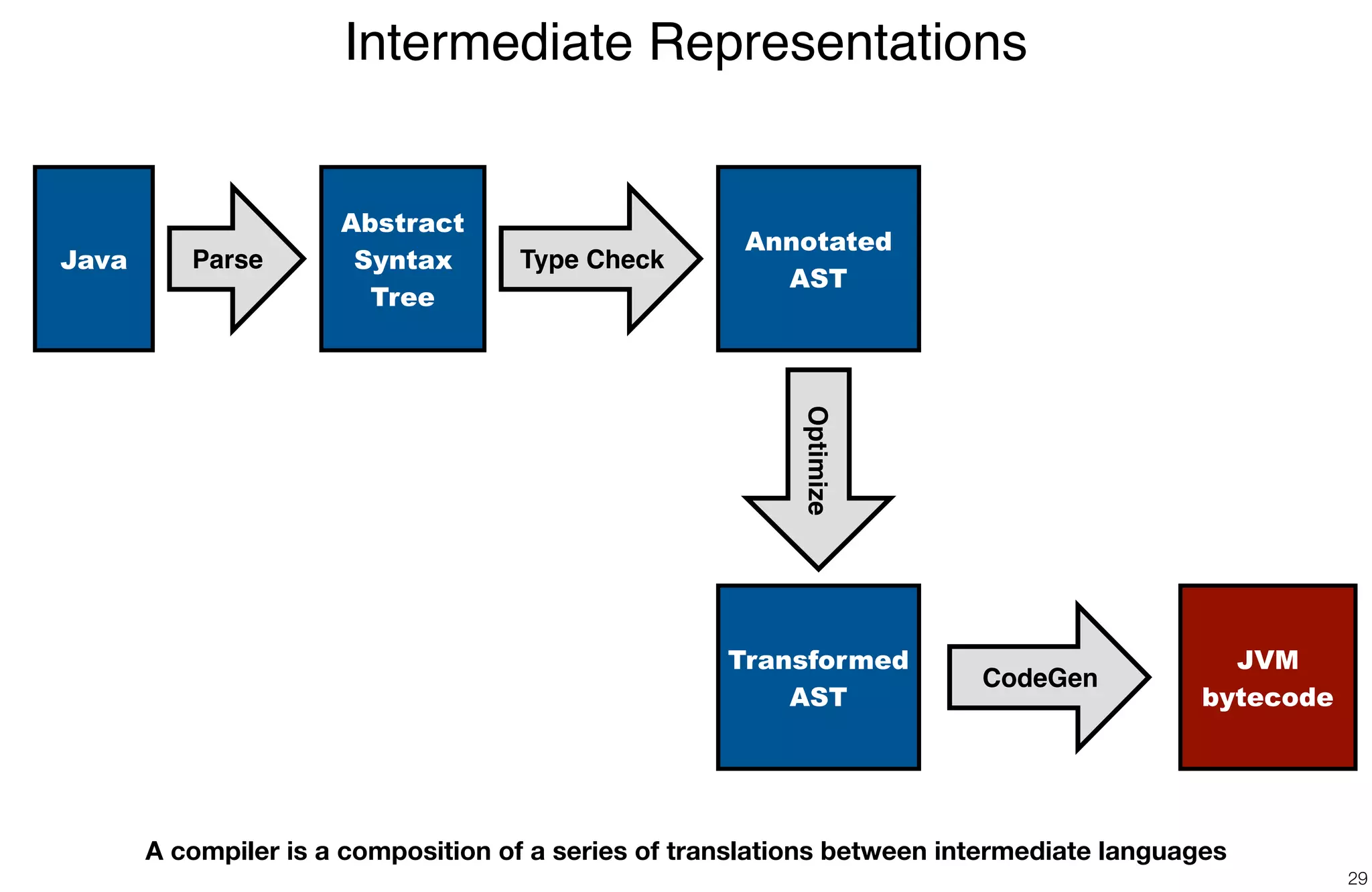
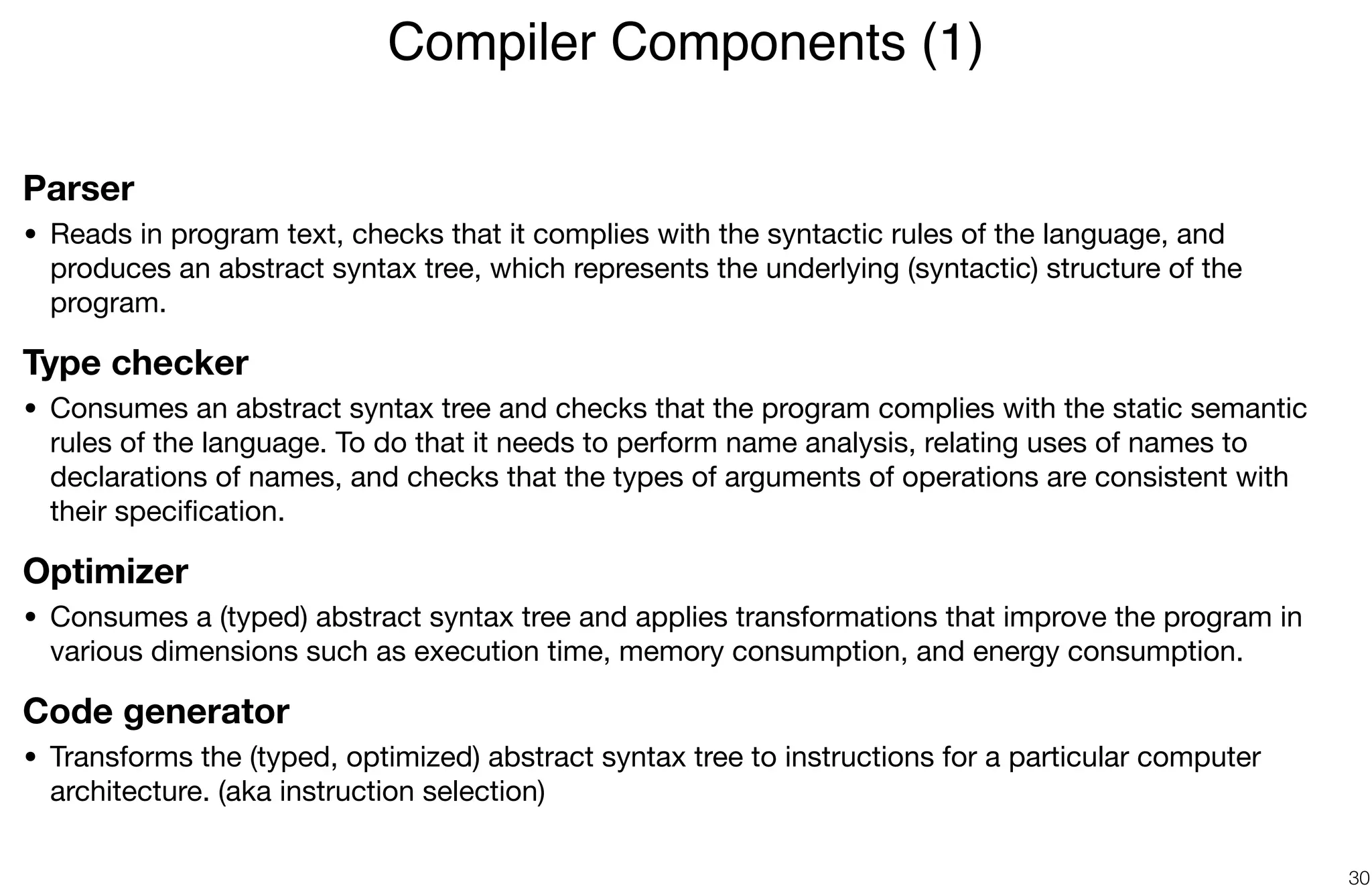

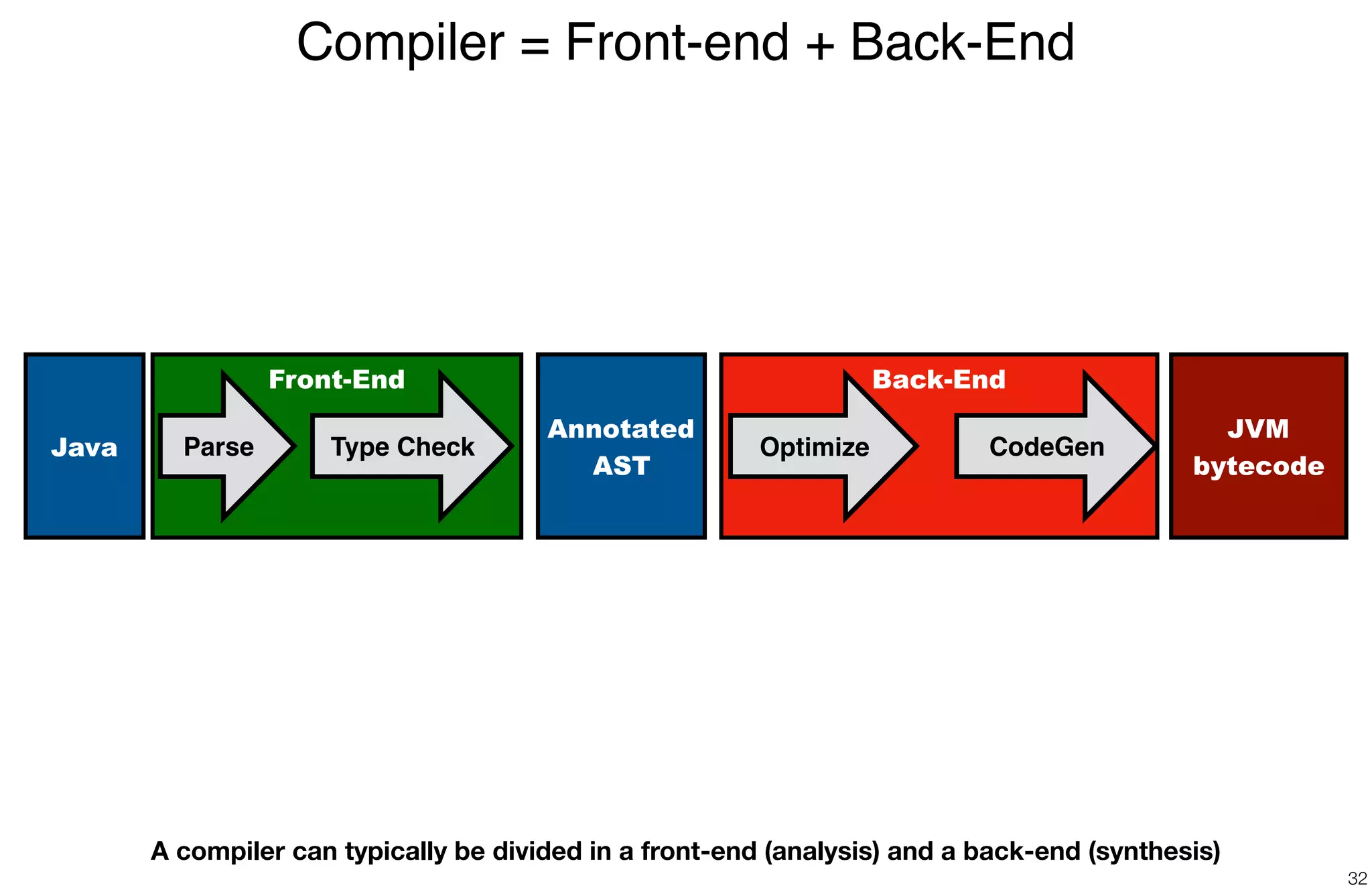

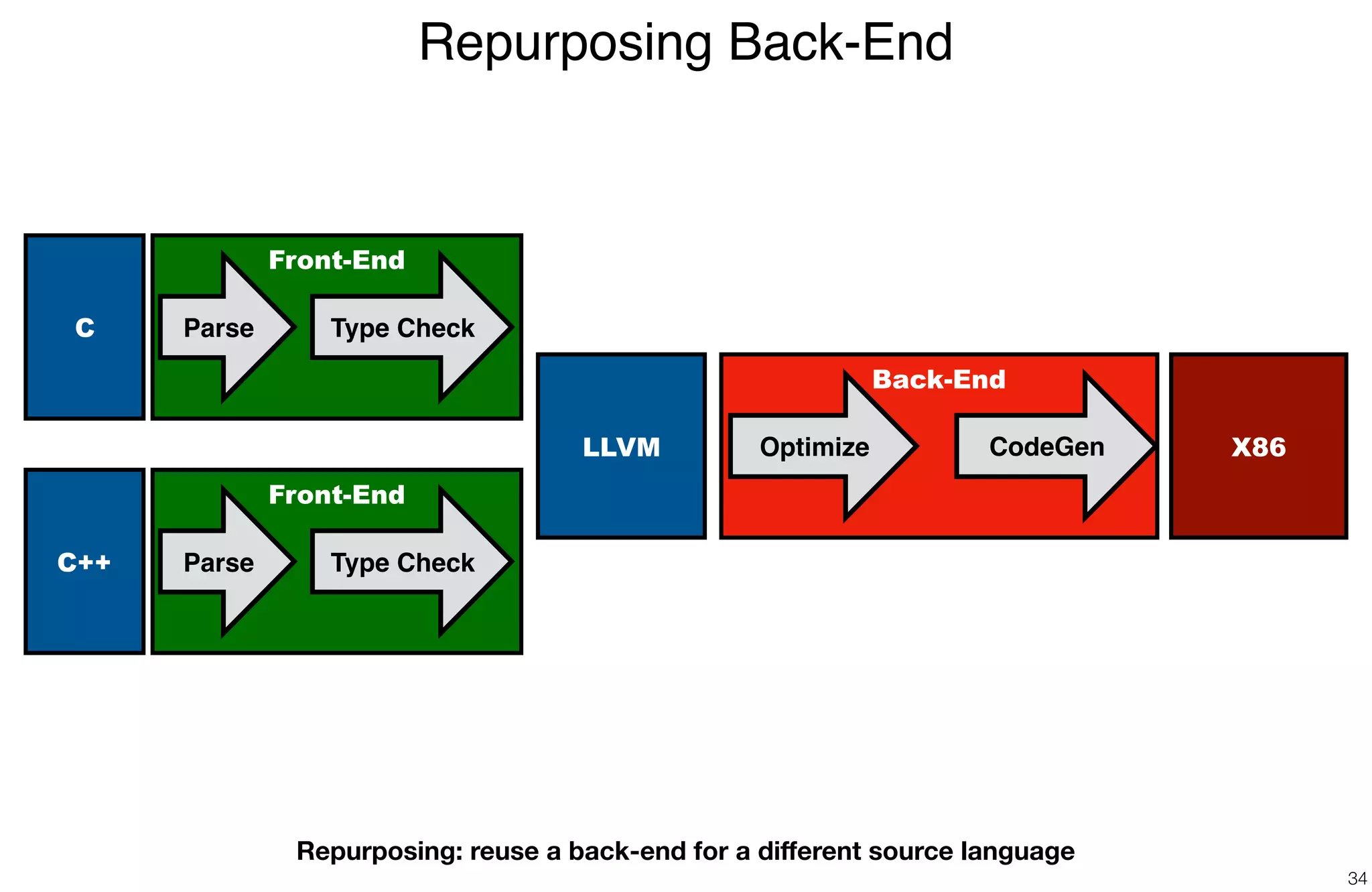
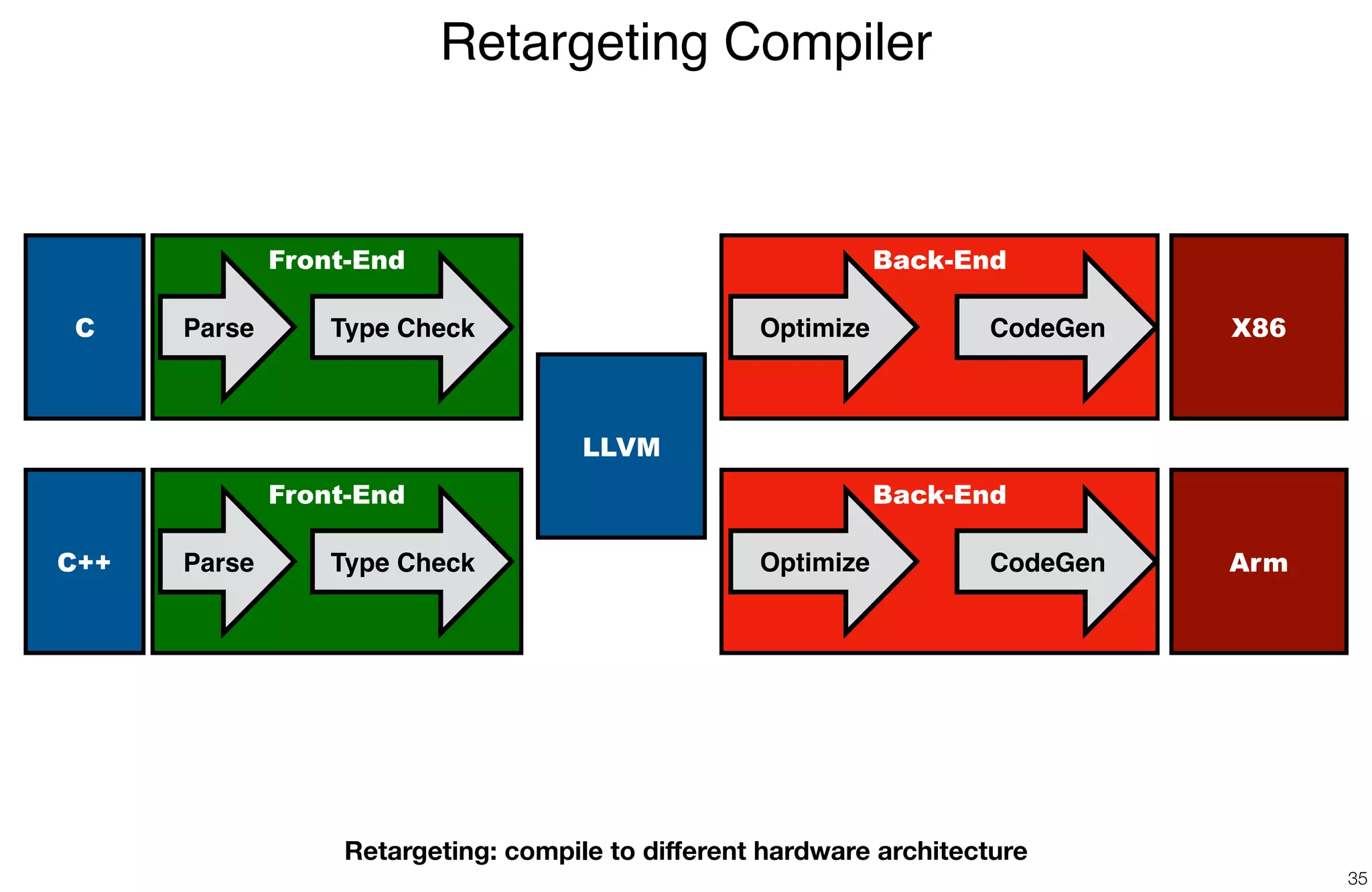

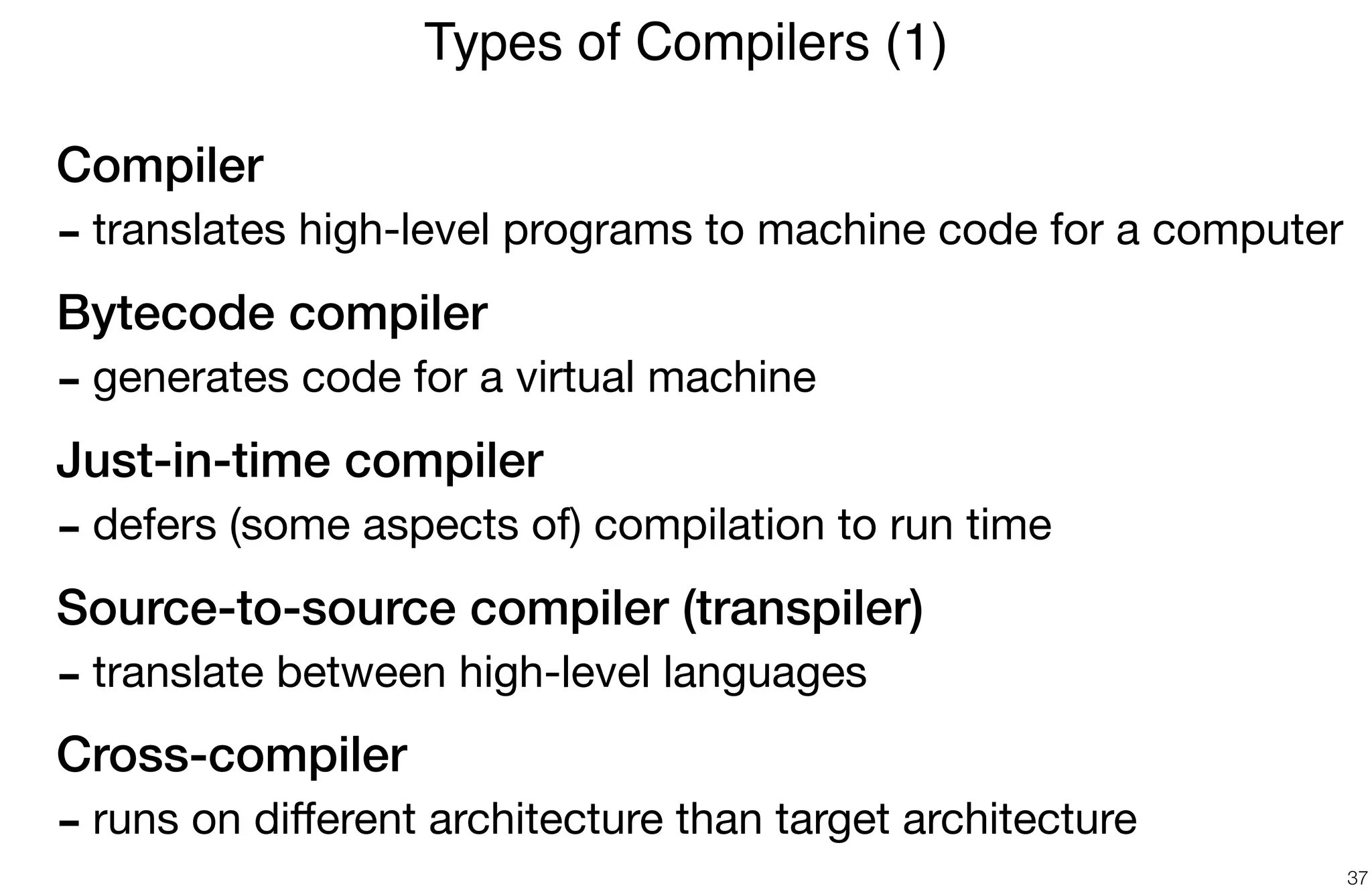
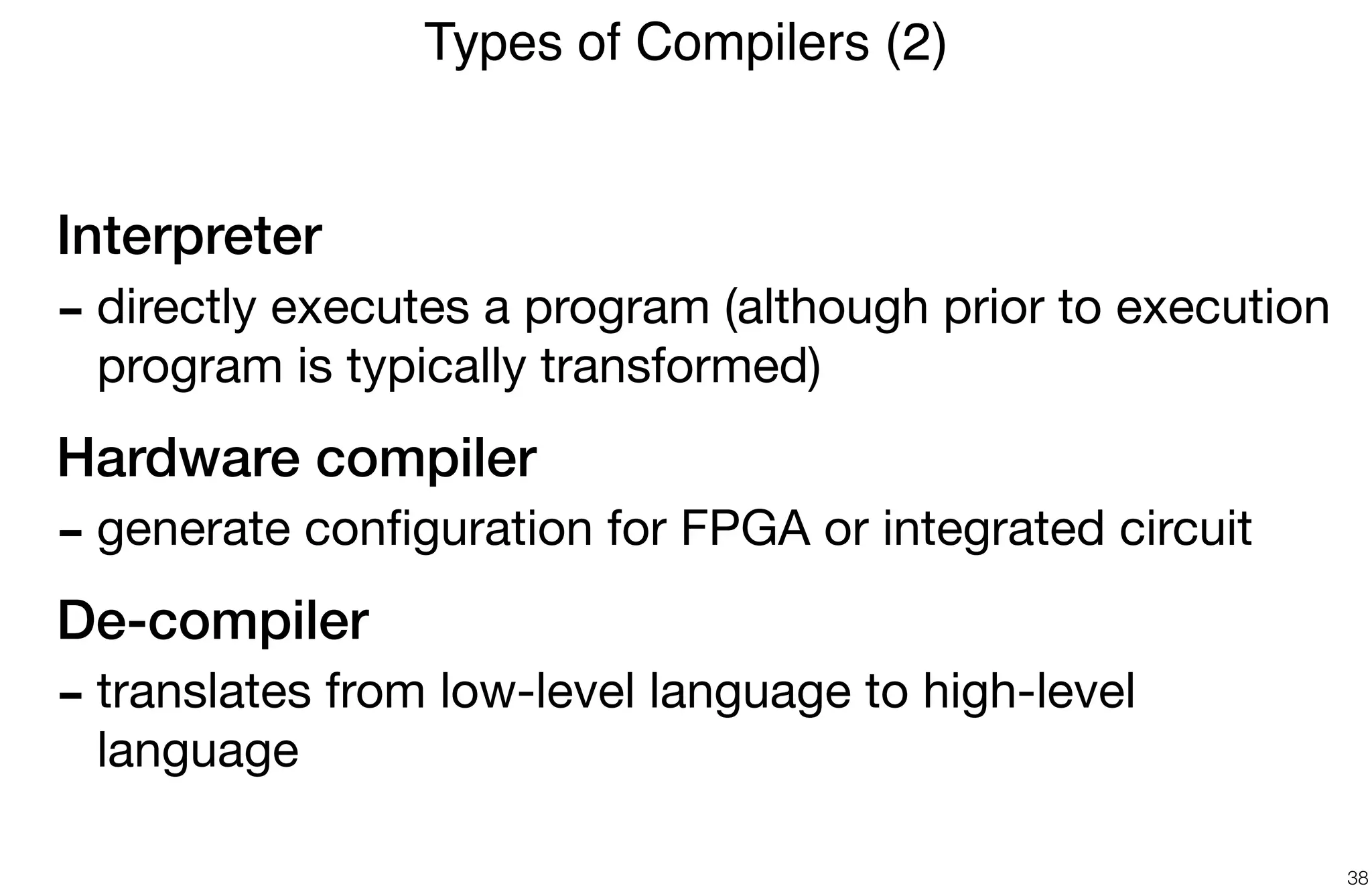
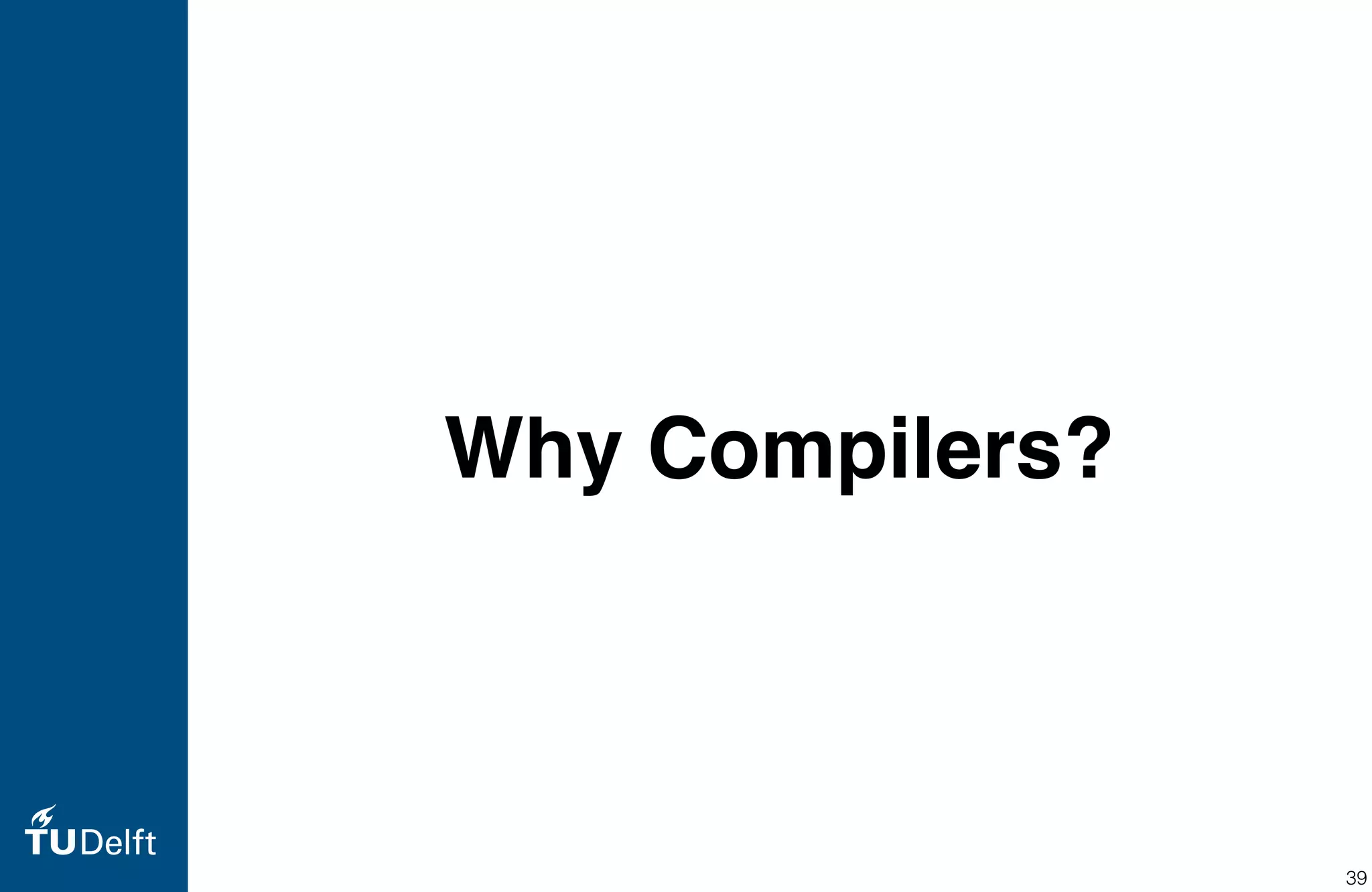
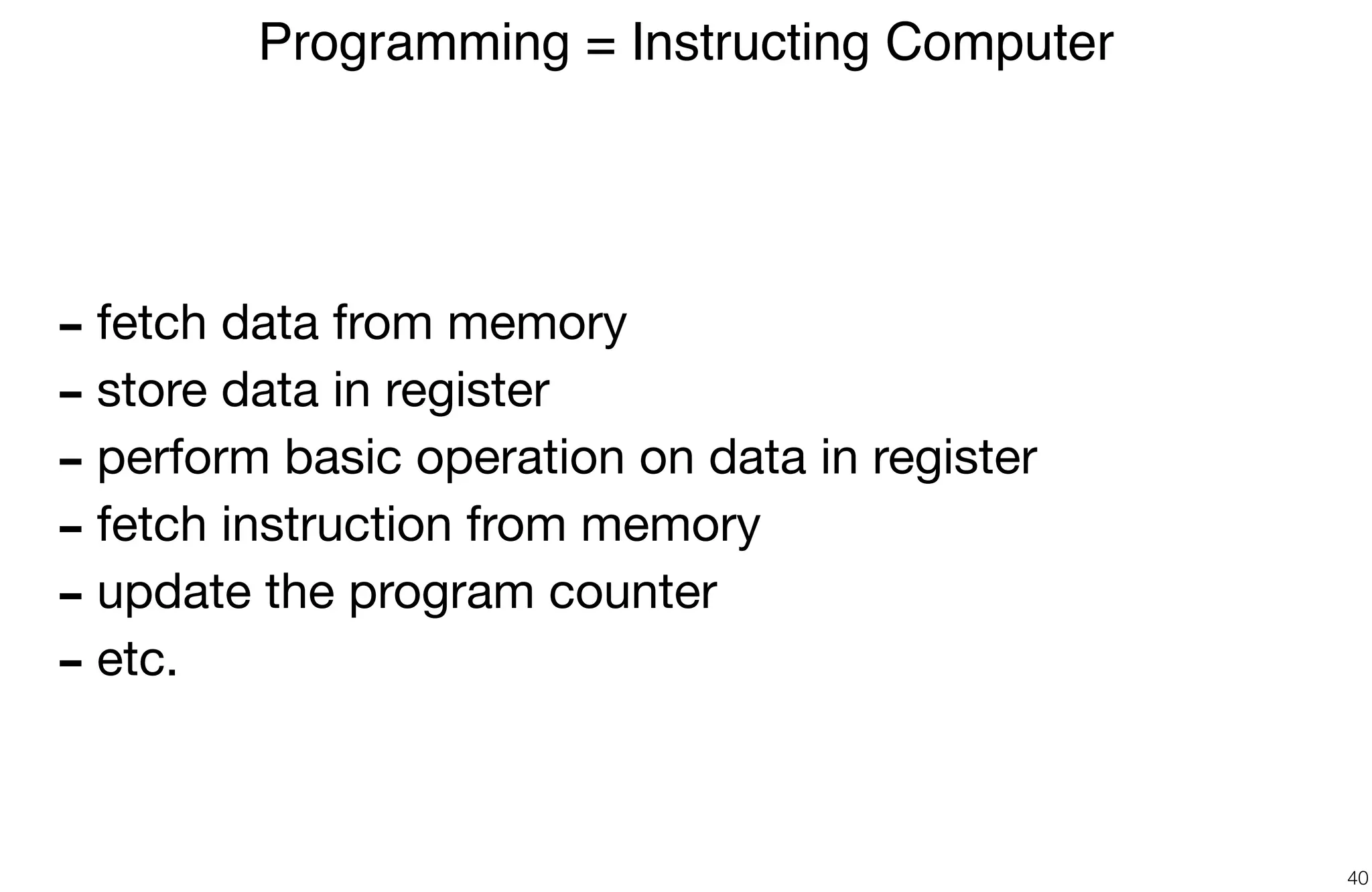
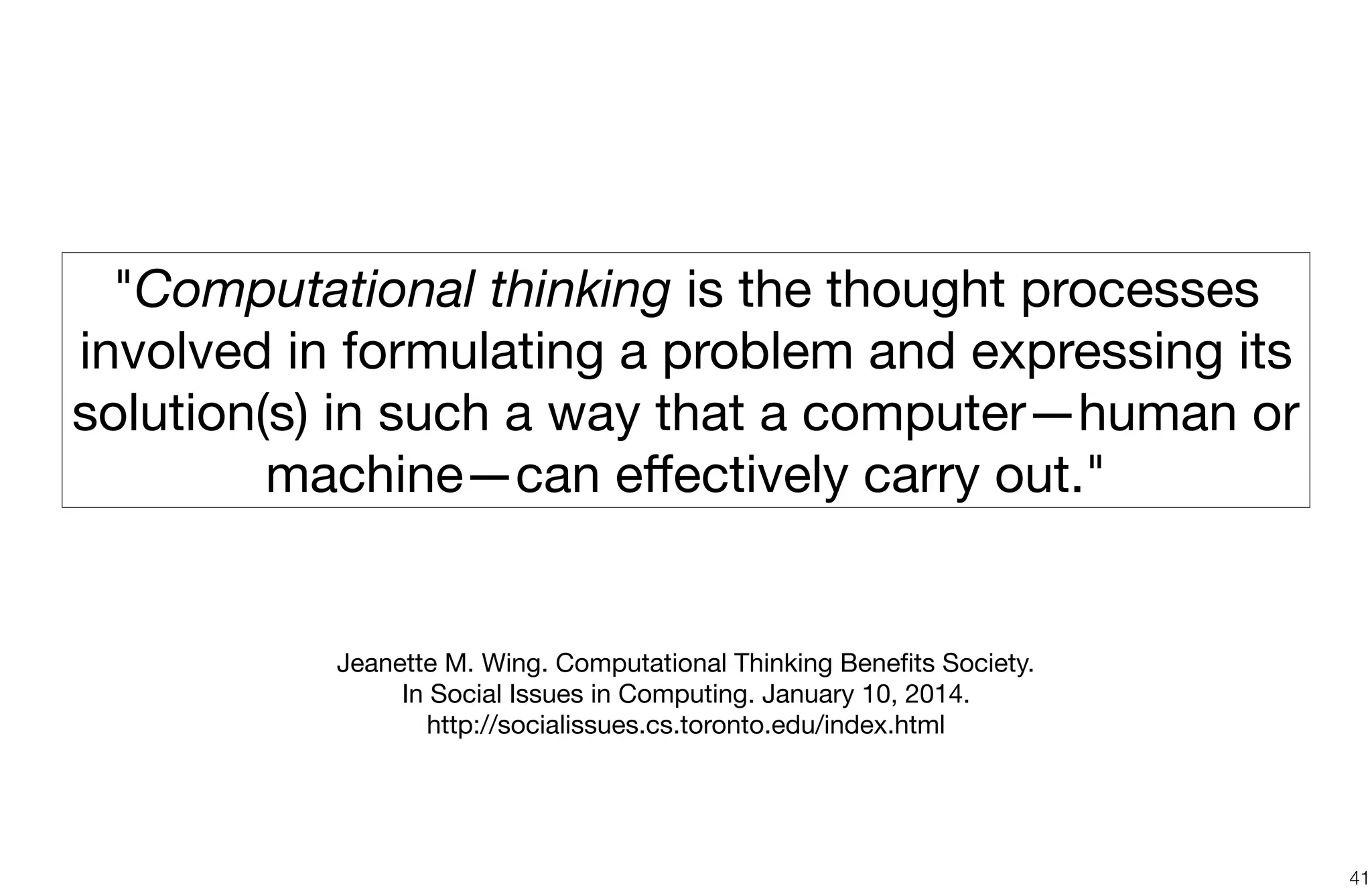
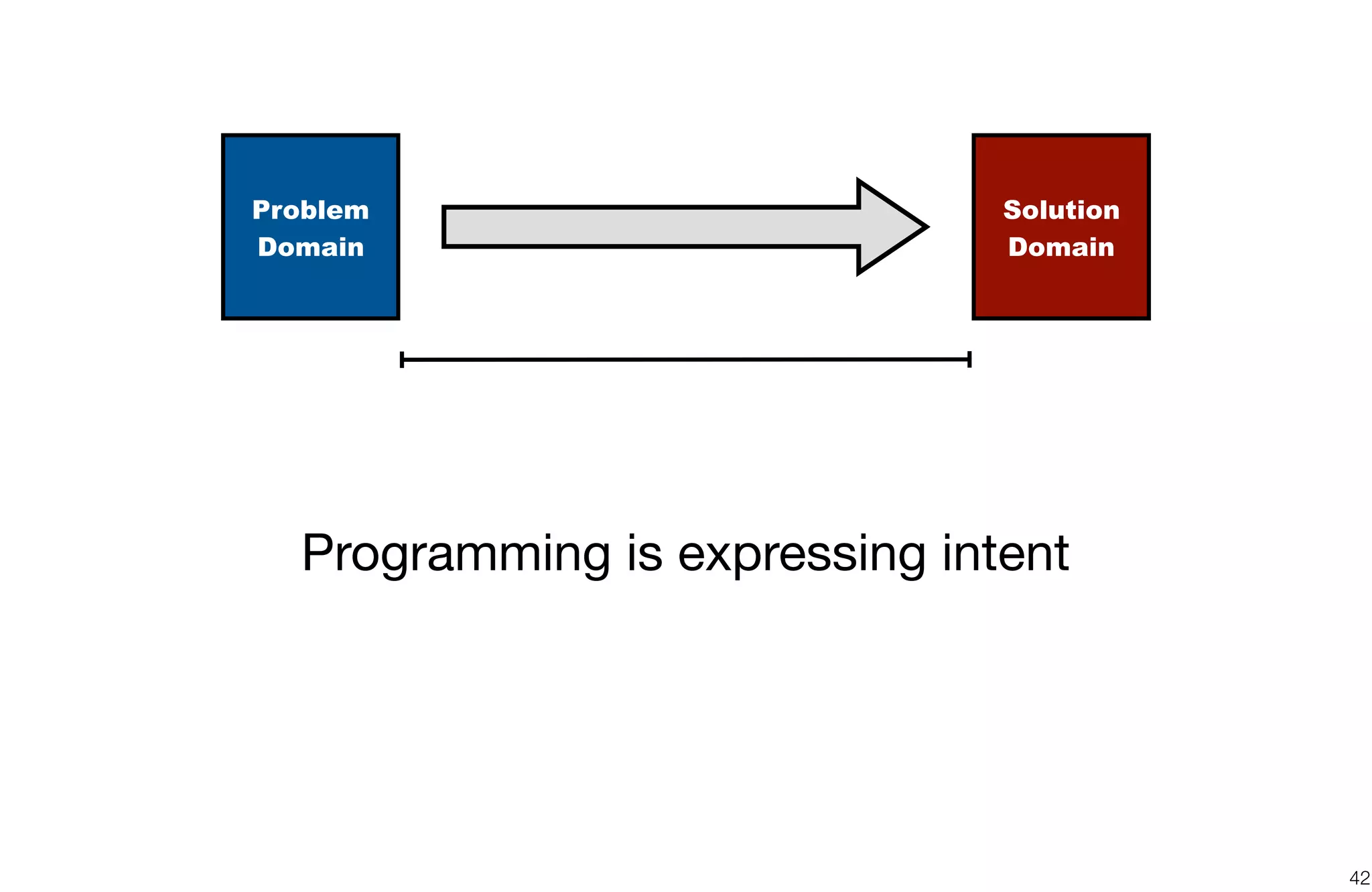
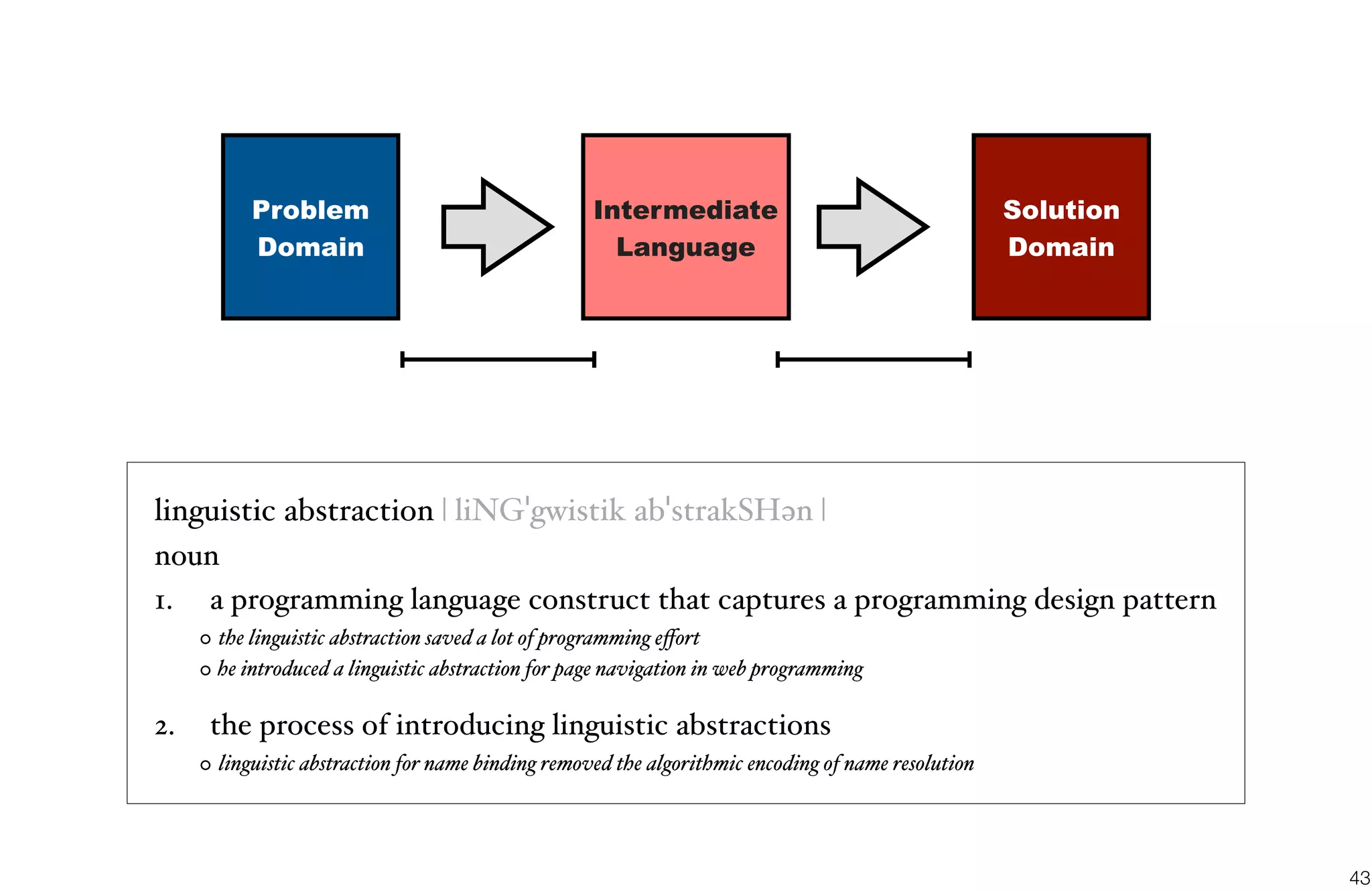
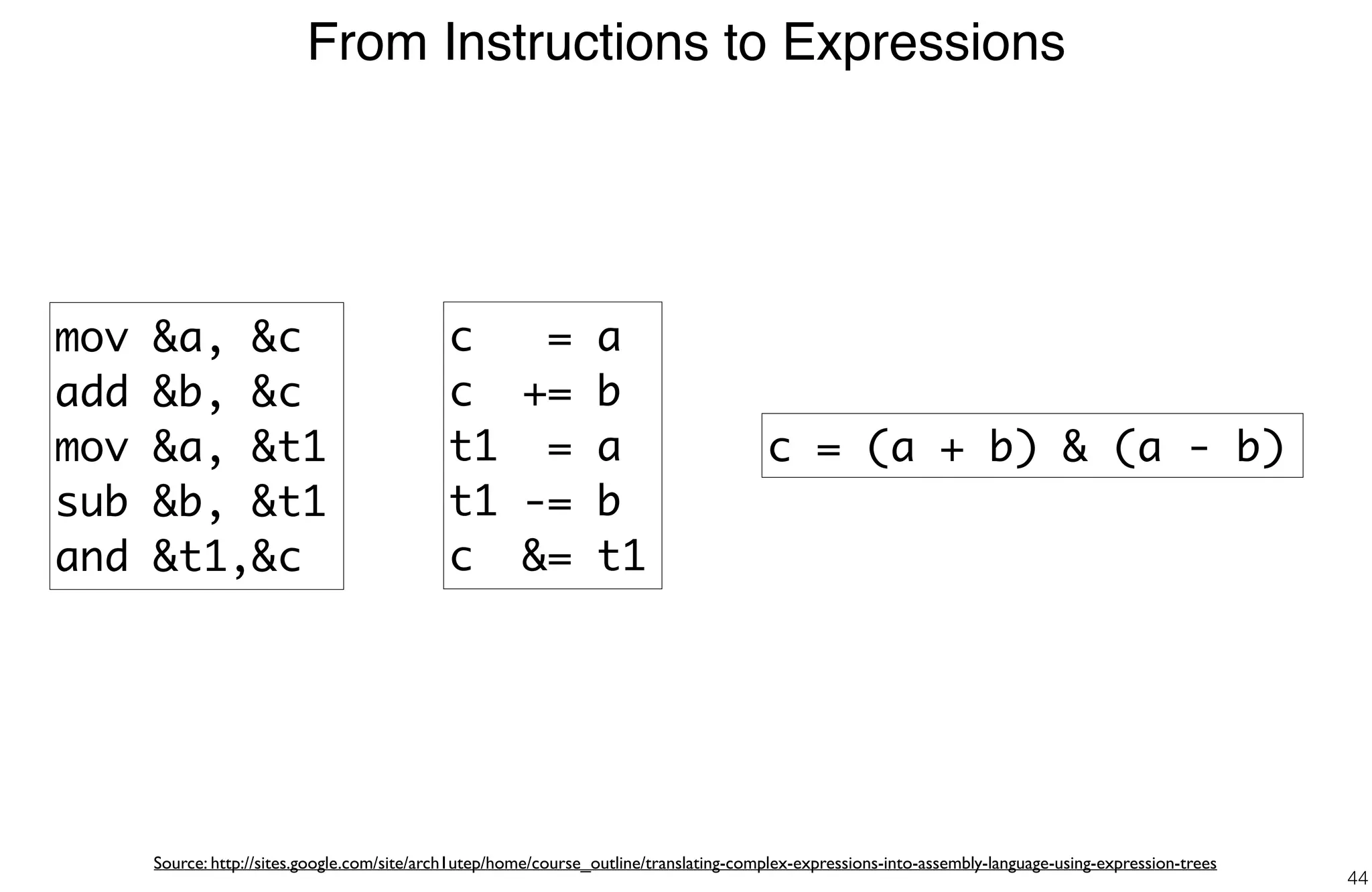
![From Calling Conventions to Procedures
45
f(e1)
calc:
push eBP ; save old frame pointer
mov eBP,eSP ; get new frame pointer
sub eSP,localsize ; reserve place for locals
.
. ; perform calculations, leave result in AX
.
mov eSP,eBP ; free space for locals
pop eBP ; restore old frame pointer
ret paramsize ; free parameter space and return
push eAX ; pass some register result
push byte[eBP+20] ; pass some memory variable (FASM/TASM syntax)
push 3 ; pass some constant
call calc ; the returned result is now in eAX
def f(x)={ ... }
http://en.wikipedia.org/wiki/Calling_convention
function definition and call in Scala](https://image.slidesharecdn.com/dyl-introduction-170911124609/75/Declare-Your-Language-What-is-a-Compiler-45-2048.jpg)
![From Malloc to Garbage Collection
46
/* Allocate space for an array with ten elements of type int. */
int *ptr = (int*)malloc(10 * sizeof (int));
if (ptr == NULL) {
/* Memory could not be allocated, the program
should handle the error here as appropriate. */
} else {
/* Allocation succeeded. Do something. */
free(ptr); /* We are done with the int objects,
and free the associated pointer. */
ptr = NULL; /* The pointer must not be used again,
unless re-assigned to using malloc again. */
}
http://en.wikipedia.org/wiki/Malloc
int [] = new int[10];
/* use it; gc will clean up (hopefully) */](https://image.slidesharecdn.com/dyl-introduction-170911124609/75/Declare-Your-Language-What-is-a-Compiler-46-2048.jpg)
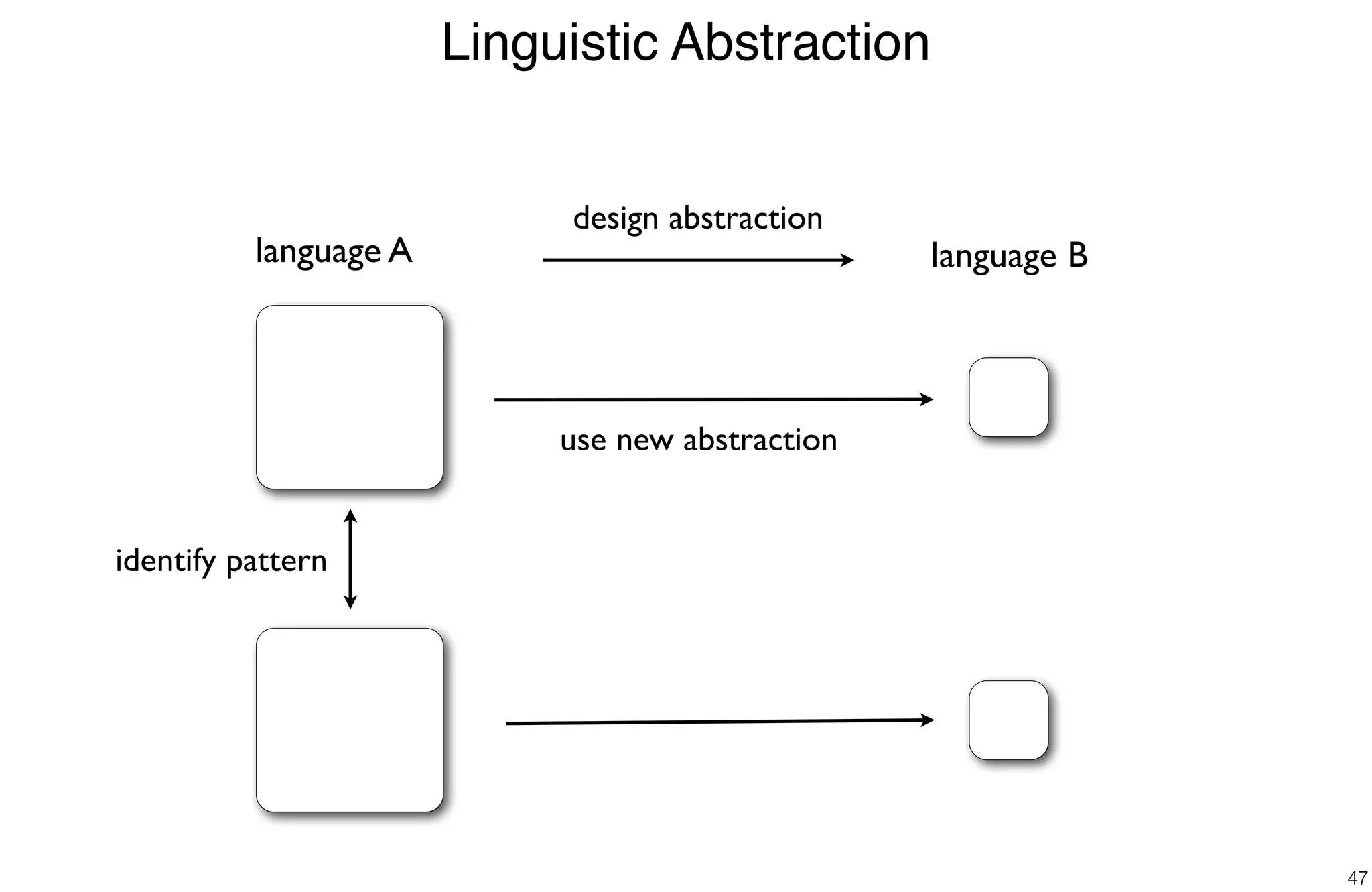
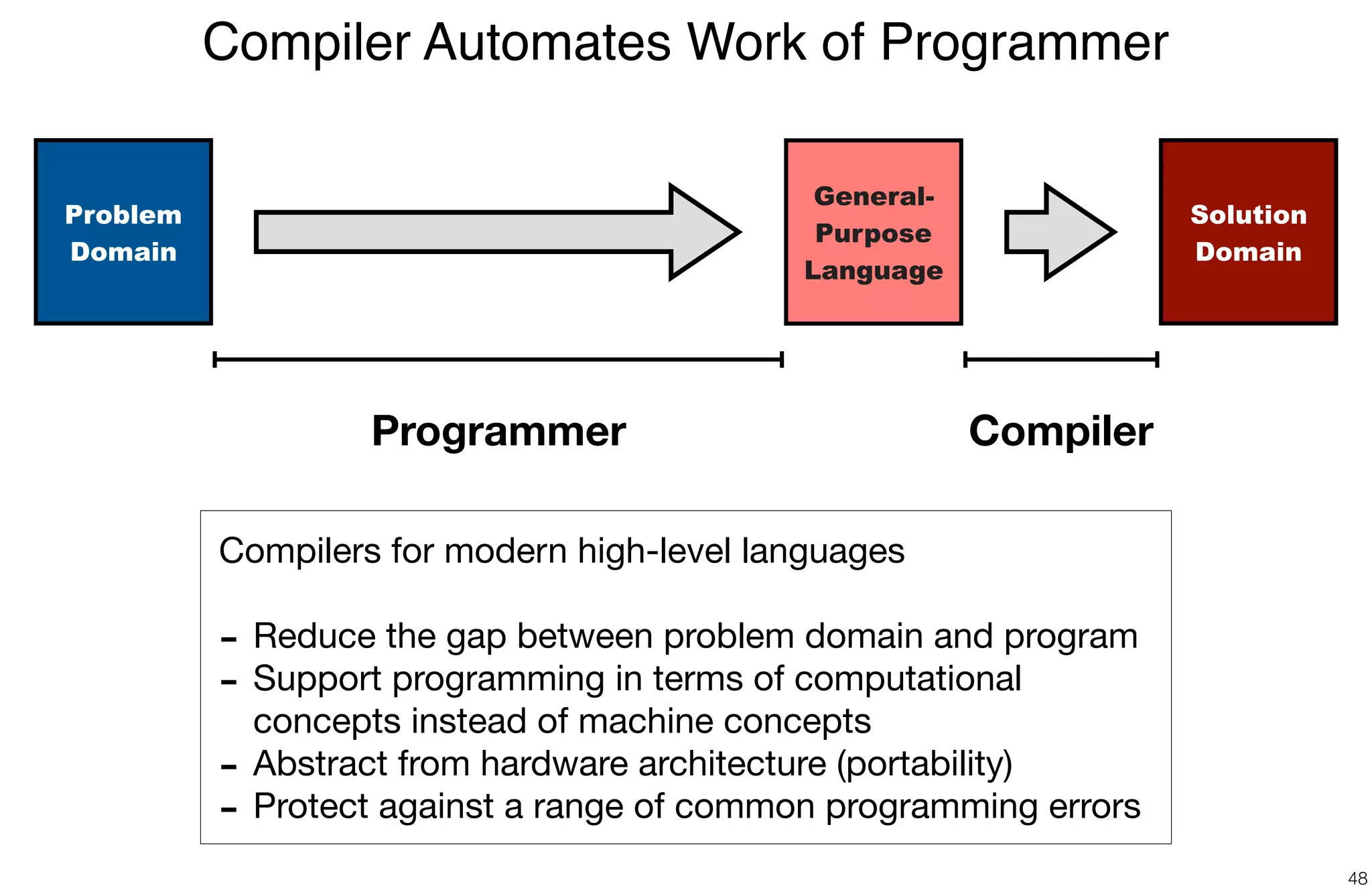
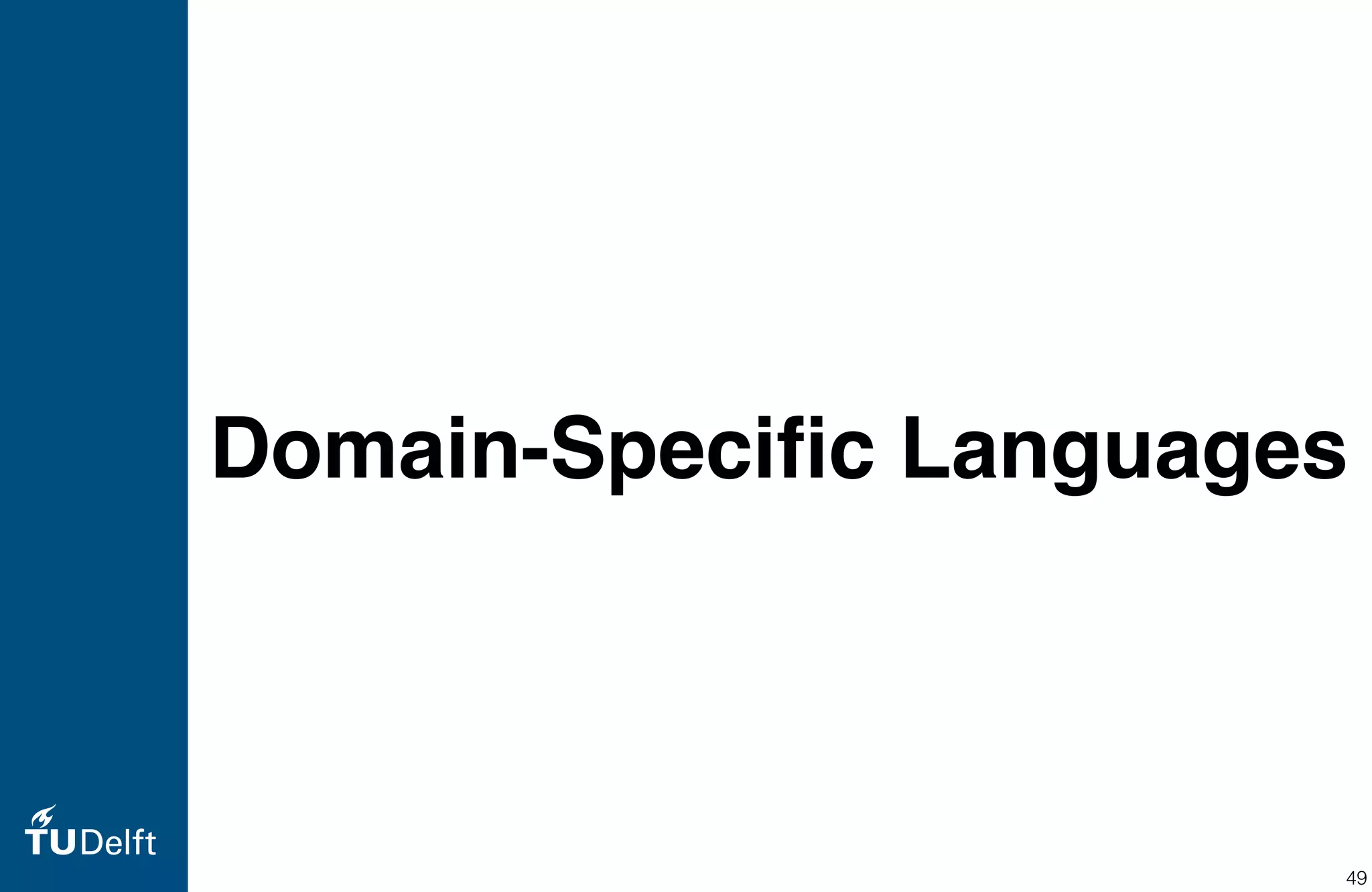
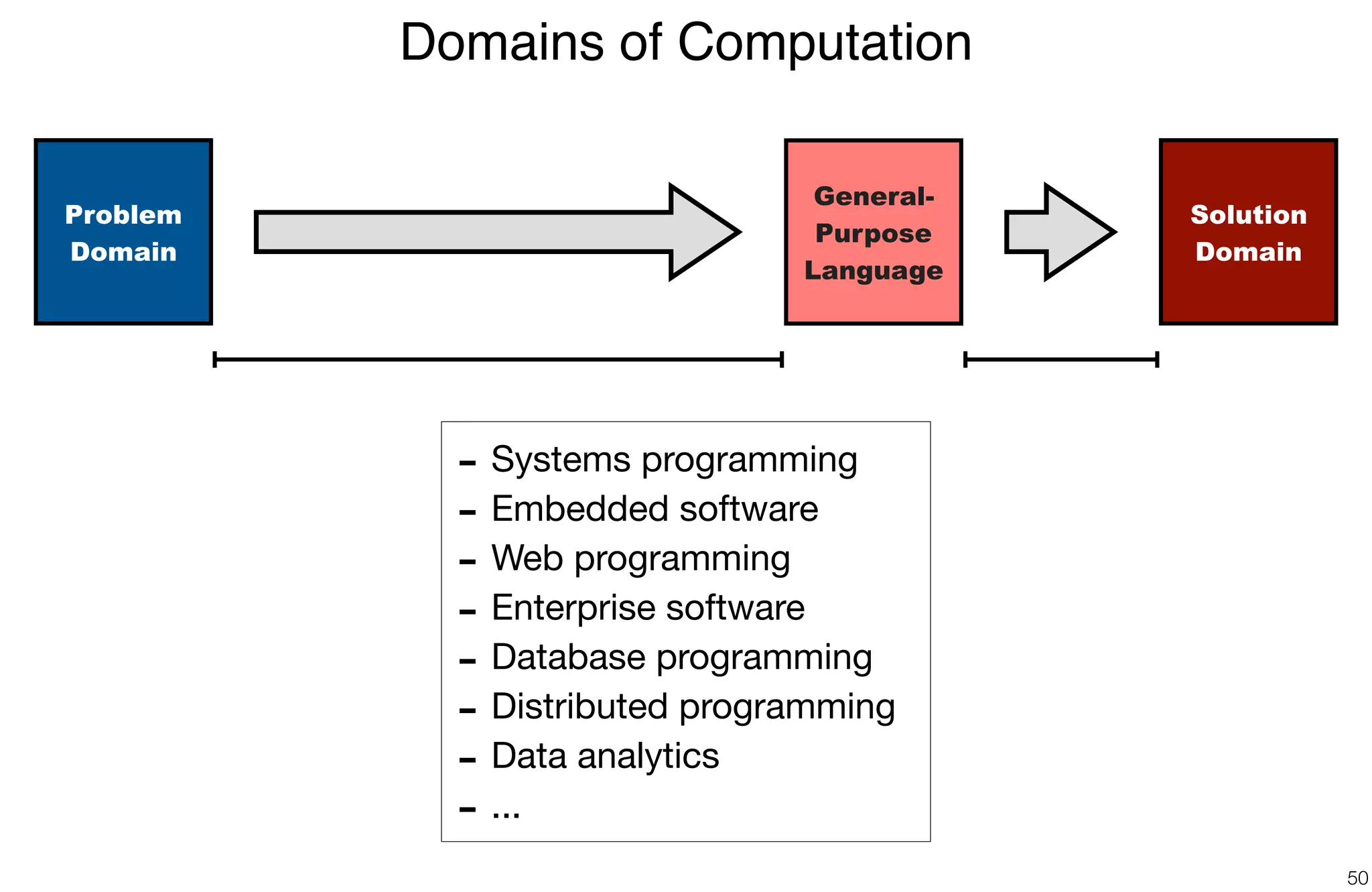
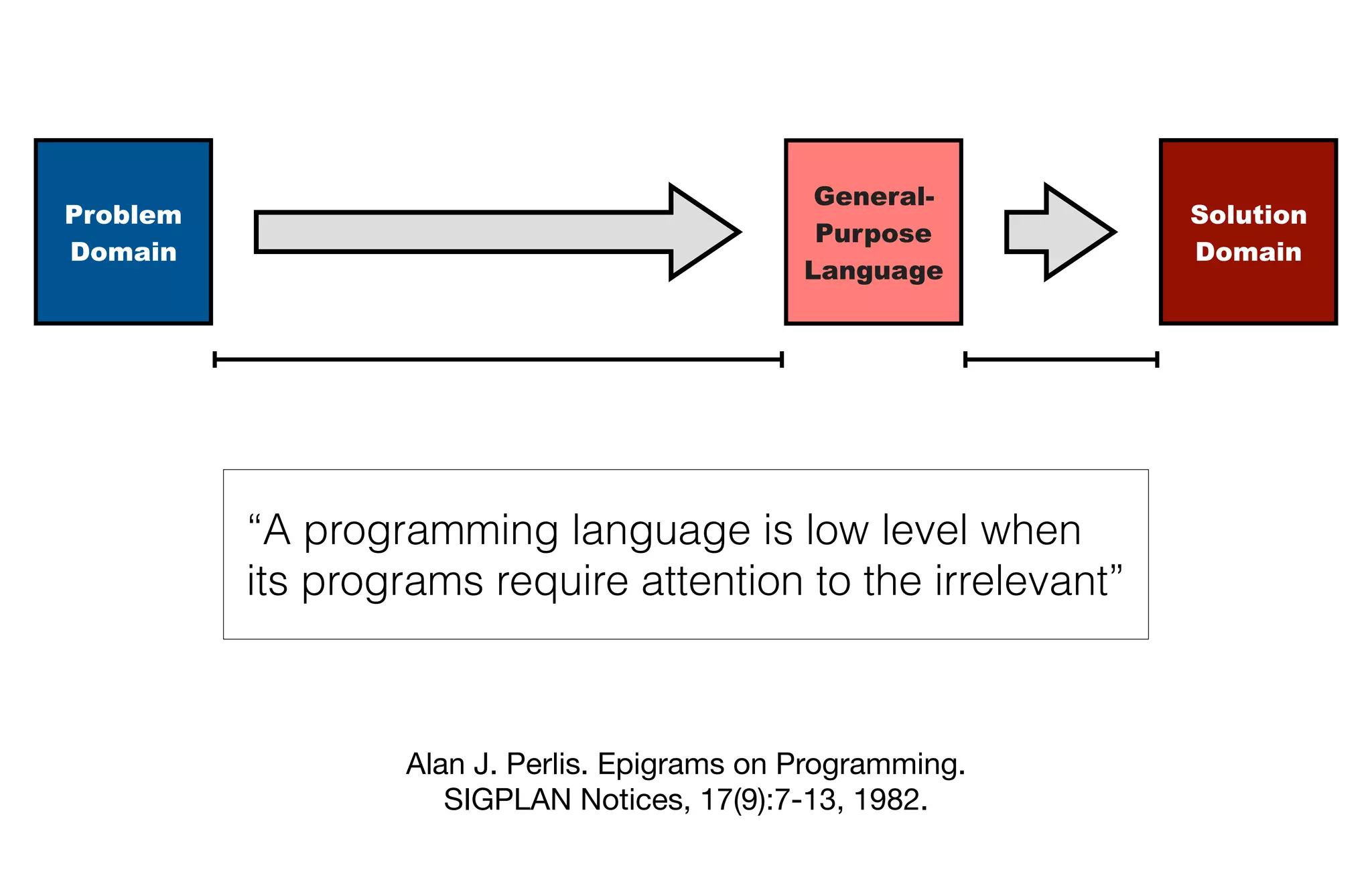
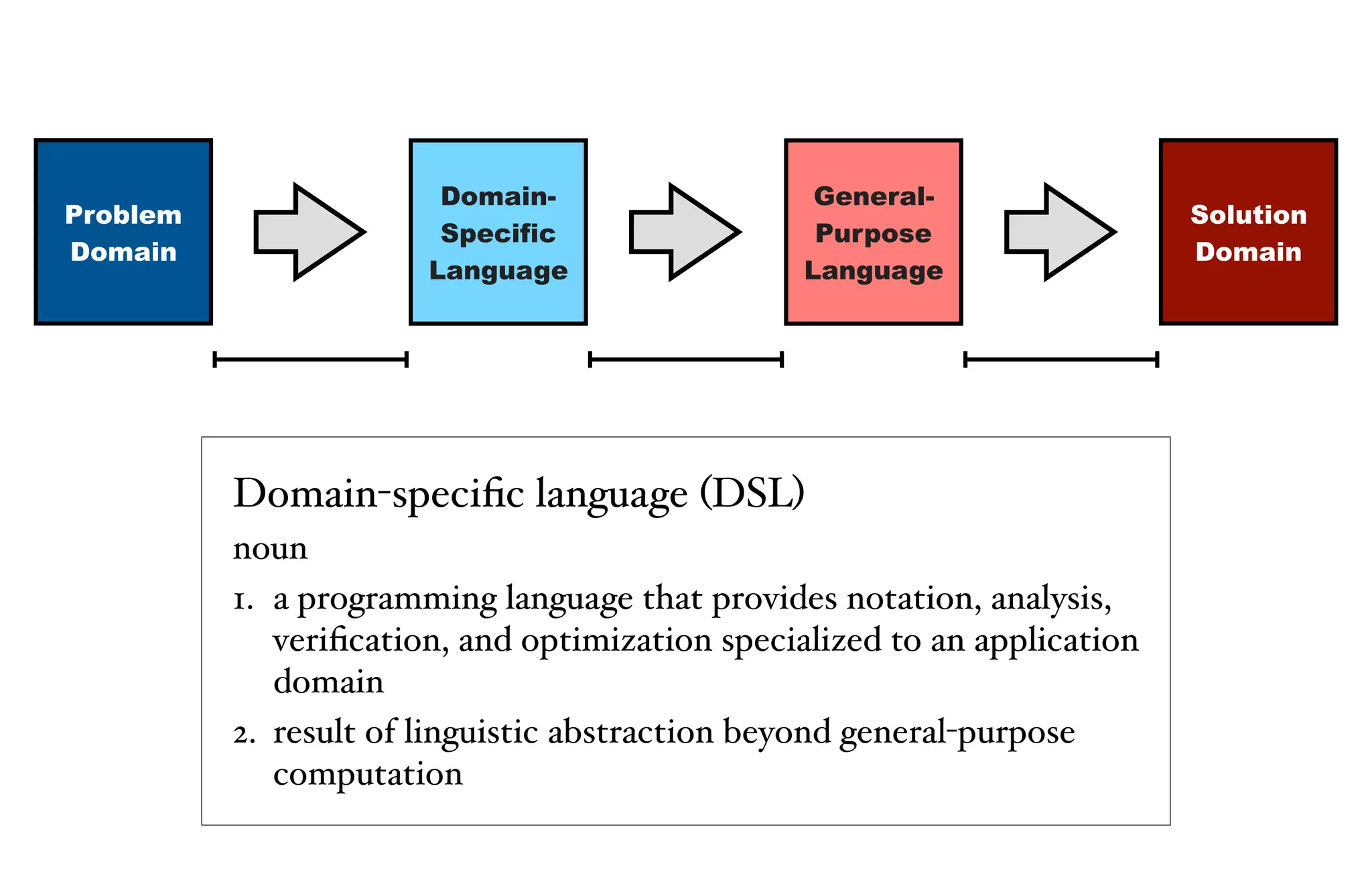
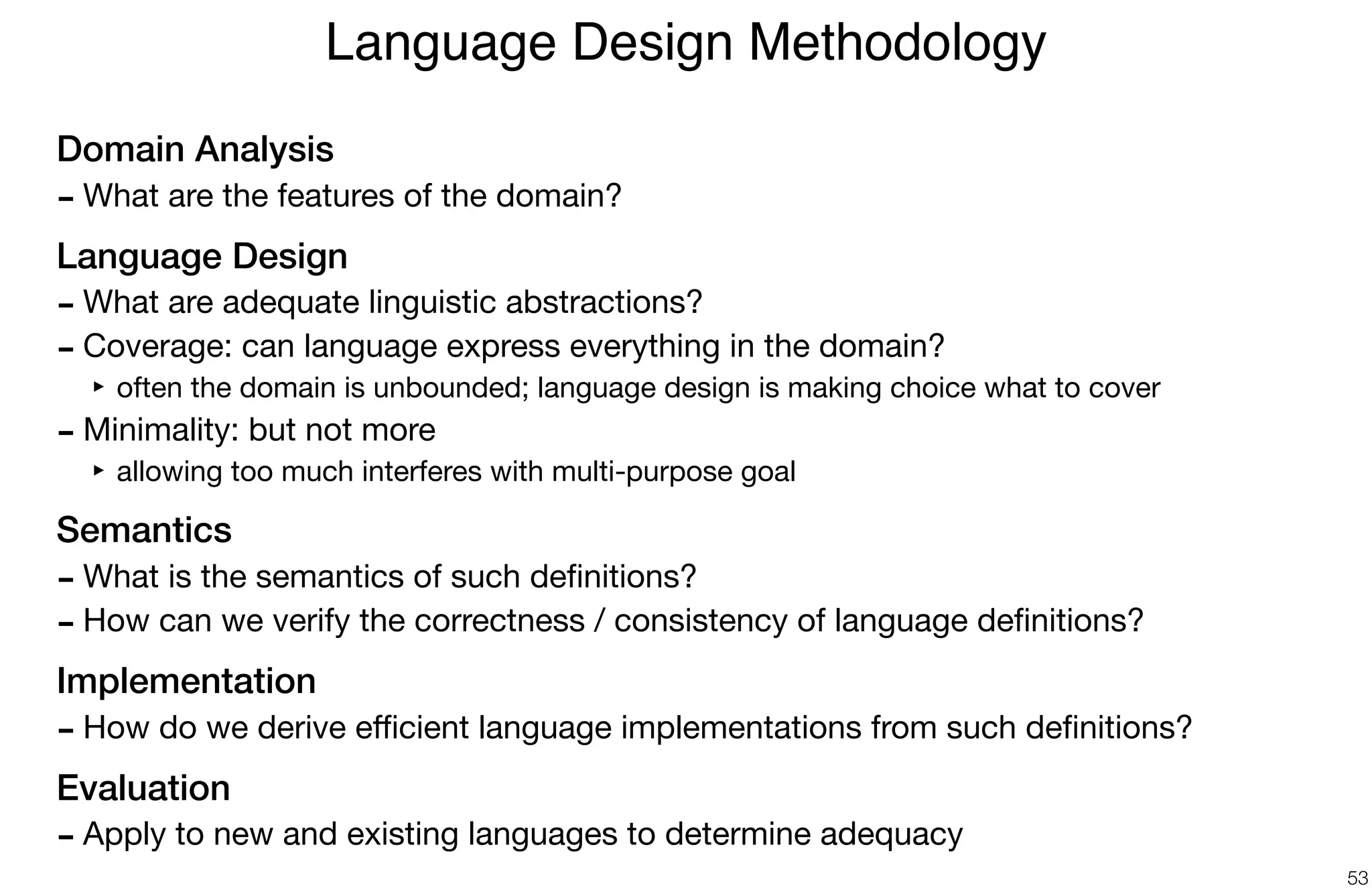
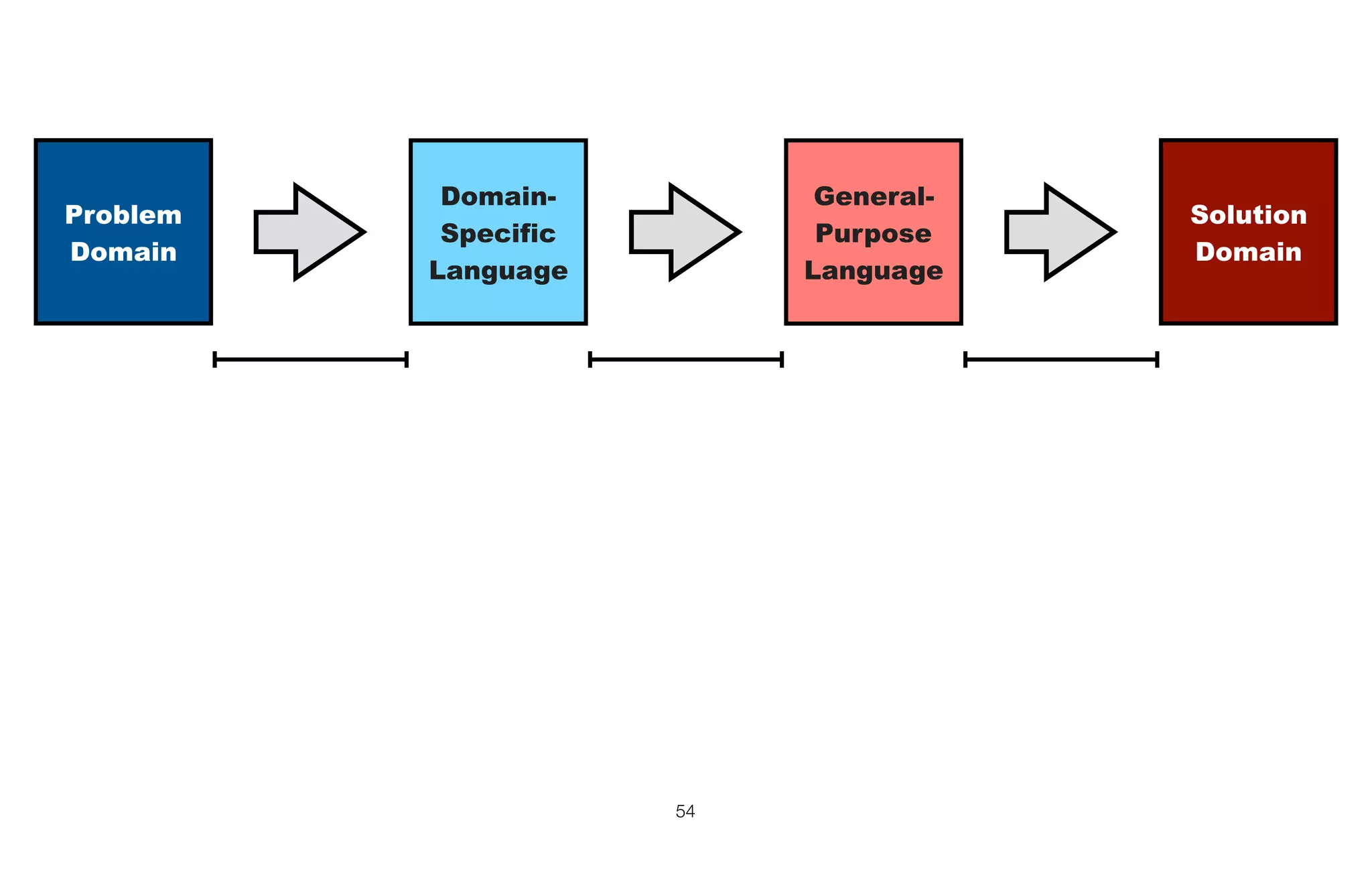

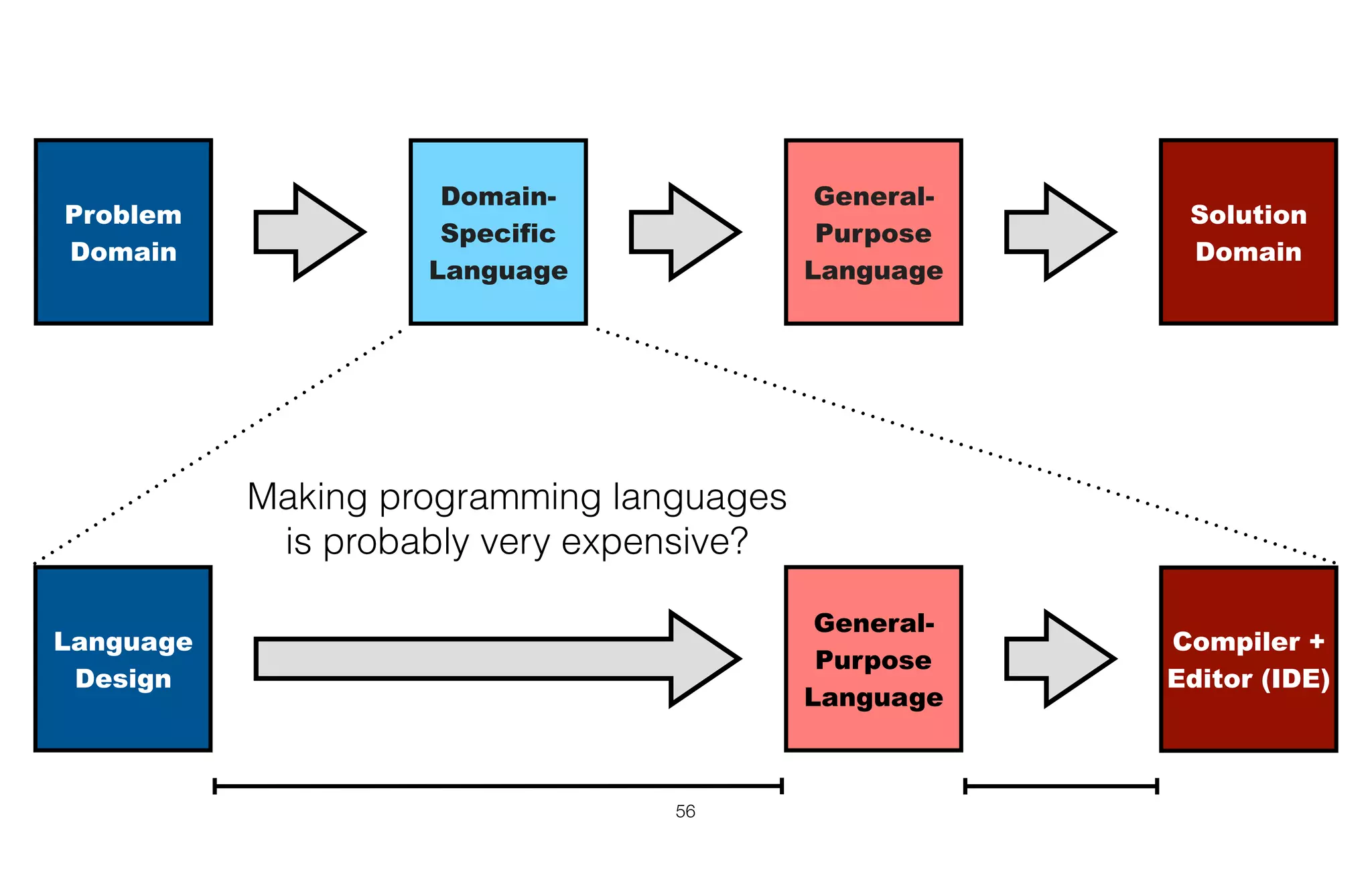
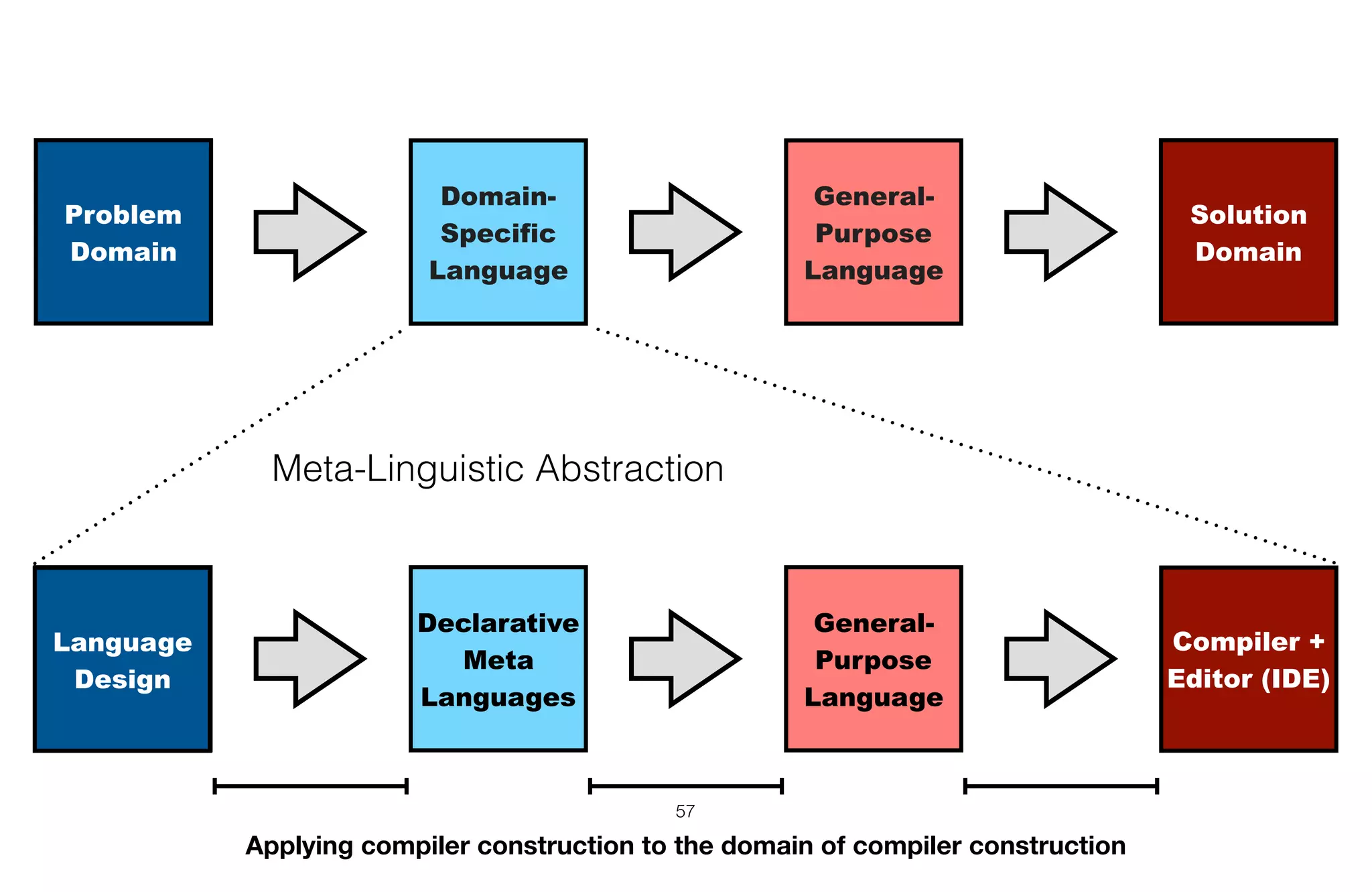
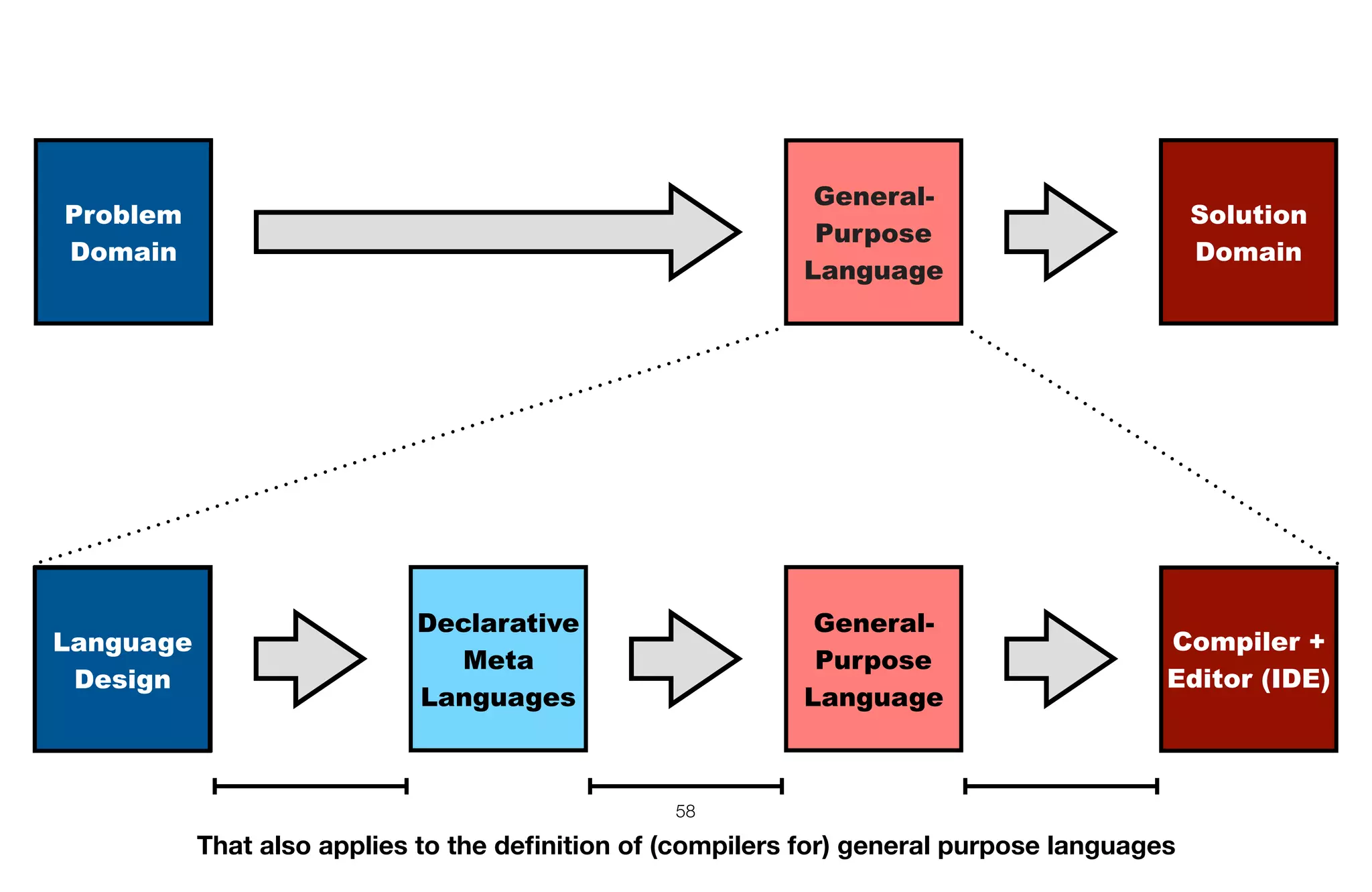
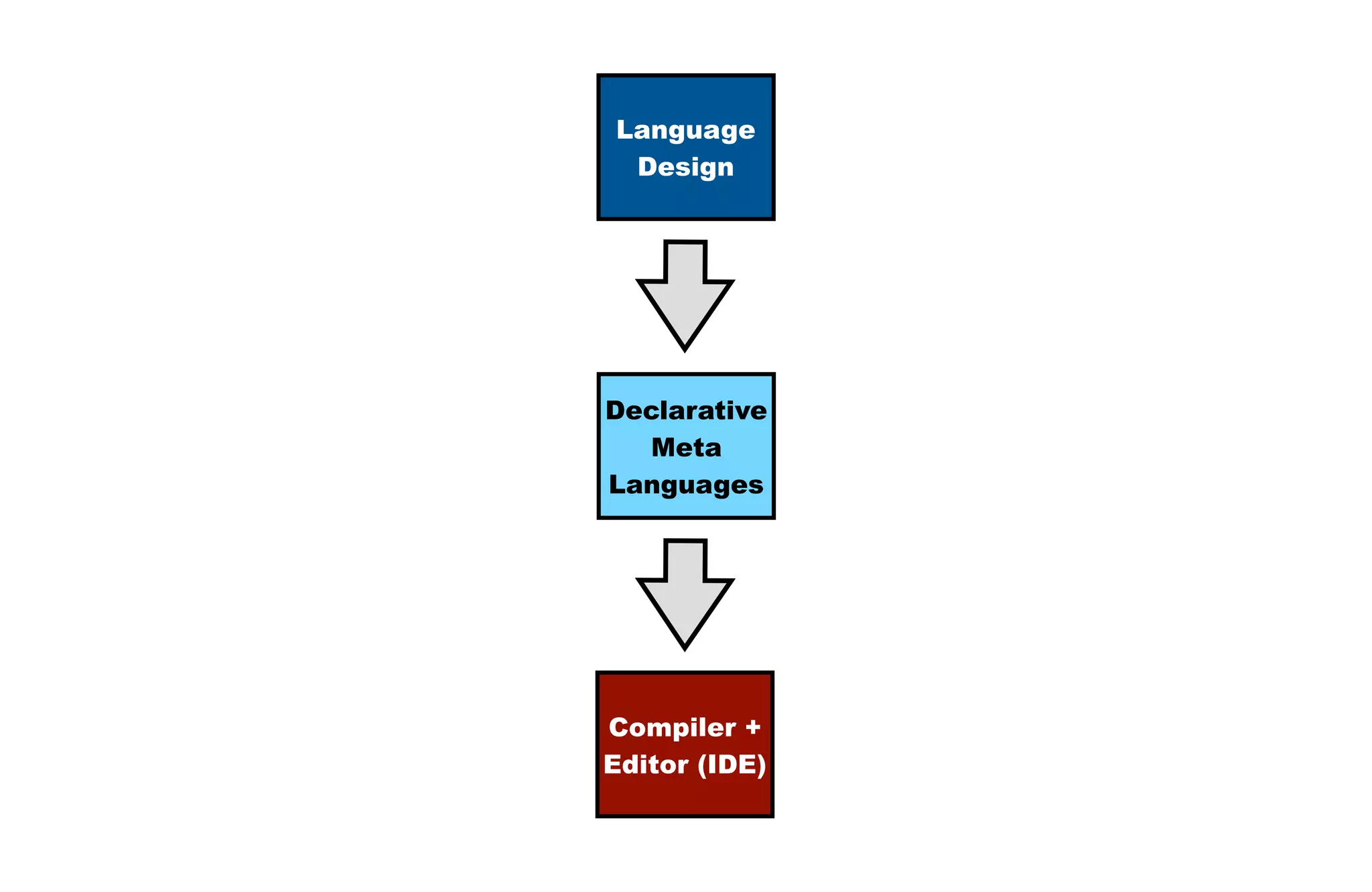
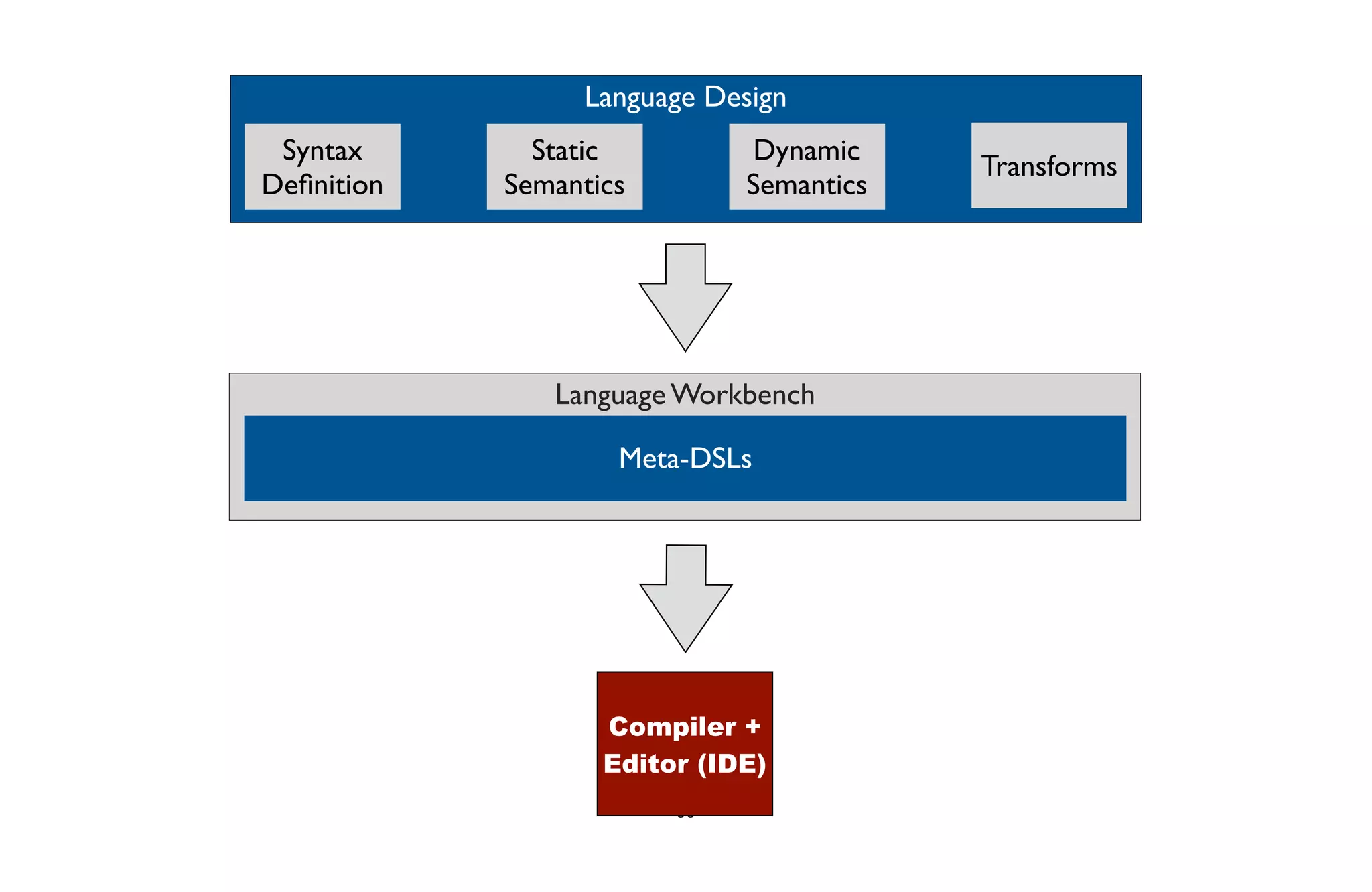
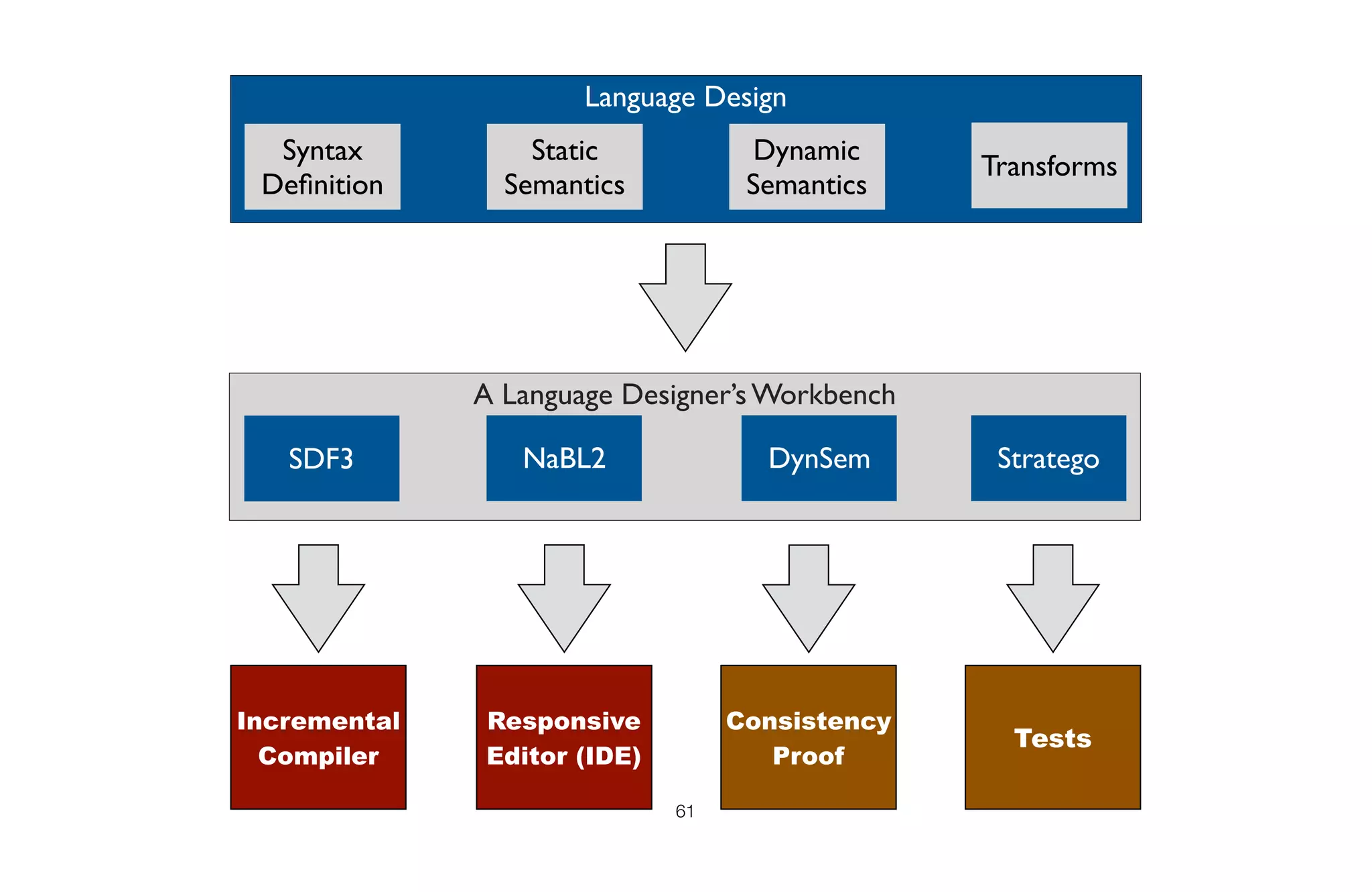
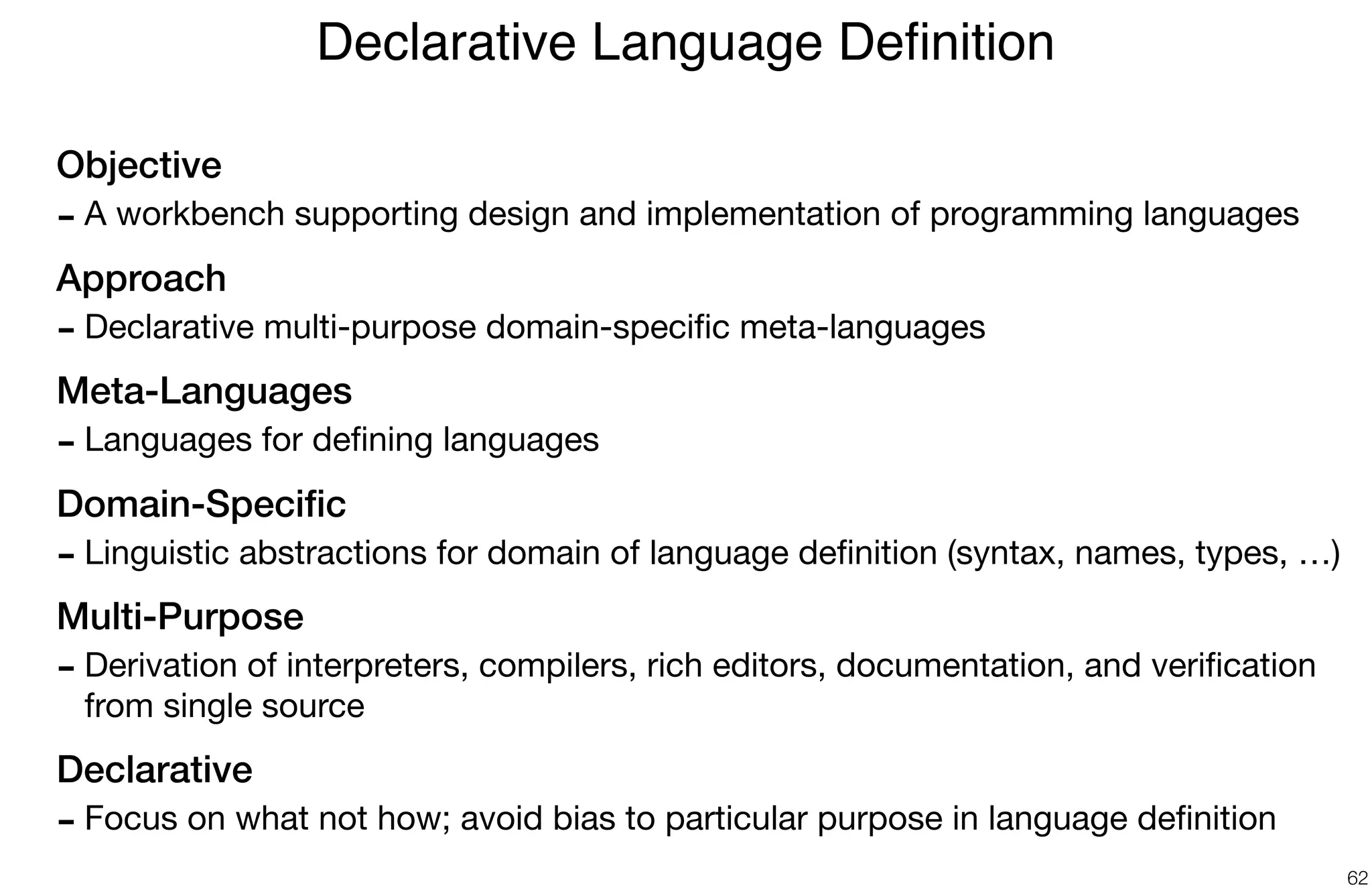
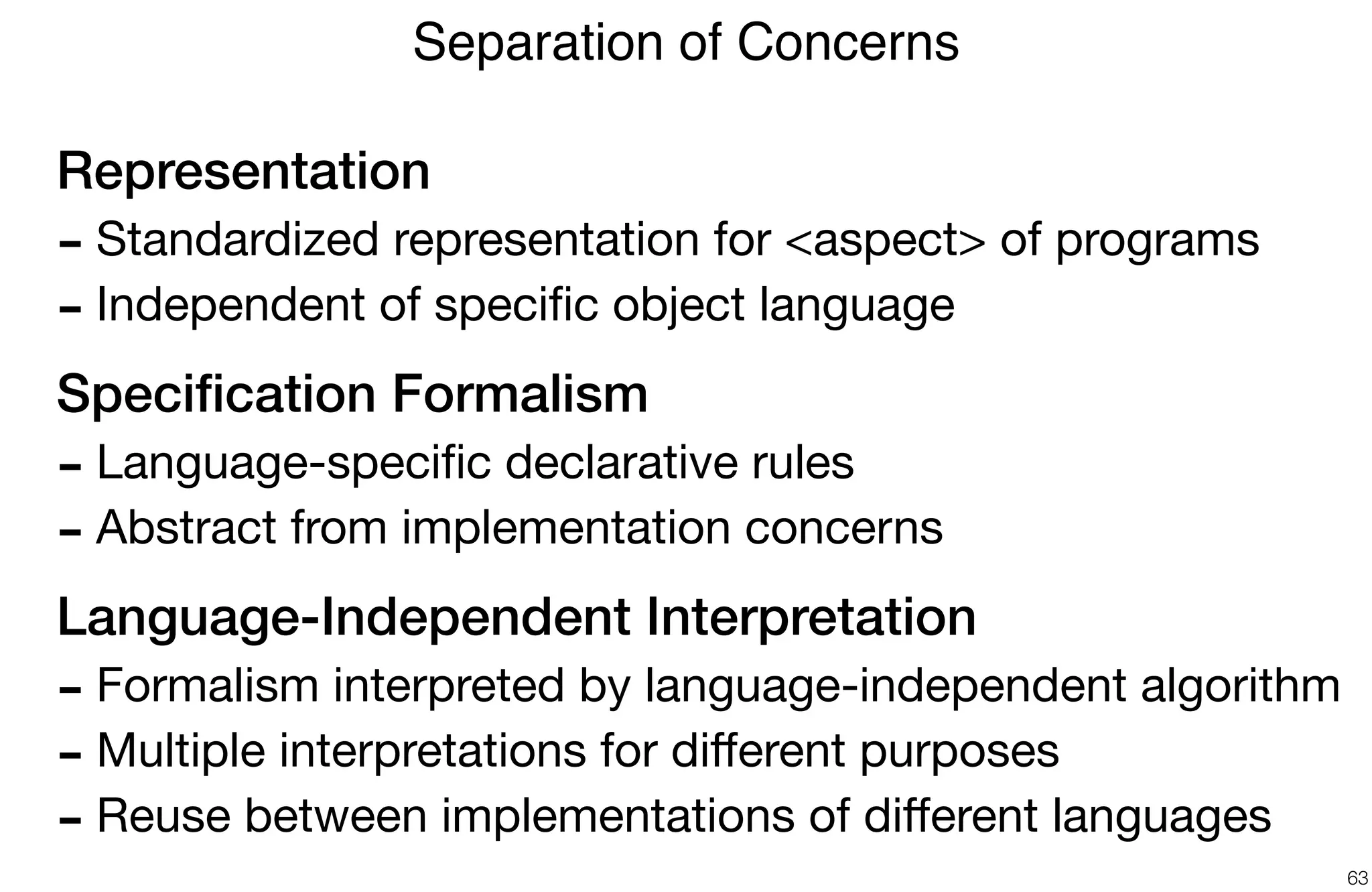
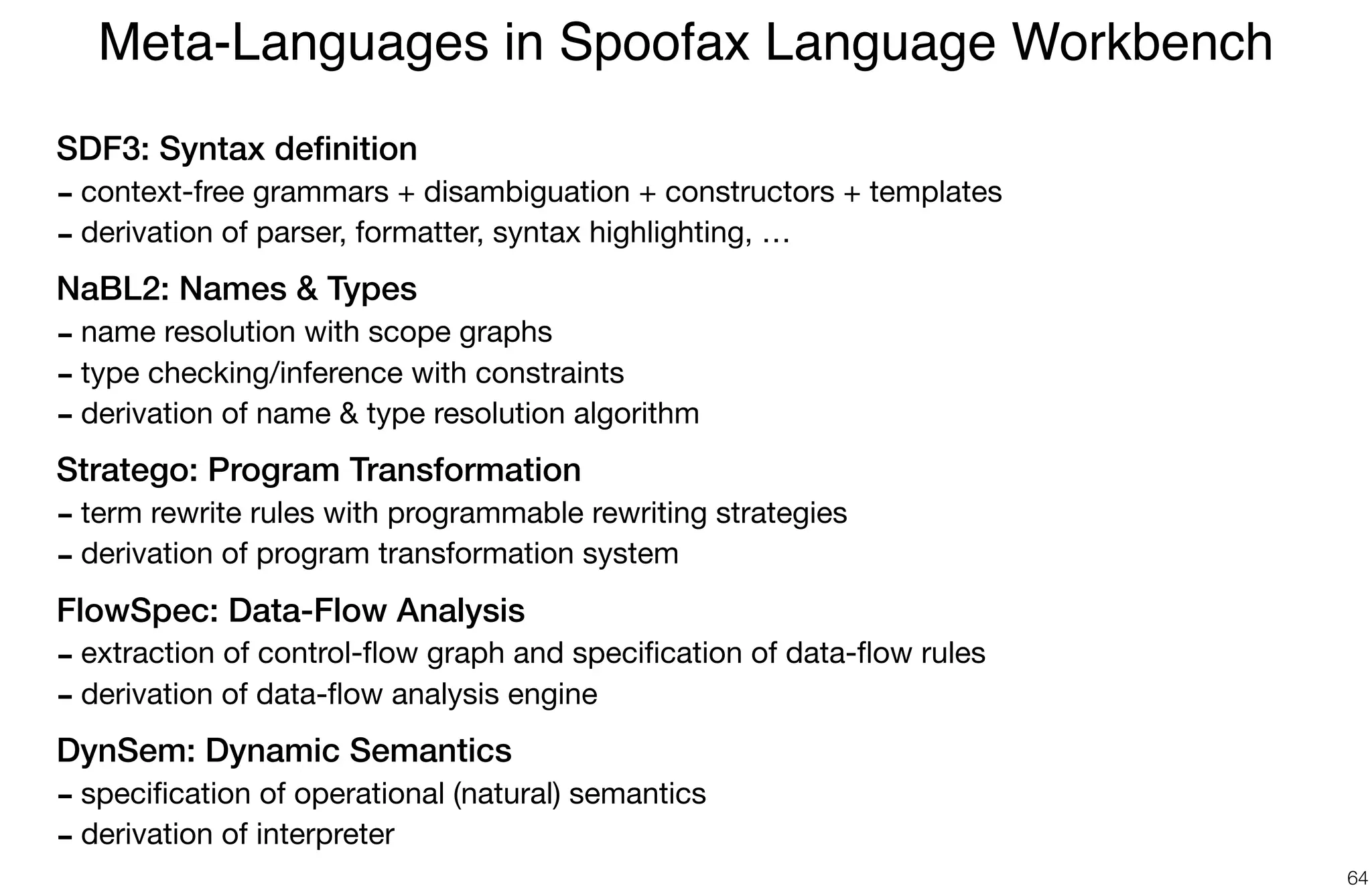
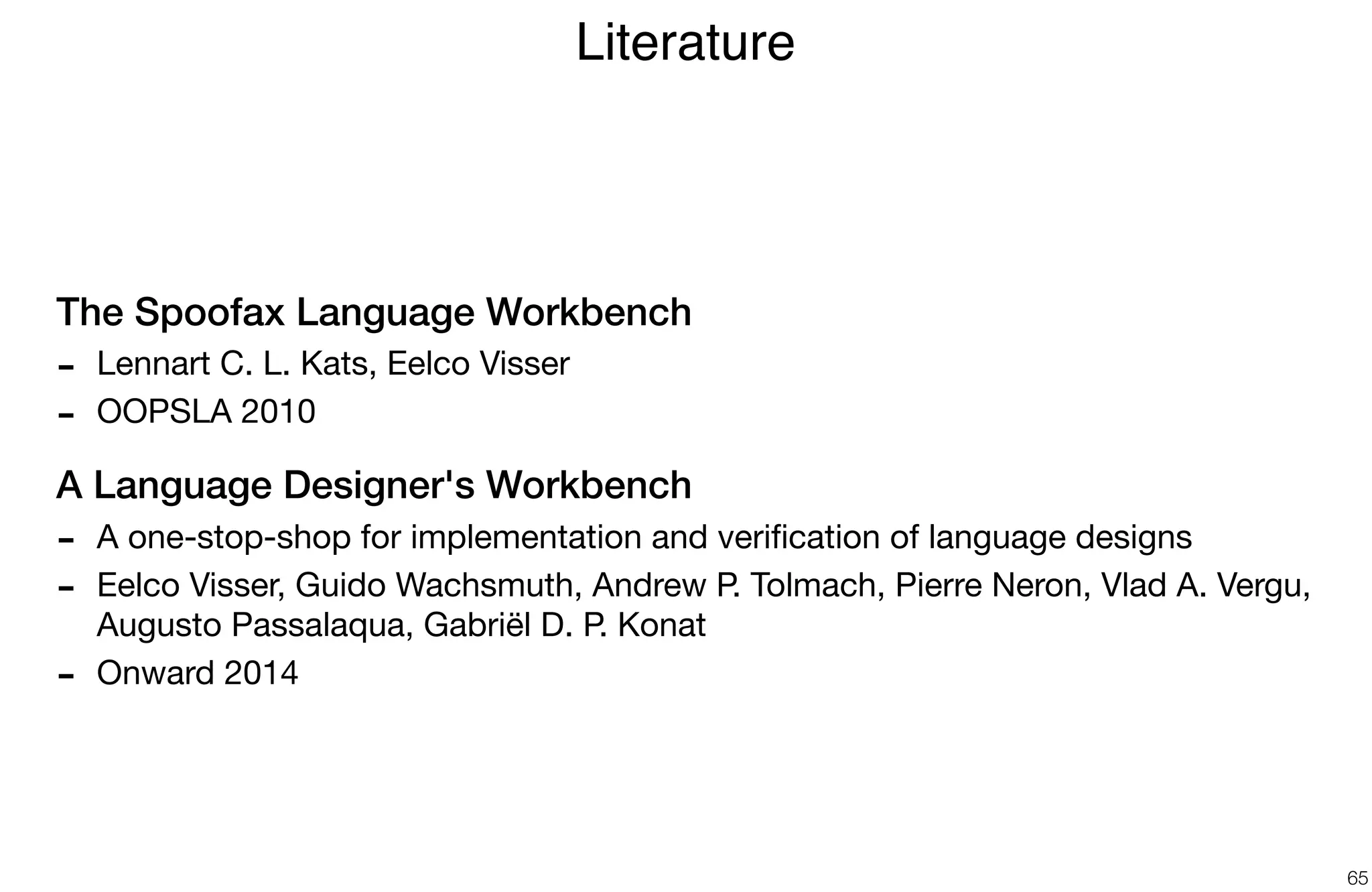
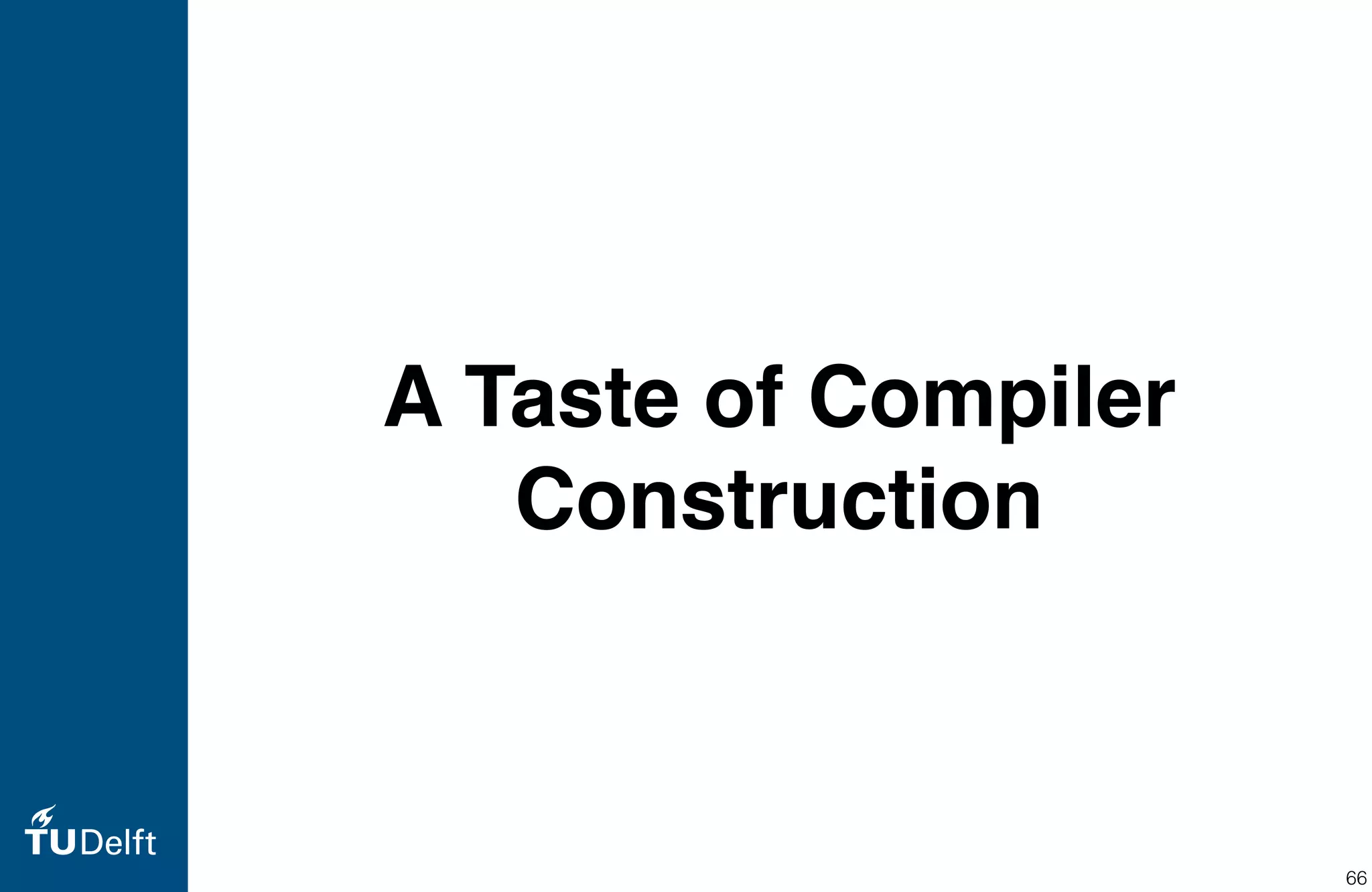
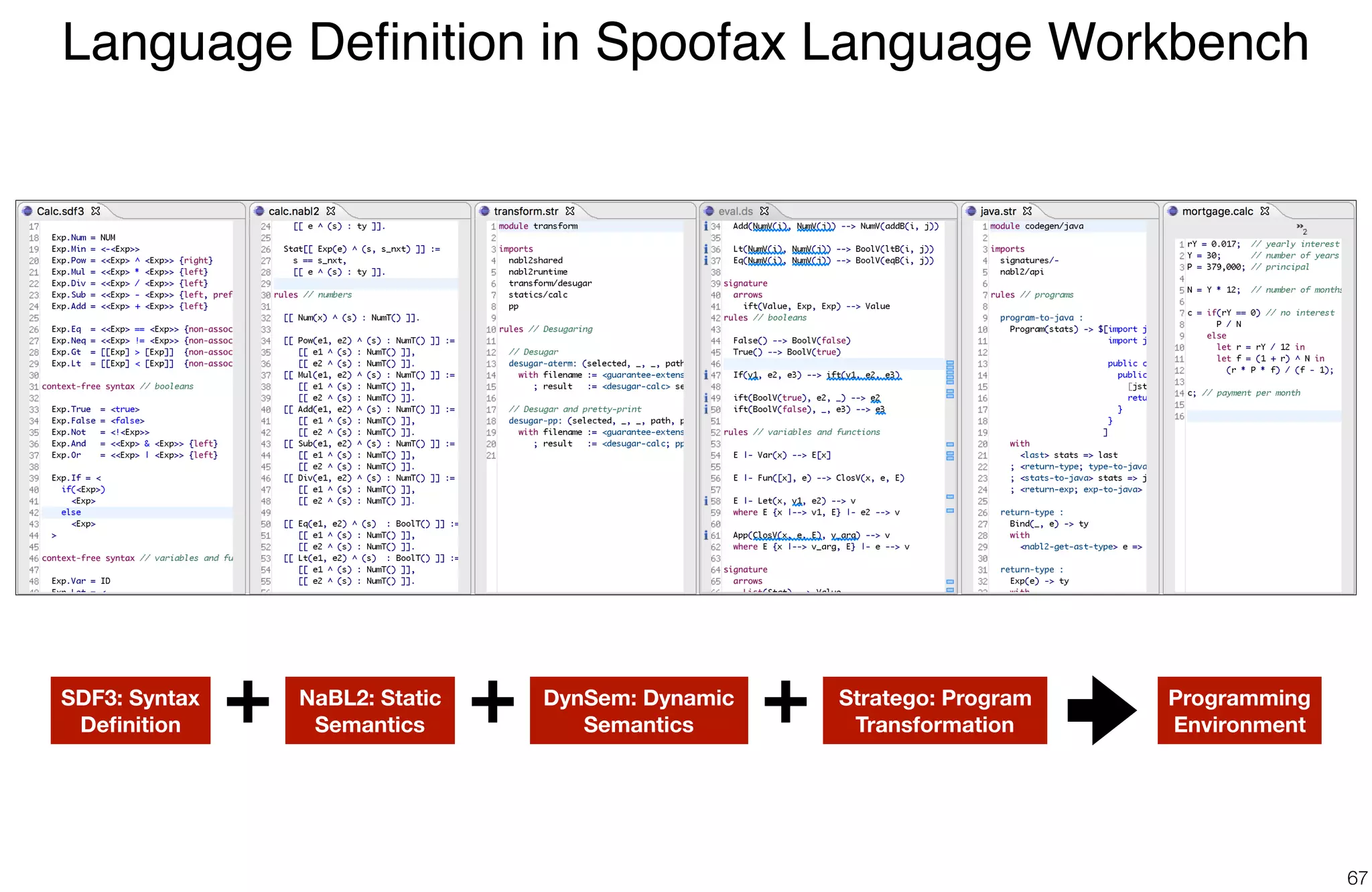
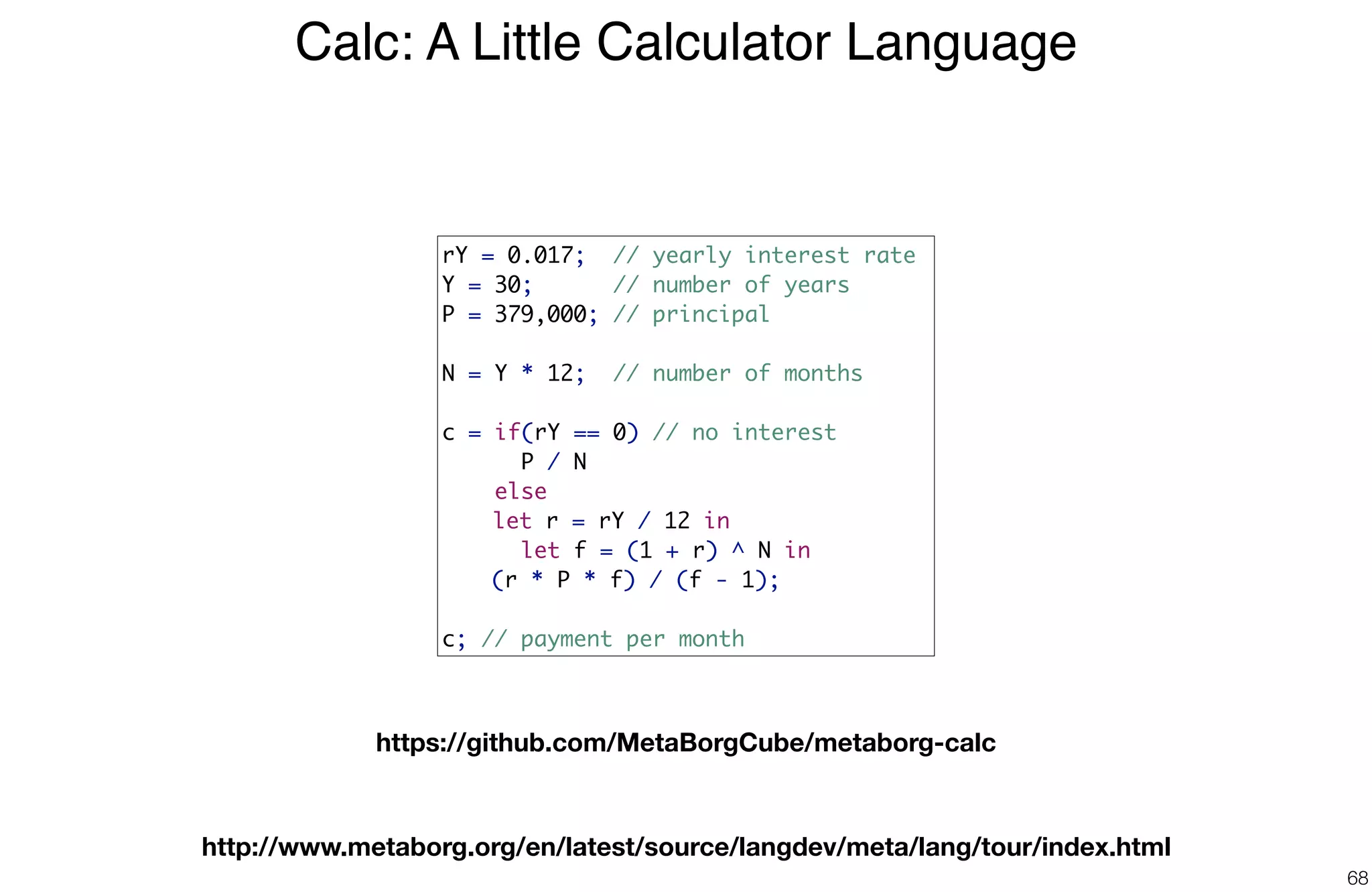
![Calc: Syntax Definition
69
context-free syntax // numbers
Exp = <(<Exp>)> {bracket}
Exp.Num = NUM
Exp.Min = <-<Exp>>
Exp.Pow = <<Exp> ^ <Exp>> {right}
Exp.Mul = <<Exp> * <Exp>> {left}
Exp.Div = <<Exp> / <Exp>> {left}
Exp.Sub = <<Exp> - <Exp>> {left, prefer}
Exp.Add = <<Exp> + <Exp>> {left}
Exp.Eq = <<Exp> == <Exp>> {non-assoc}
Exp.Neq = <<Exp> != <Exp>> {non-assoc}
Exp.Gt = [[Exp] > [Exp]] {non-assoc}
Exp.Lt = [[Exp] < [Exp]] {non-assoc}
context-free syntax // variables and functions
Exp.Var = ID
Exp.Let = <
let <ID> = <Exp> in
<Exp>
>
Exp.Fun = < <ID+> . <Exp>>
Exp.App = <<Exp> <Exp>> {left}](https://image.slidesharecdn.com/dyl-introduction-170911124609/75/Declare-Your-Language-What-is-a-Compiler-69-2048.jpg)
![Calc: Type System
70
rules // numbers
[[ Num(x) ^ (s) : NumT() ]].
[[ Pow(e1, e2) ^ (s) : NumT() ]] :=
[[ e1 ^ (s) : NumT() ]],
[[ e2 ^ (s) : NumT() ]].
[[ Mul(e1, e2) ^ (s) : NumT() ]] :=
[[ e1 ^ (s) : NumT() ]],
[[ e2 ^ (s) : NumT() ]].
[[ Add(e1, e2) ^ (s) : NumT() ]] :=
[[ e1 ^ (s) : NumT() ]],
[[ e2 ^ (s) : NumT() ]].
rules // variables and functions
[[ Var(x) ^ (s) : ty ]] :=
{x} -> s, {x} |-> d, d : ty.
[[ Let(x, e1, e2) ^ (s) : ty2 ]] :=
new s_let, {x} <- s_let, {x} : ty, s_let -P-> s,
[[ e1 ^ (s) : ty ]],
[[ e2 ^ (s_let) : ty2 ]].
[[ Fun([x], e) ^ (s) : FunT(ty1, ty2) ]] :=
new s_fun, {x} <- s_fun, {x} : ty1, s_fun -P-> s,
[[ e ^ (s_fun) : ty2 ]].
[[ App(e1, e2) ^ (s) : ty_res ]] :=
[[ e1 ^ (s) : ty_fun ]],
[[ e2 ^ (s) : ty_arg ]],
FunT(ty_arg, ty_res) instOf ty_fun.](https://image.slidesharecdn.com/dyl-introduction-170911124609/75/Declare-Your-Language-What-is-a-Compiler-70-2048.jpg)
![Calc: Dynamic Semantics
71
rules // numbers
Num(n) --> NumV(parseB(n))
Pow(NumV(i), NumV(j)) --> NumV(powB(i, j))
Mul(NumV(i), NumV(j)) --> NumV(mulB(i, j))
Div(NumV(i), NumV(j)) --> NumV(divB(i, j))
Sub(NumV(i), NumV(j)) --> NumV(subB(i, j))
Add(NumV(i), NumV(j)) --> NumV(addB(i, j))
Lt(NumV(i), NumV(j)) --> BoolV(ltB(i, j))
Eq(NumV(i), NumV(j)) --> BoolV(eqB(i, j))
rules // variables and functions
E |- Var(x) --> E[x]
E |- Fun([x], e) --> ClosV(x, e, E)
E |- Let(x, v1, e2) --> v
where E {x |--> v1, E} |- e2 --> v
App(ClosV(x, e, E), v_arg) --> v
where E {x |--> v_arg, E} |- e --> v](https://image.slidesharecdn.com/dyl-introduction-170911124609/75/Declare-Your-Language-What-is-a-Compiler-71-2048.jpg)
![Calc: Code Generation
72
rules // numbers
exp-to-java : Num(v) -> $[BigDecimal.valueOf([v])]
exp-to-java :
Add(e1, e2) -> $[[je1].add([je2])]
with
<exp-to-java> e1 => je1
; <exp-to-java> e2 => je2
exp-to-java :
Sub(e1, e2) -> $[[je1].subtract([je2])]
with
<exp-to-java> e1 => je1
; <exp-to-java> e2 => je2
rules // variables and functions
exp-to-java : Var(x) -> $[[x]]
exp-to-java :
Let(x, e1, e2) -> $[(([jty]) [x] -> [je2]).apply([je1])]
with
<nabl2-get-ast-type> e1 => ty1
; <nabl2-get-ast-type> e2 => ty2
; <type-to-java> FunT(ty1, ty2) => jty
; <exp-to-java> e1 => je1
; <exp-to-java> e2 => je2
exp-to-java :
f@Fun([x], e) -> $[(([jty]) [x] -> [je])]
with
<nabl2-get-ast-type> f => ty
; <type-to-java> ty => jty
; <exp-to-java> e => je
exp-to-java:
App(e1, e2) -> $[[e1].apply([e2])]
with
<exp-to-java> e1 => je1
; <exp-to-java> e2 => je2](https://image.slidesharecdn.com/dyl-introduction-170911124609/75/Declare-Your-Language-What-is-a-Compiler-72-2048.jpg)
